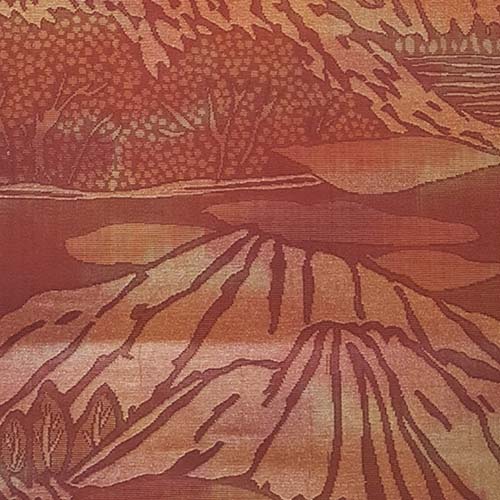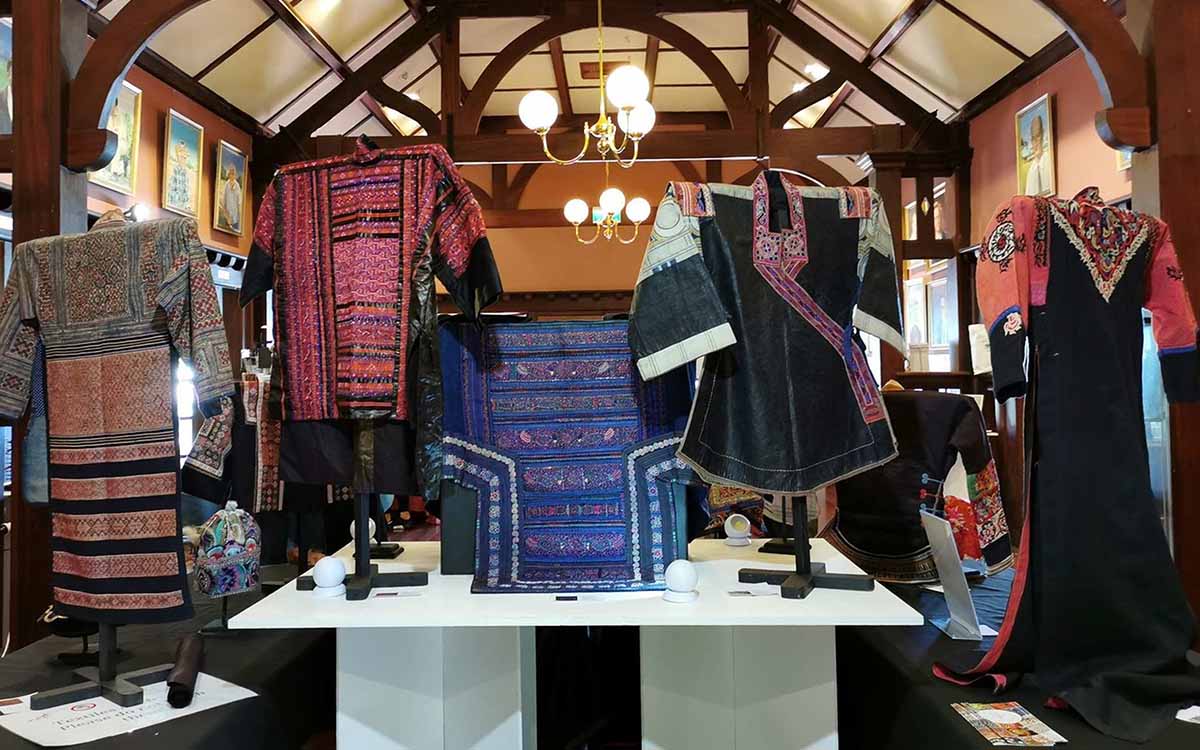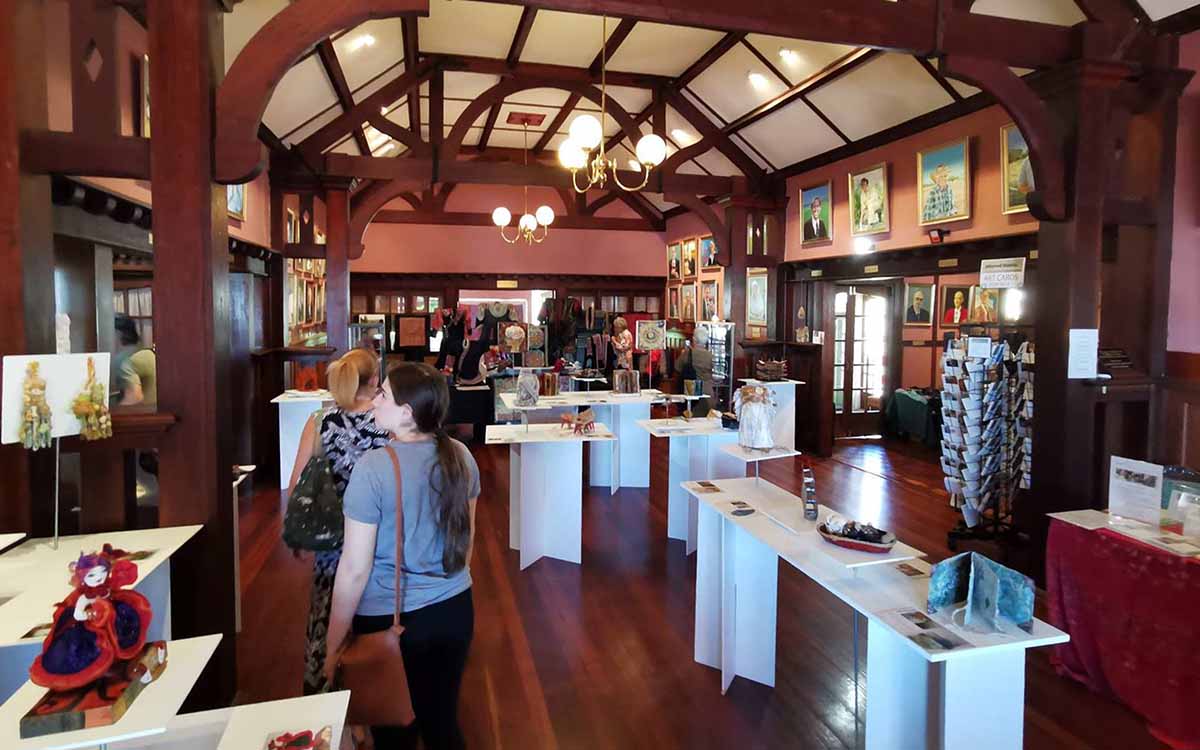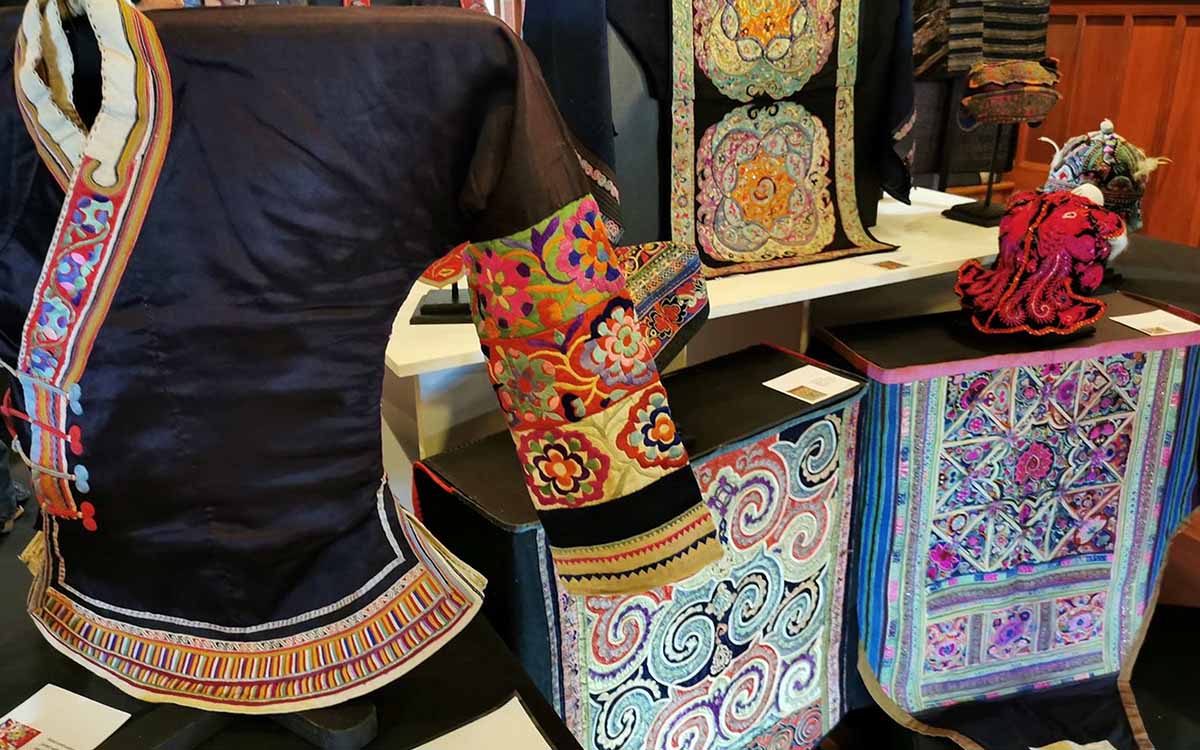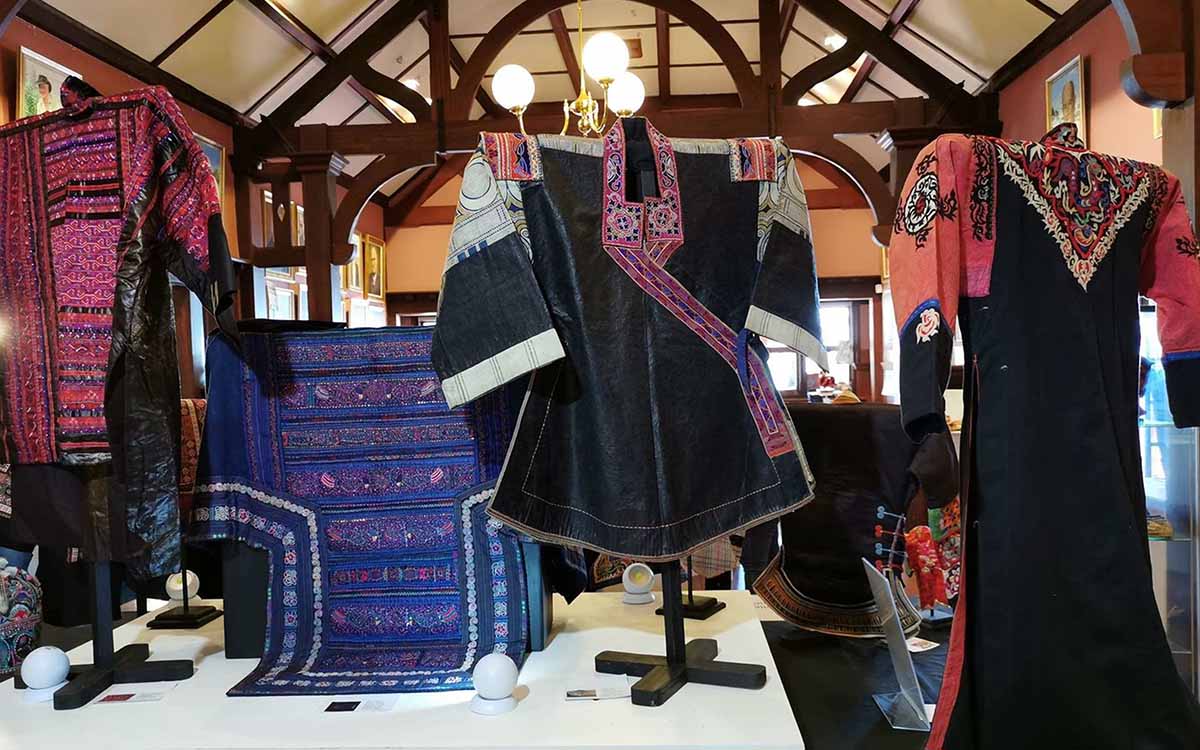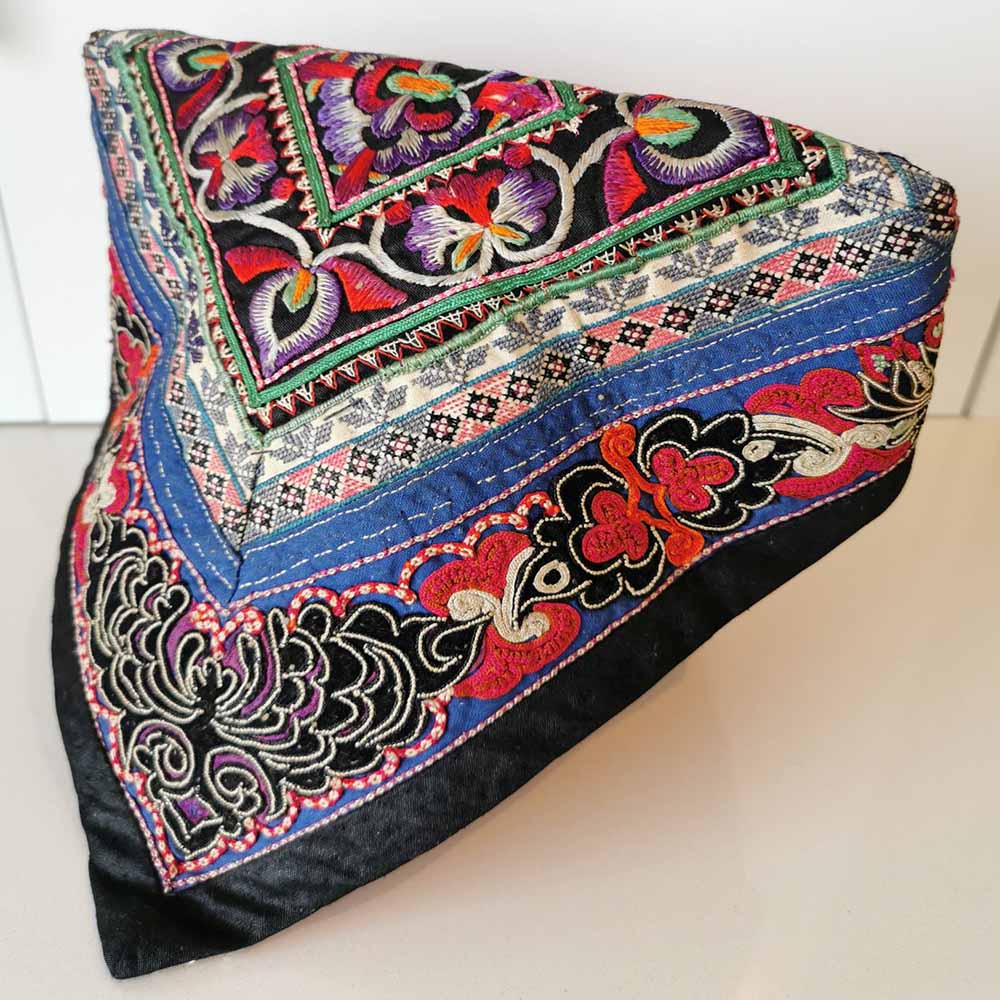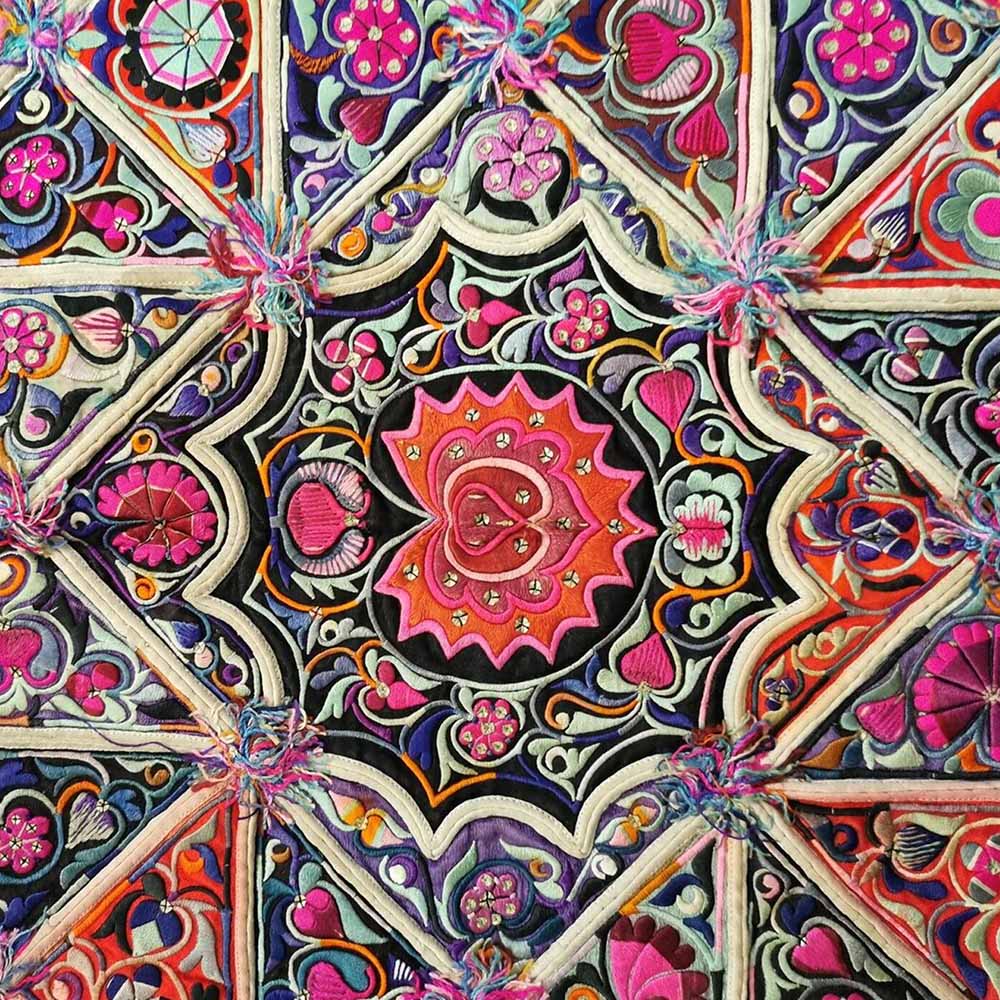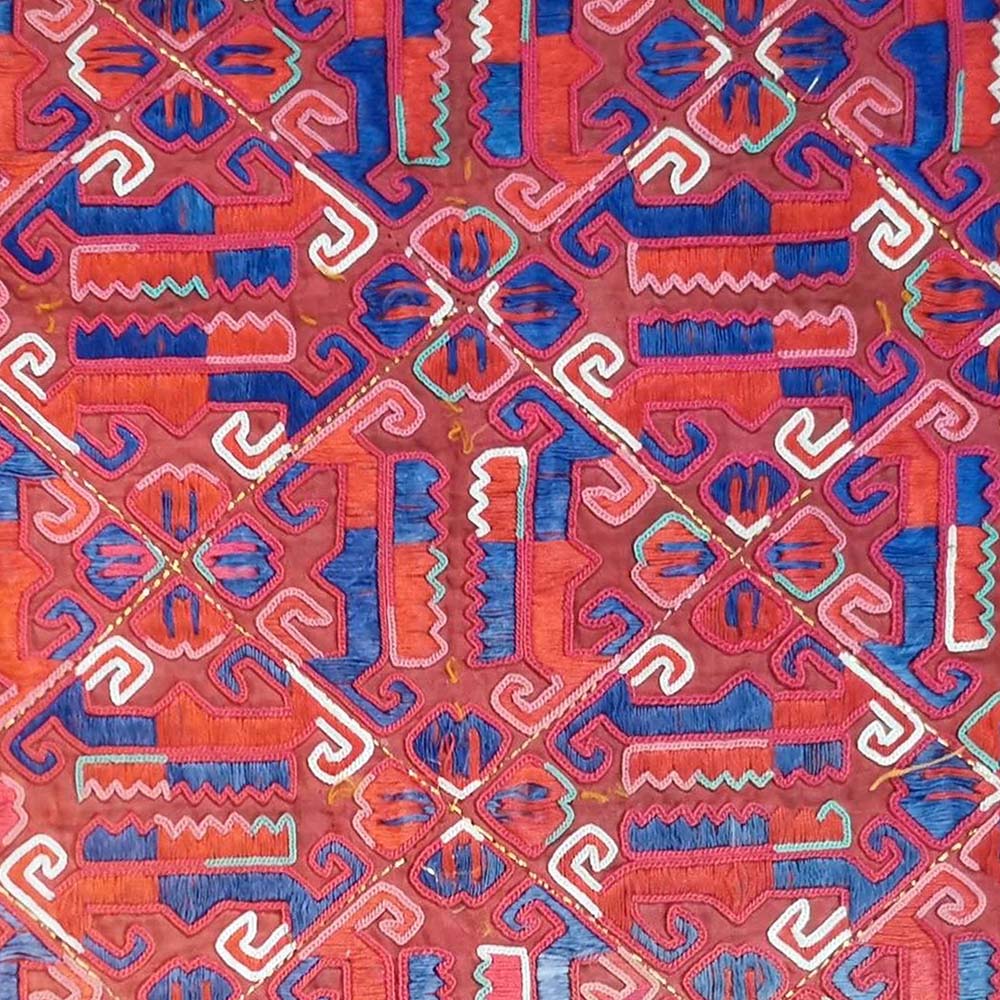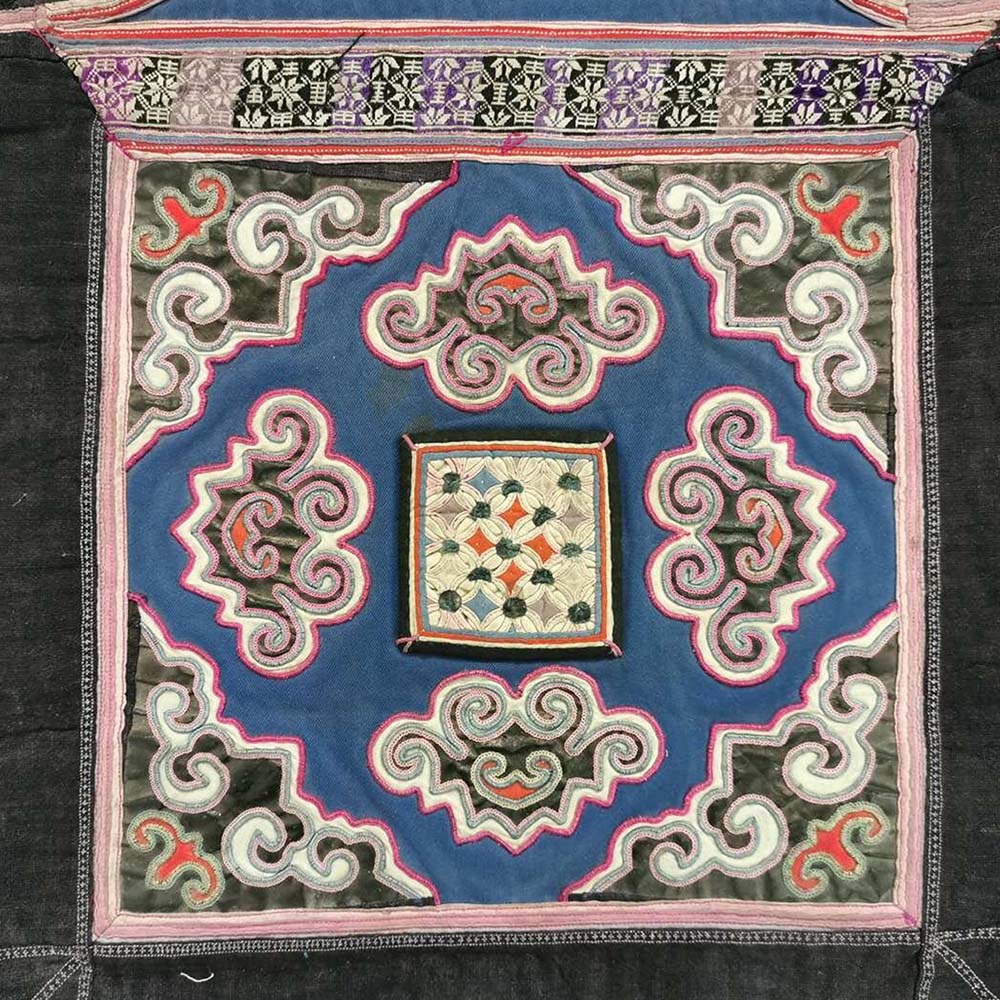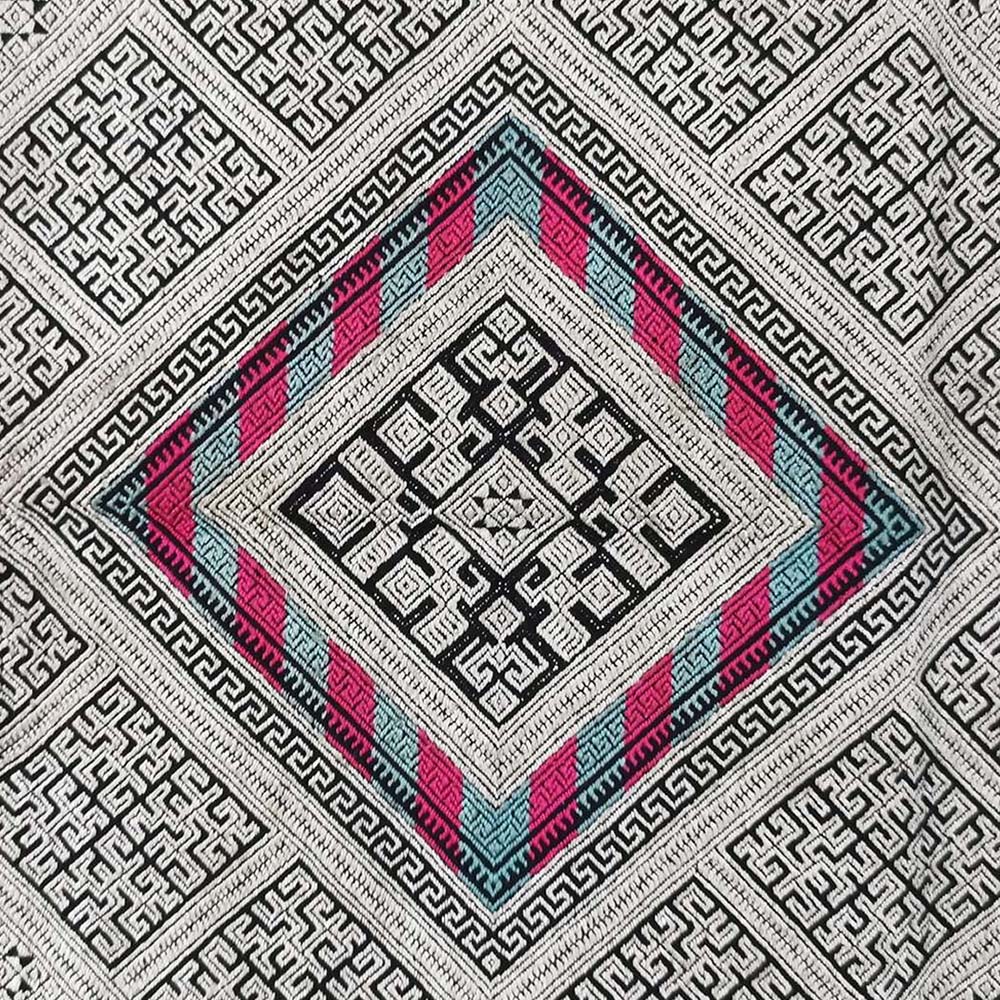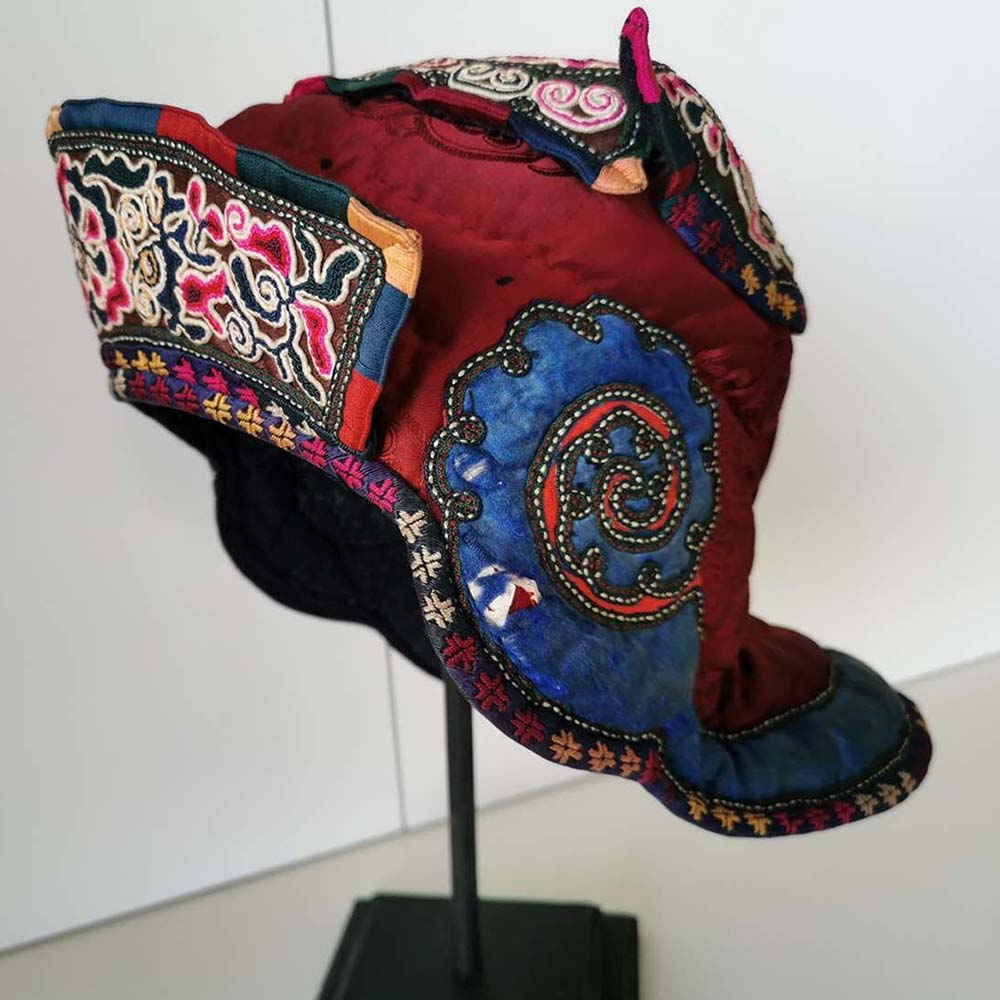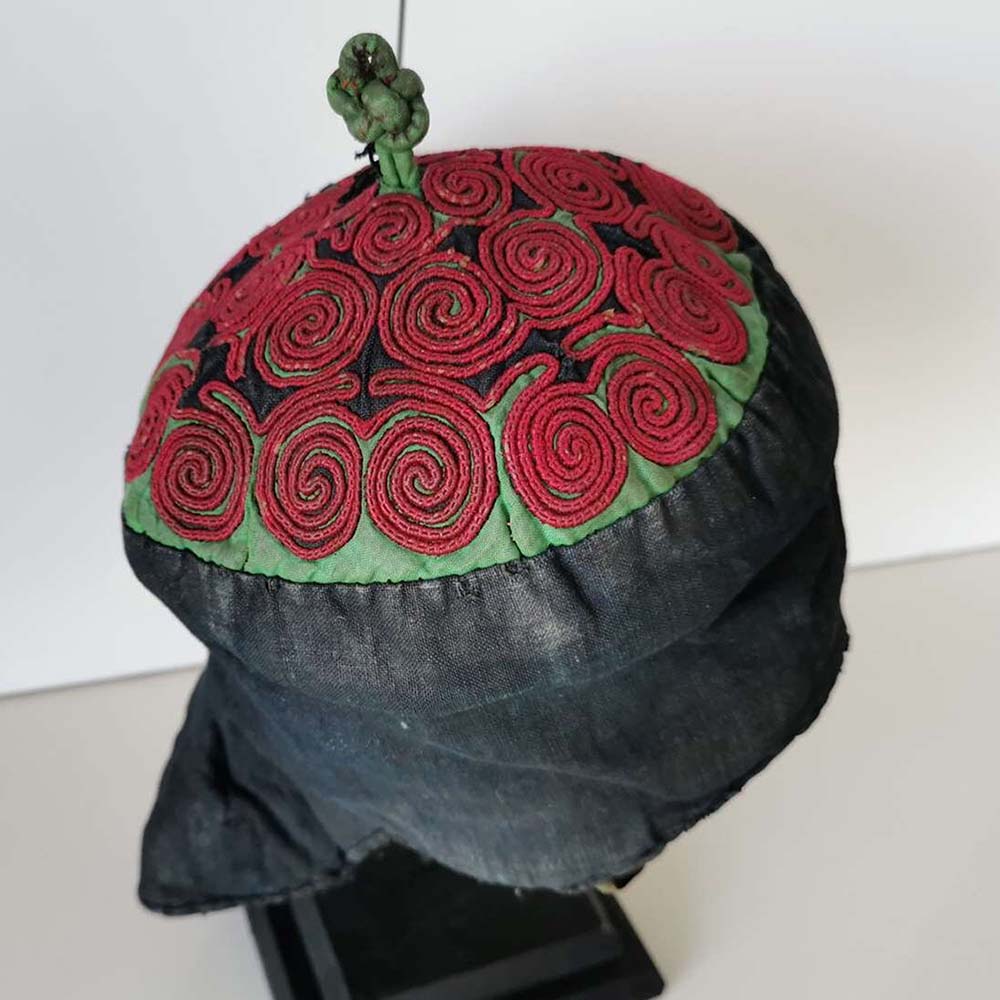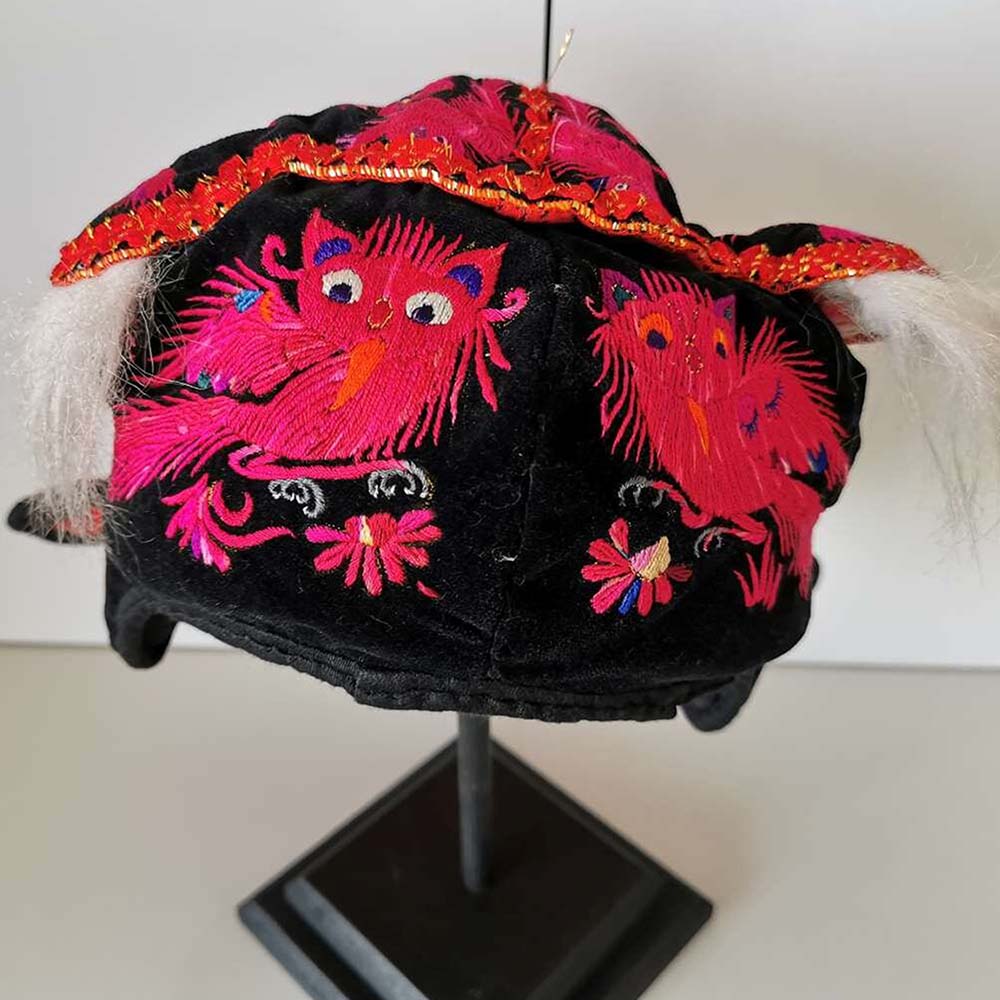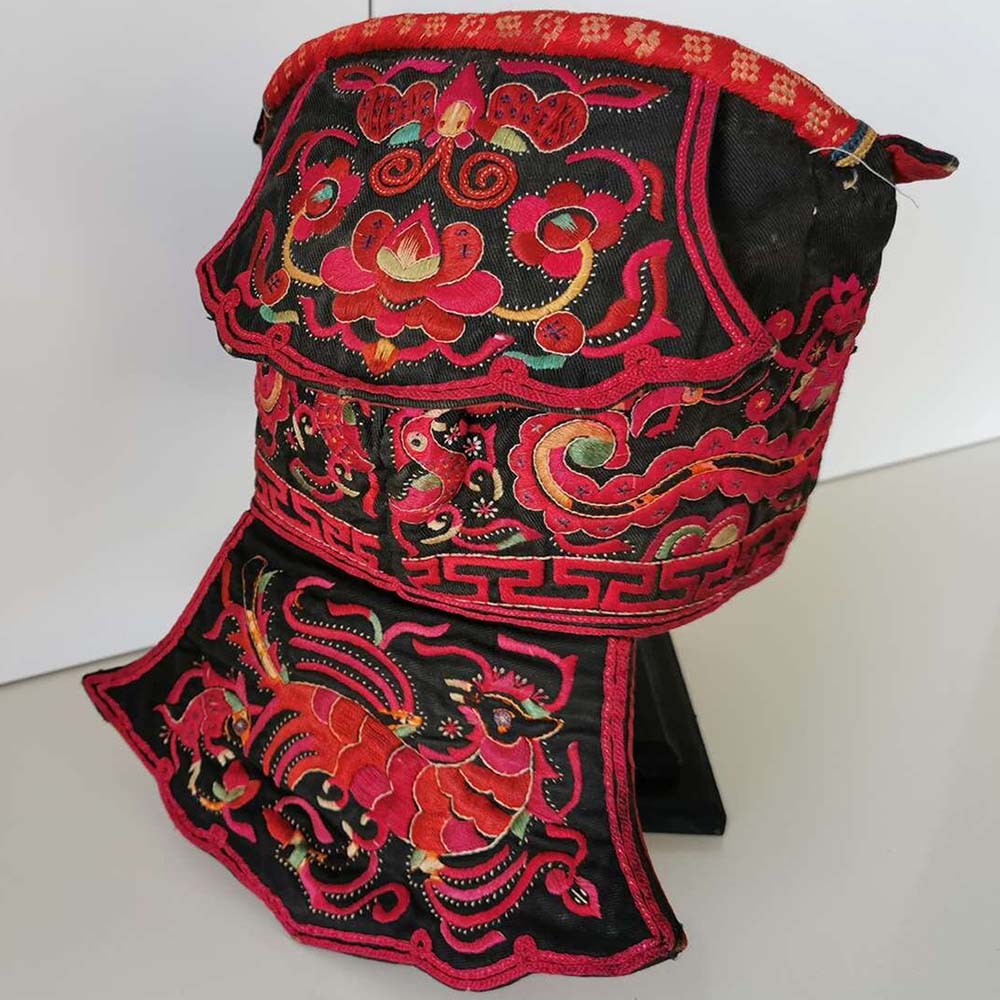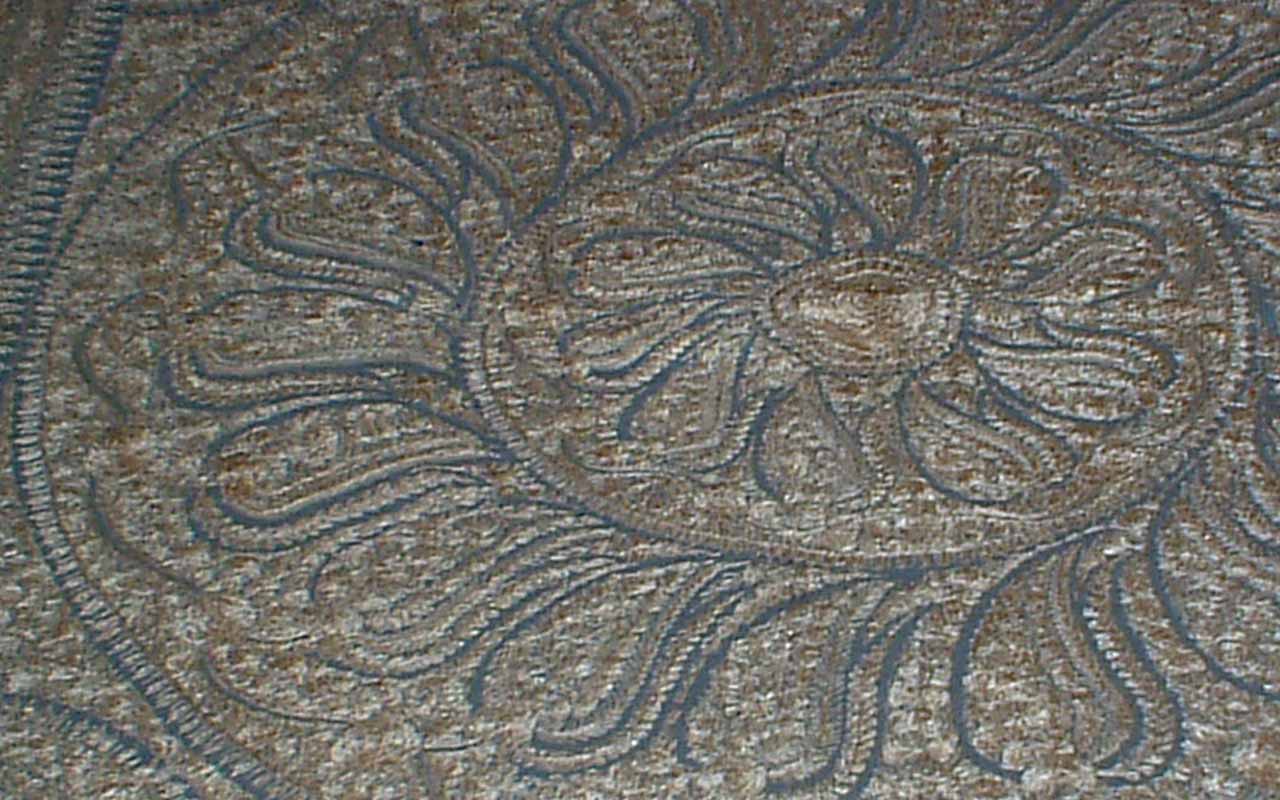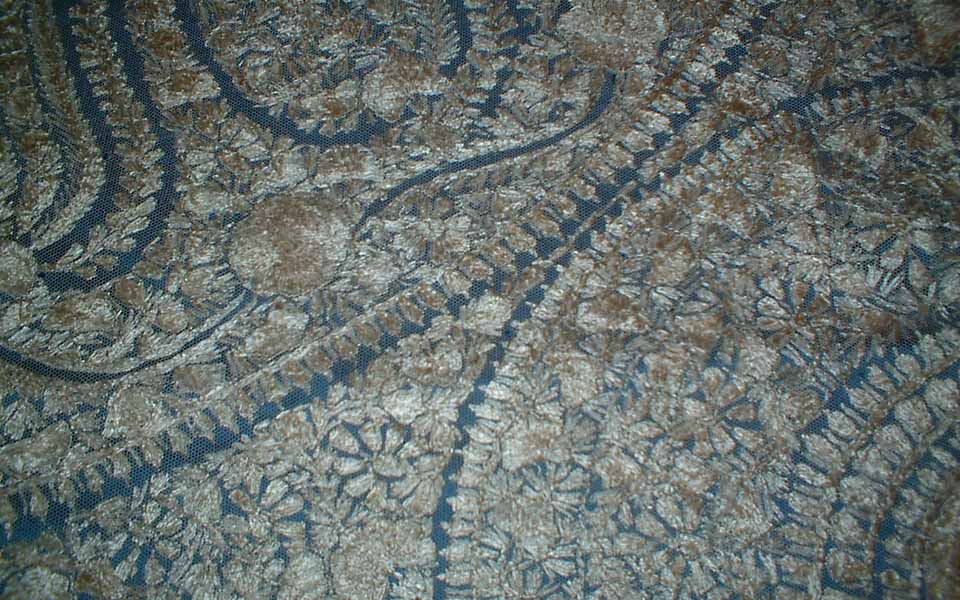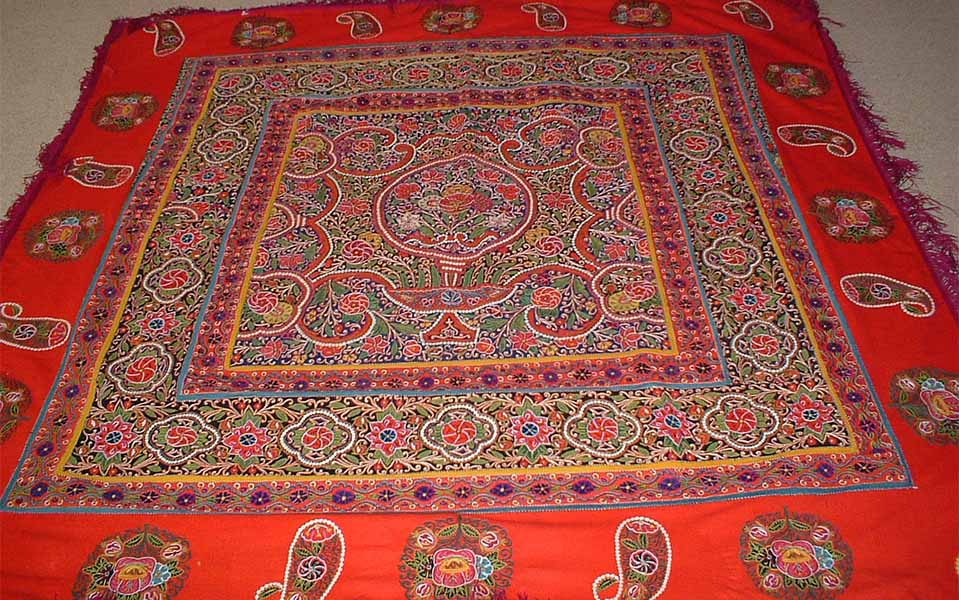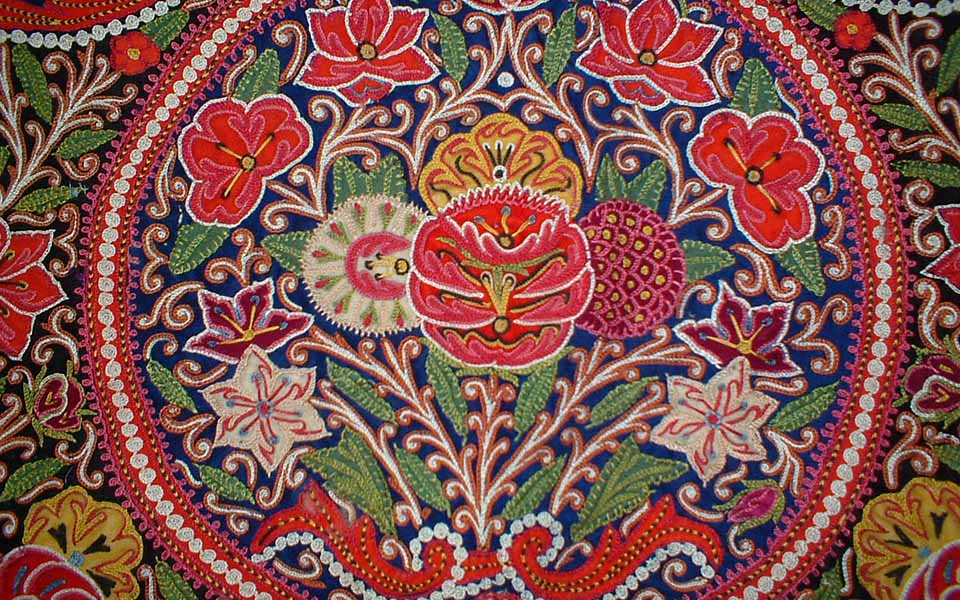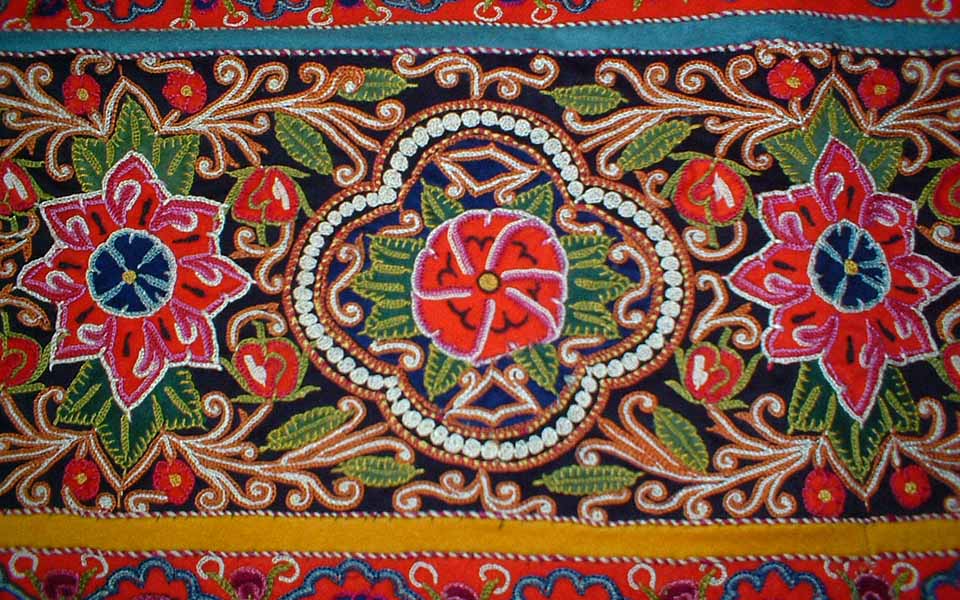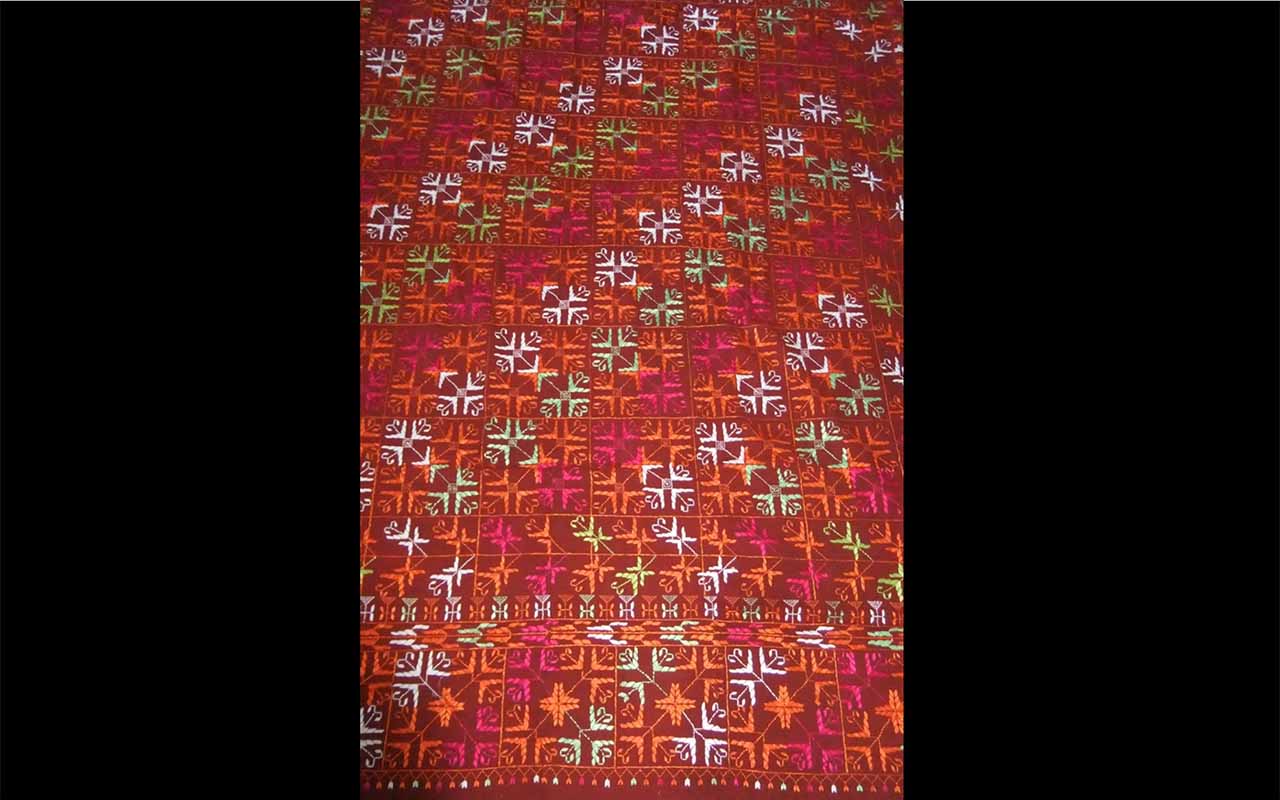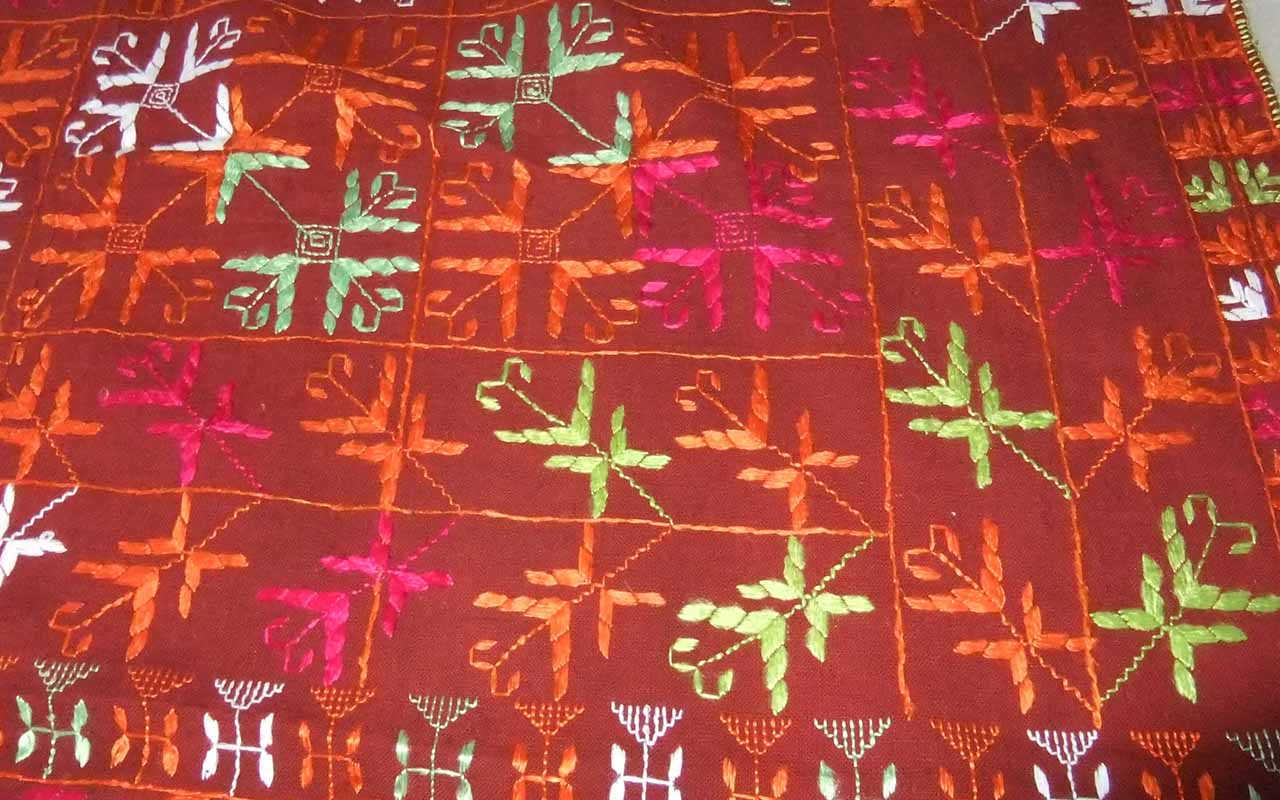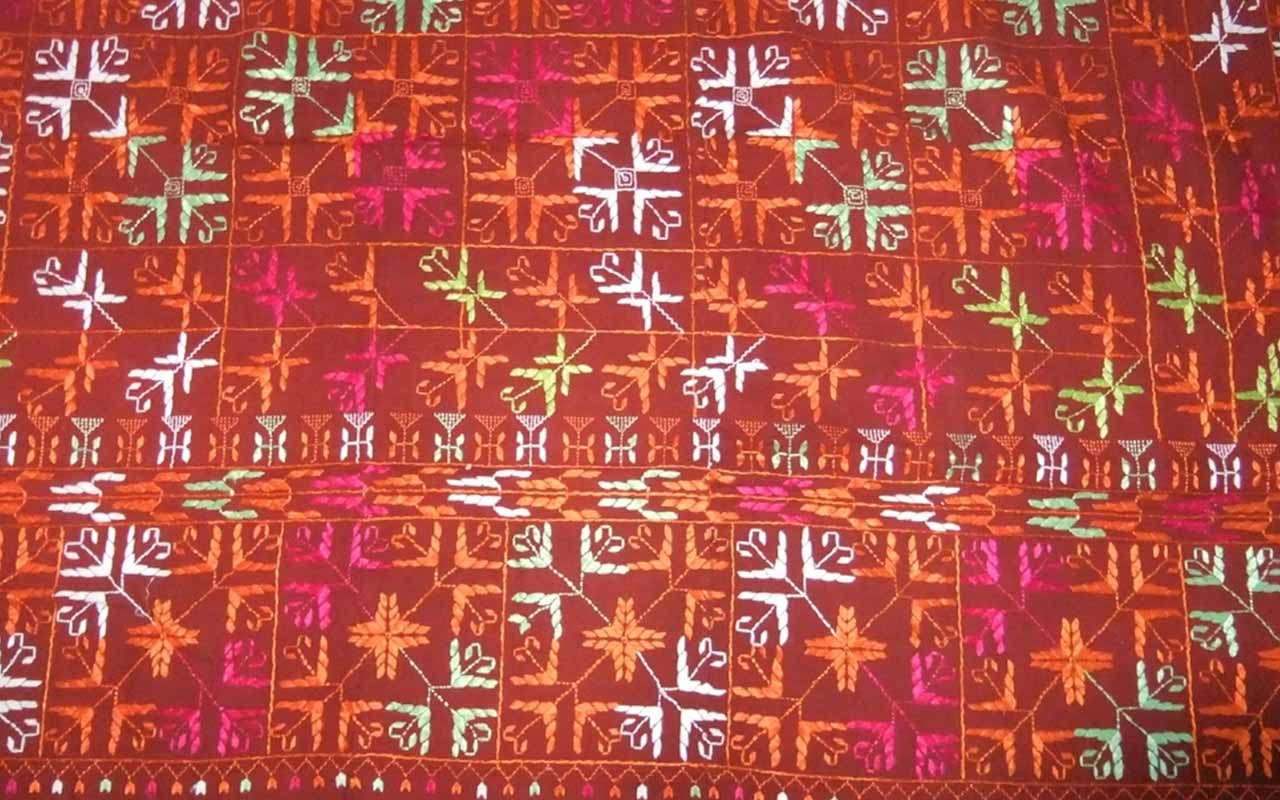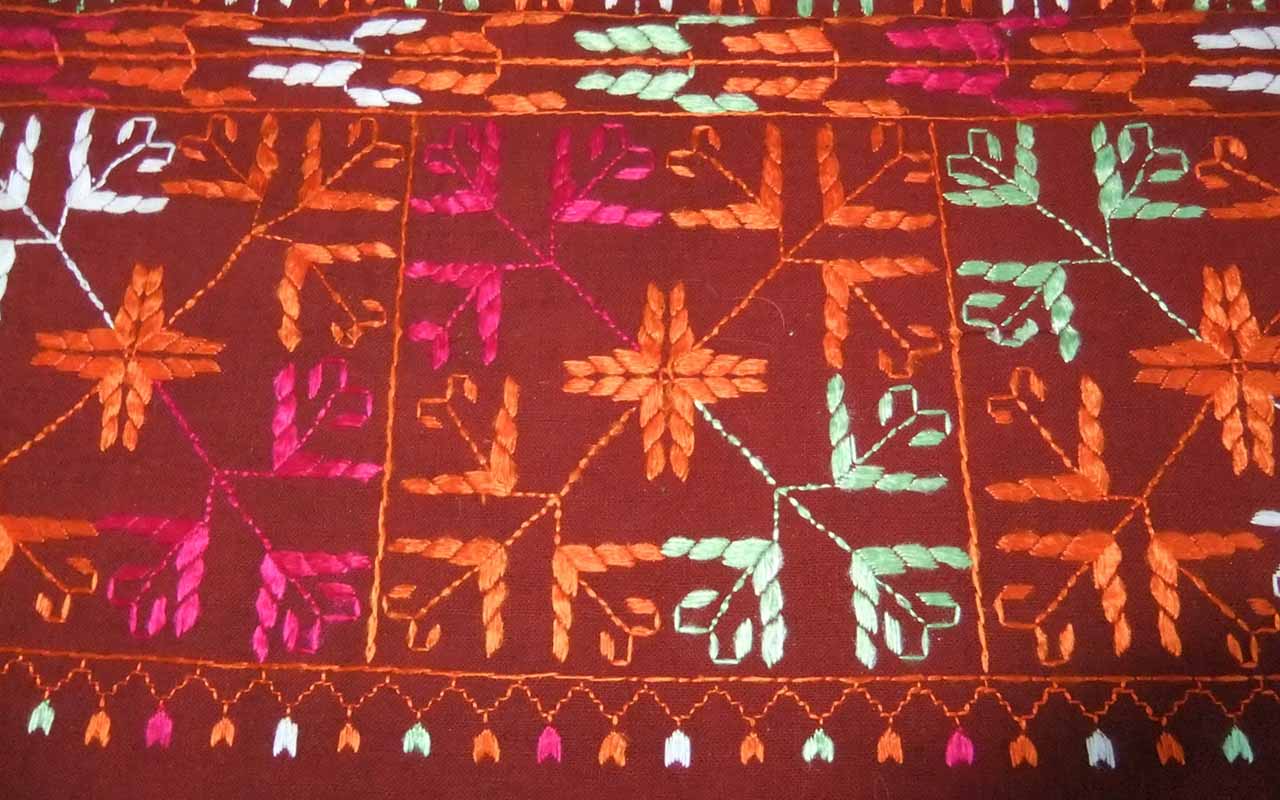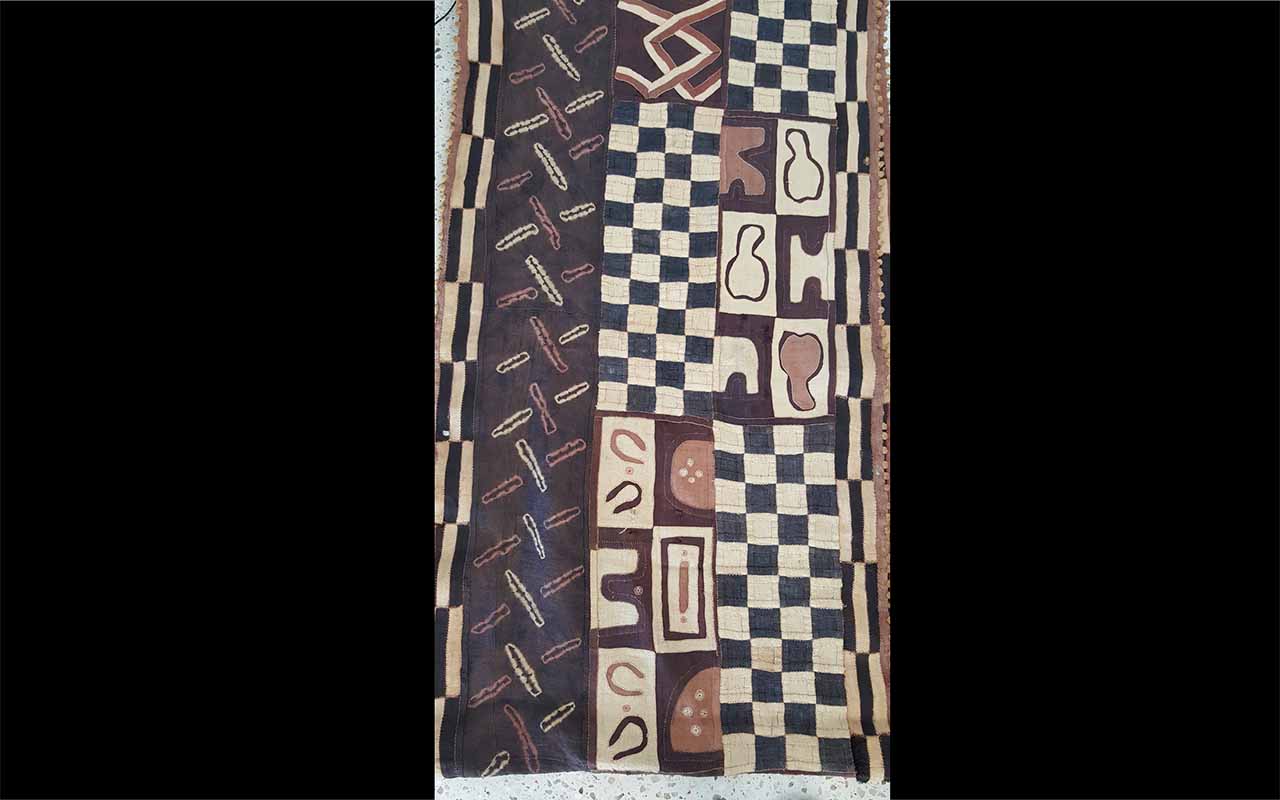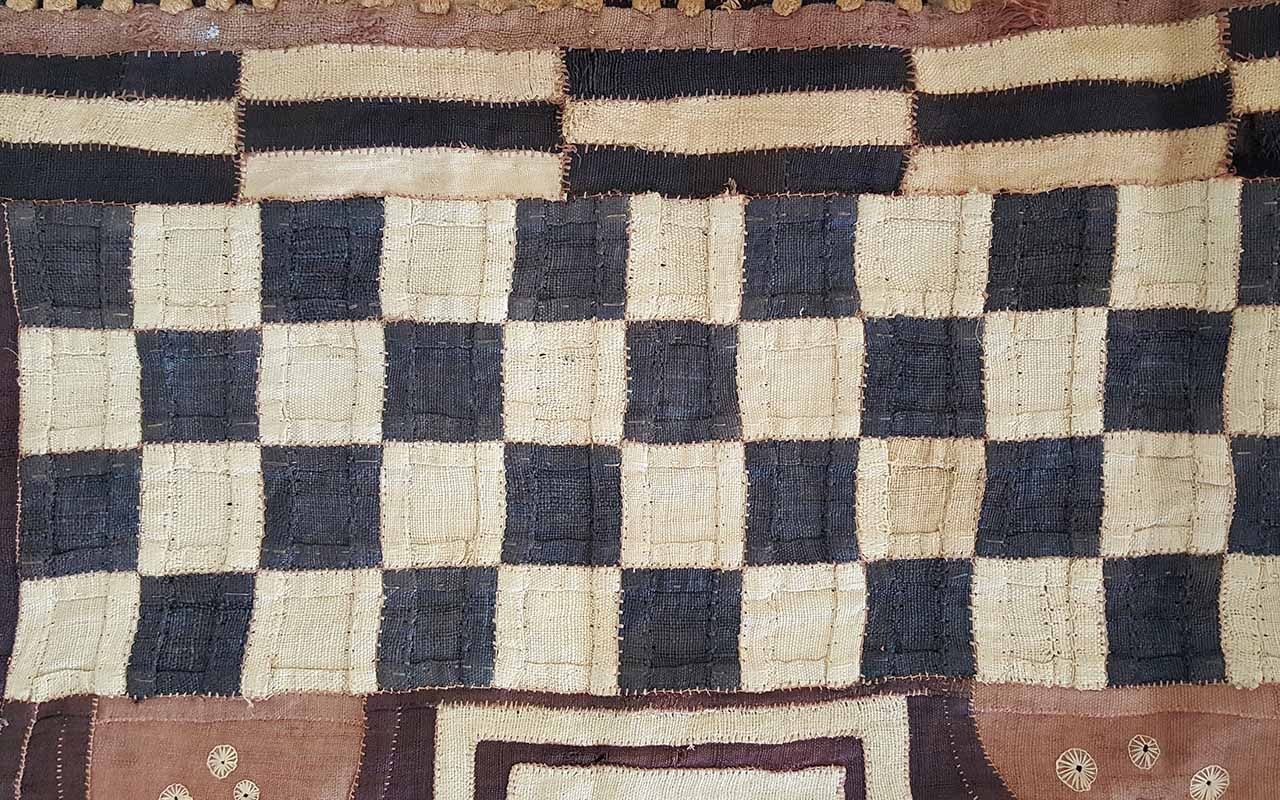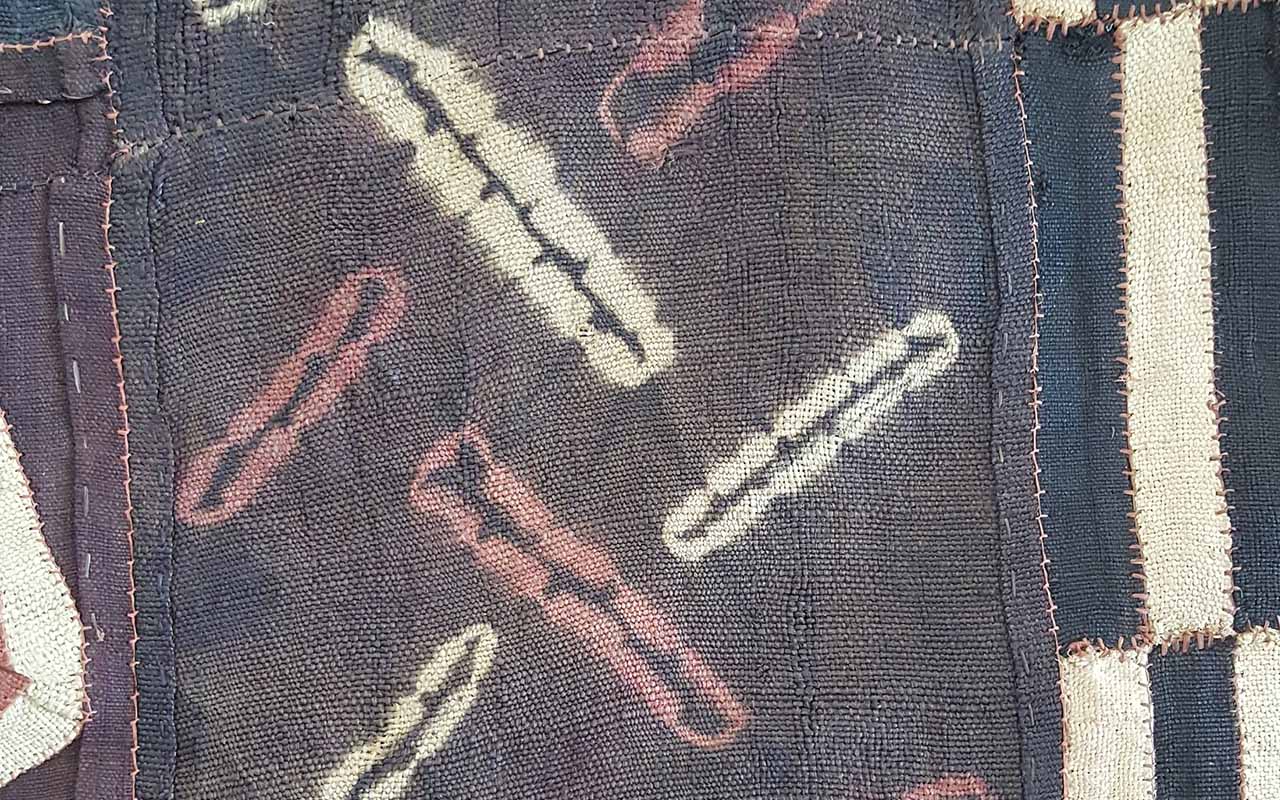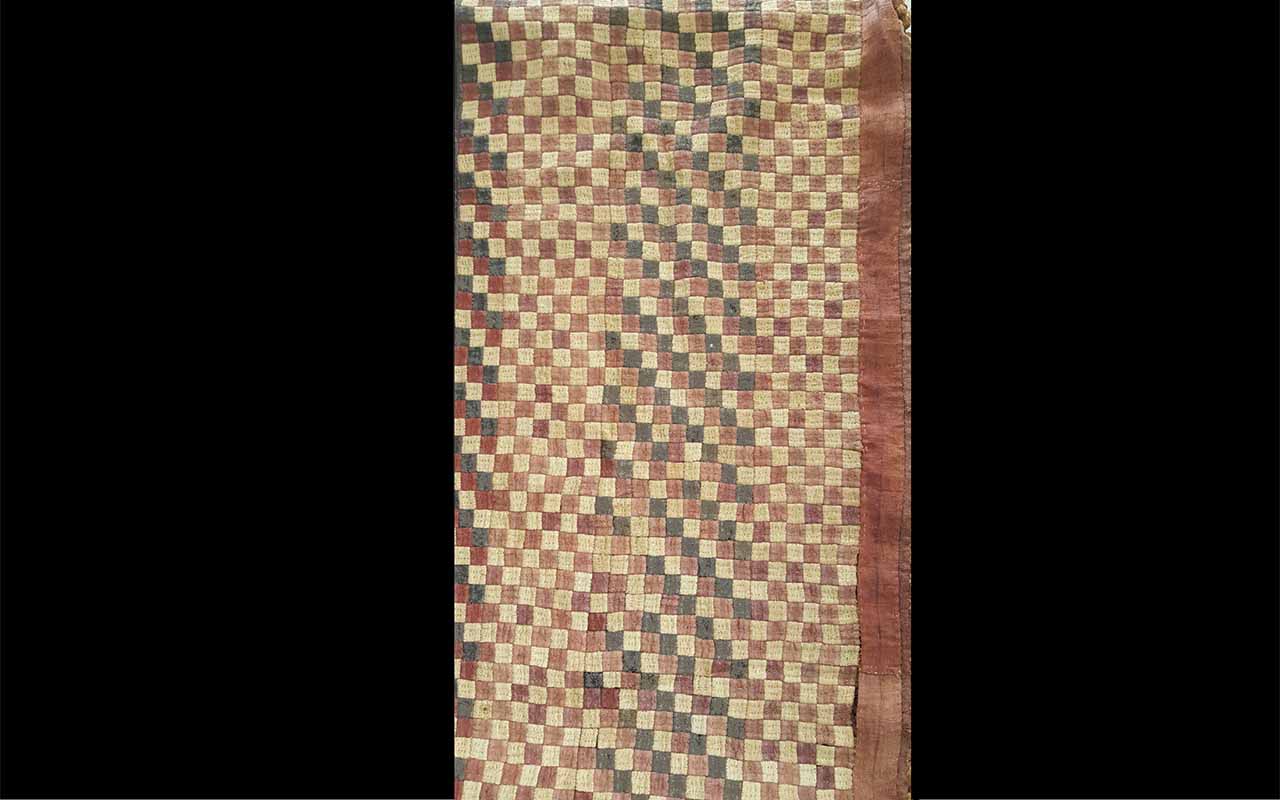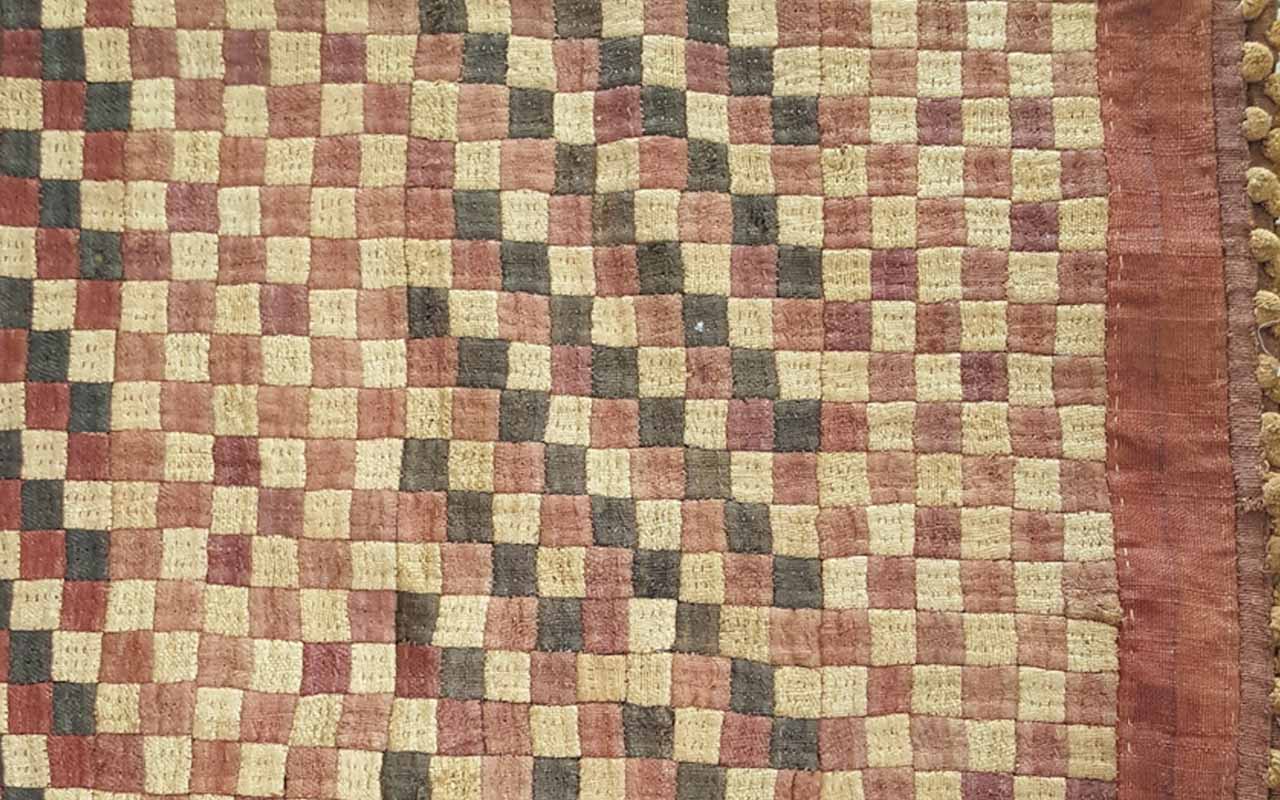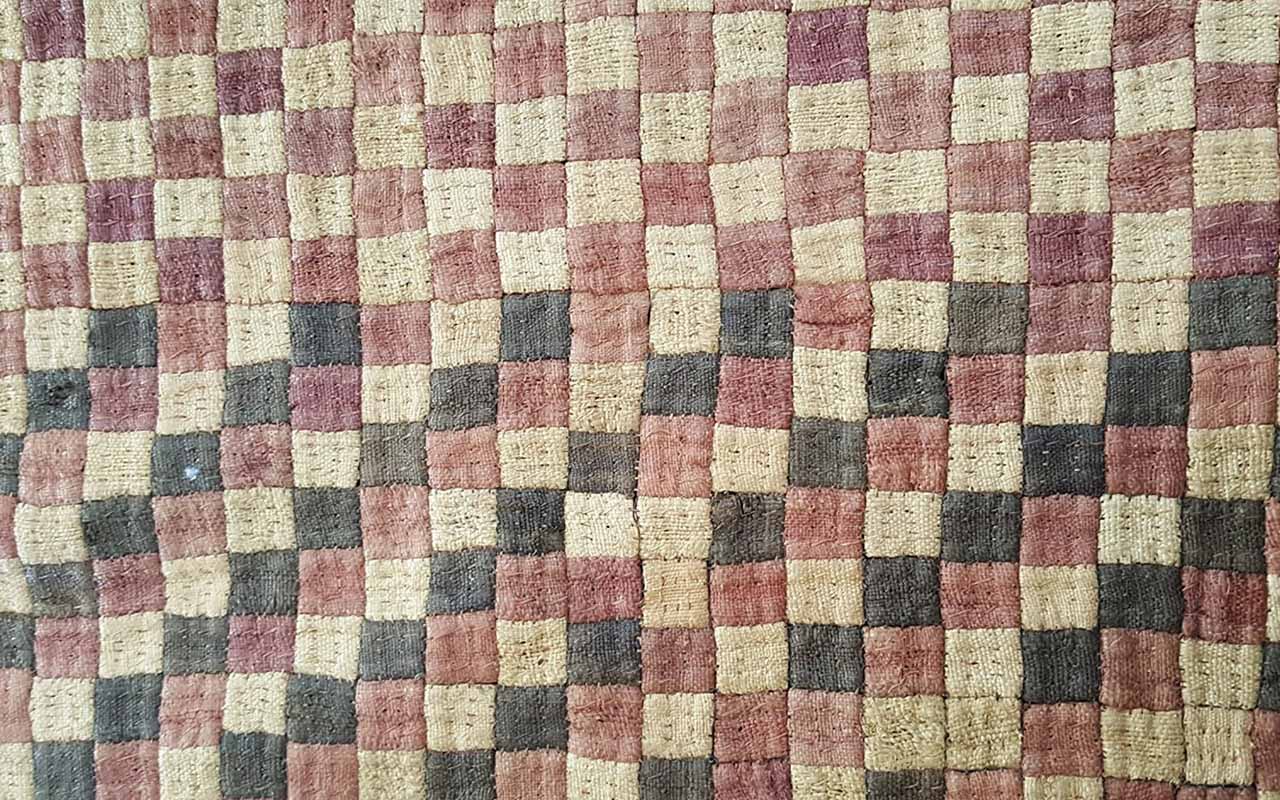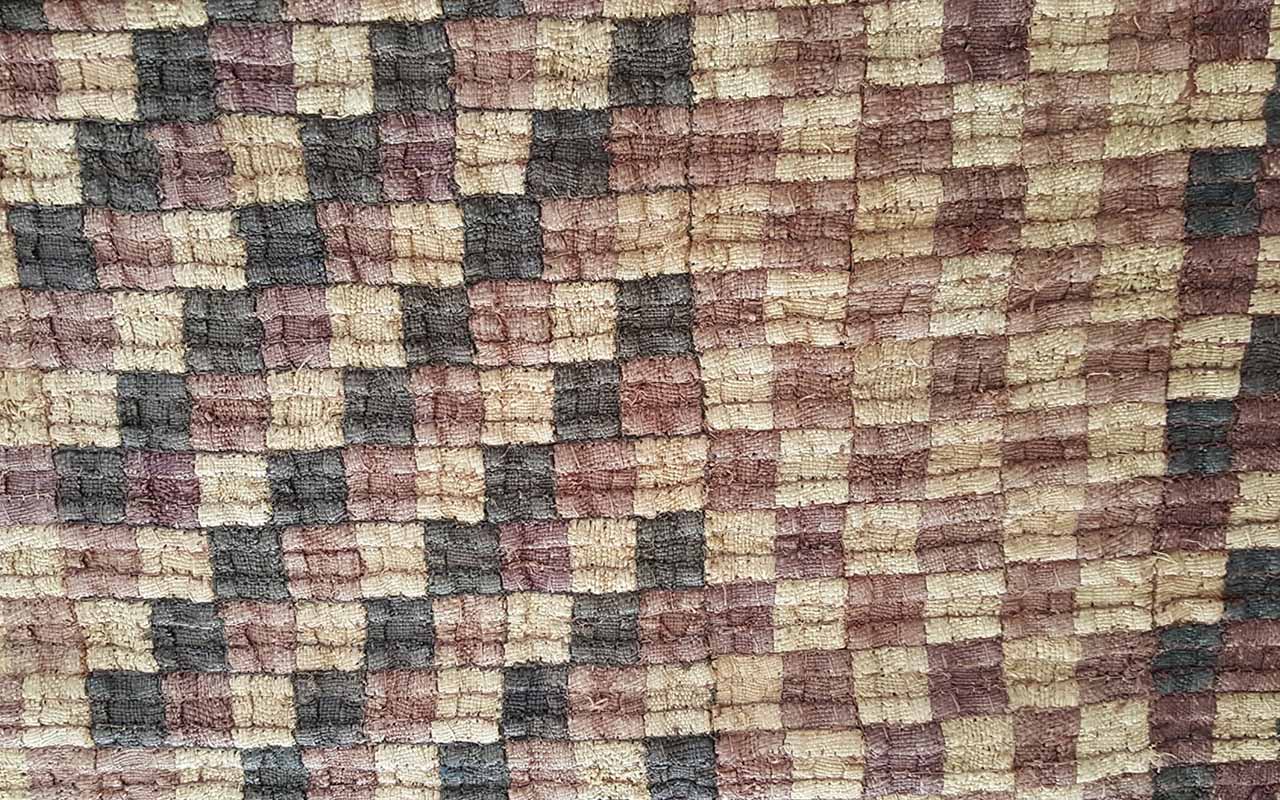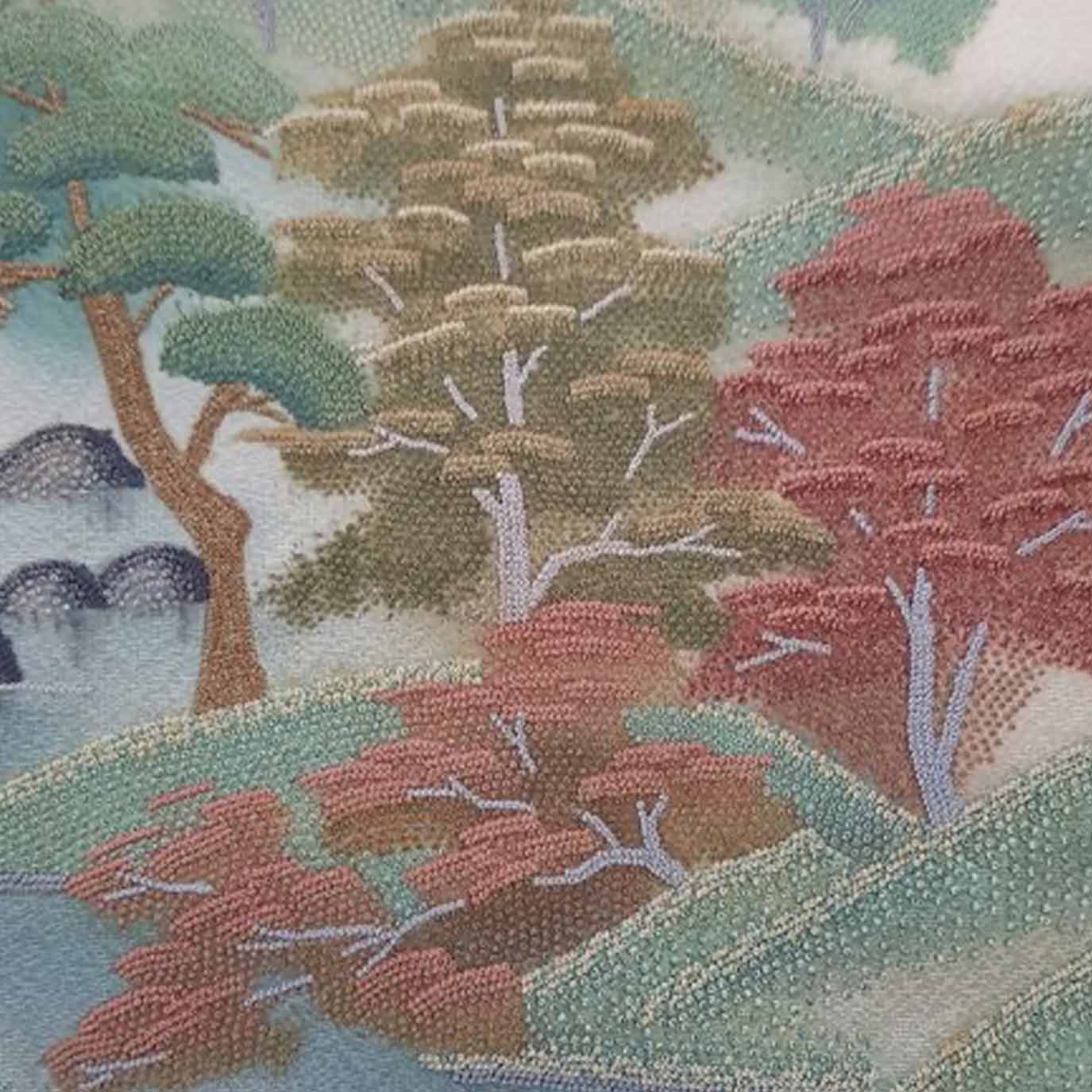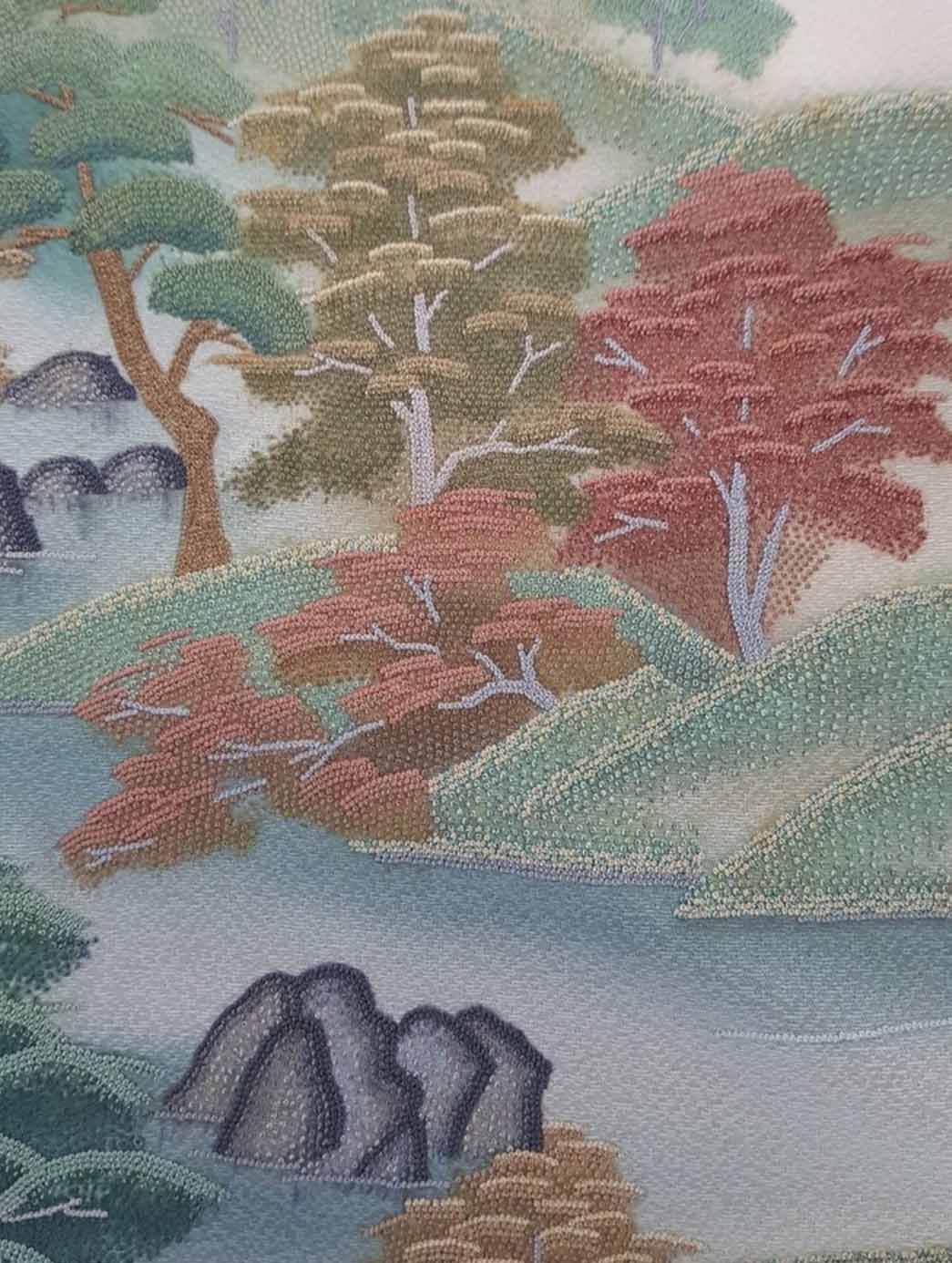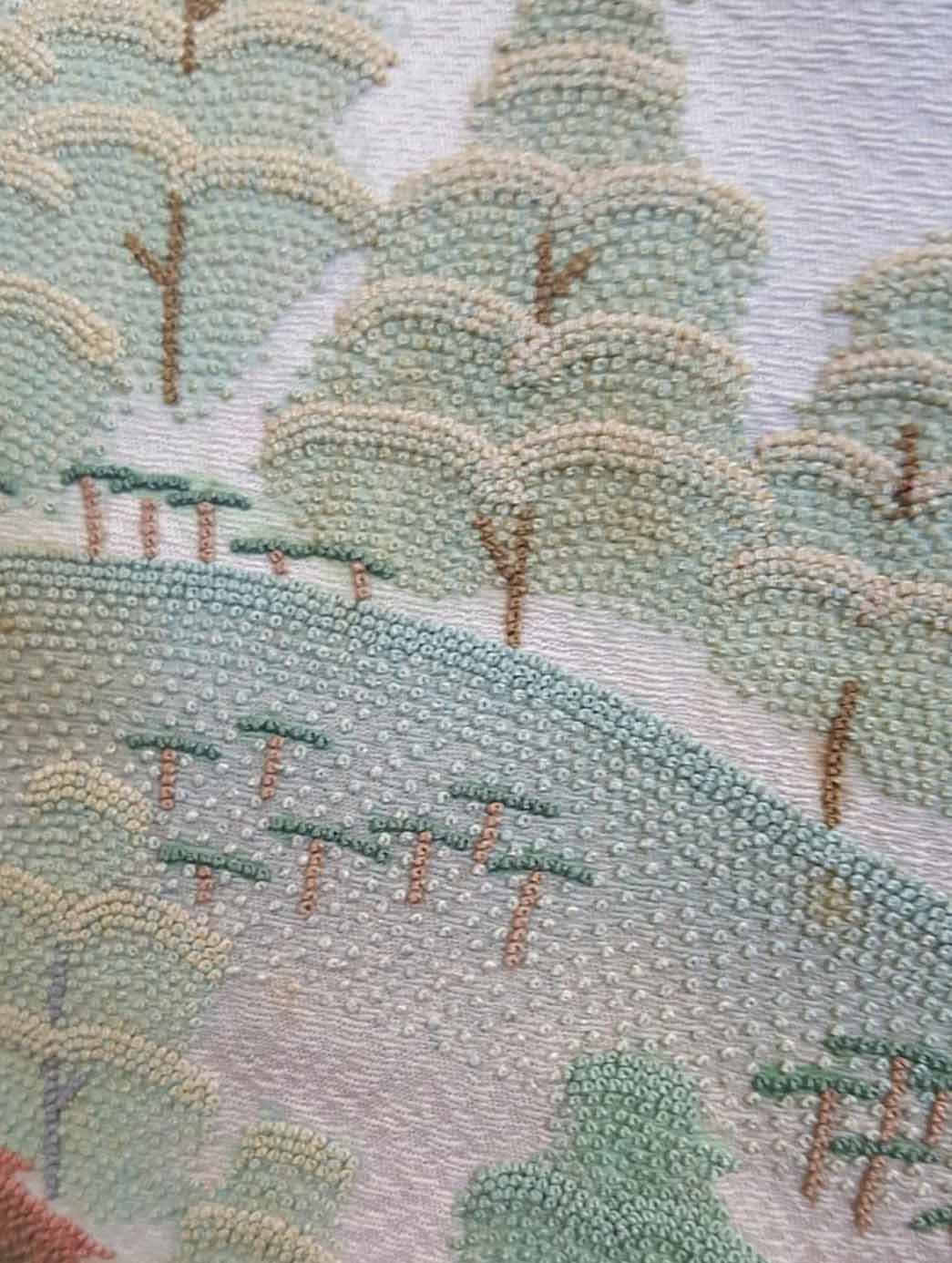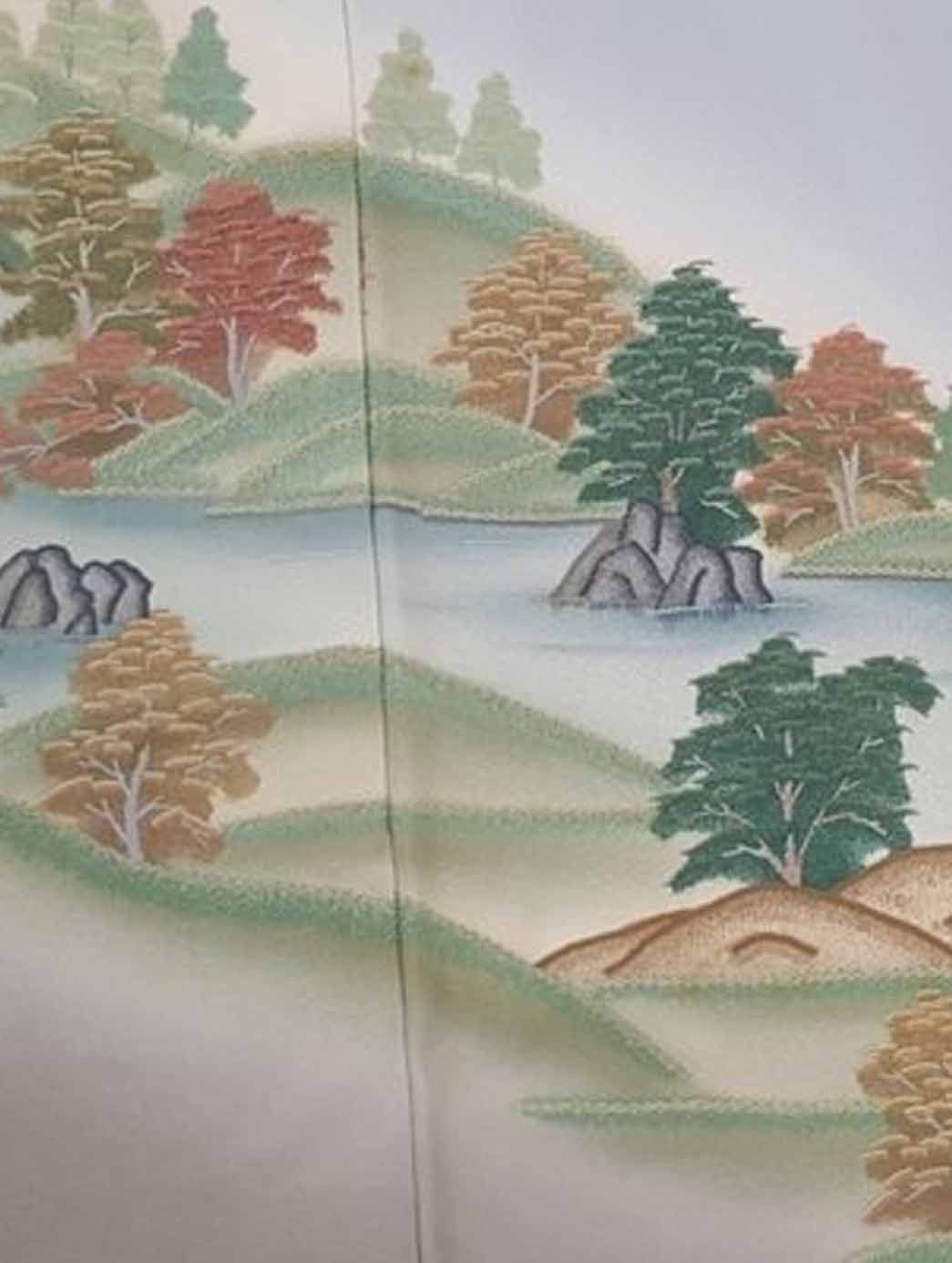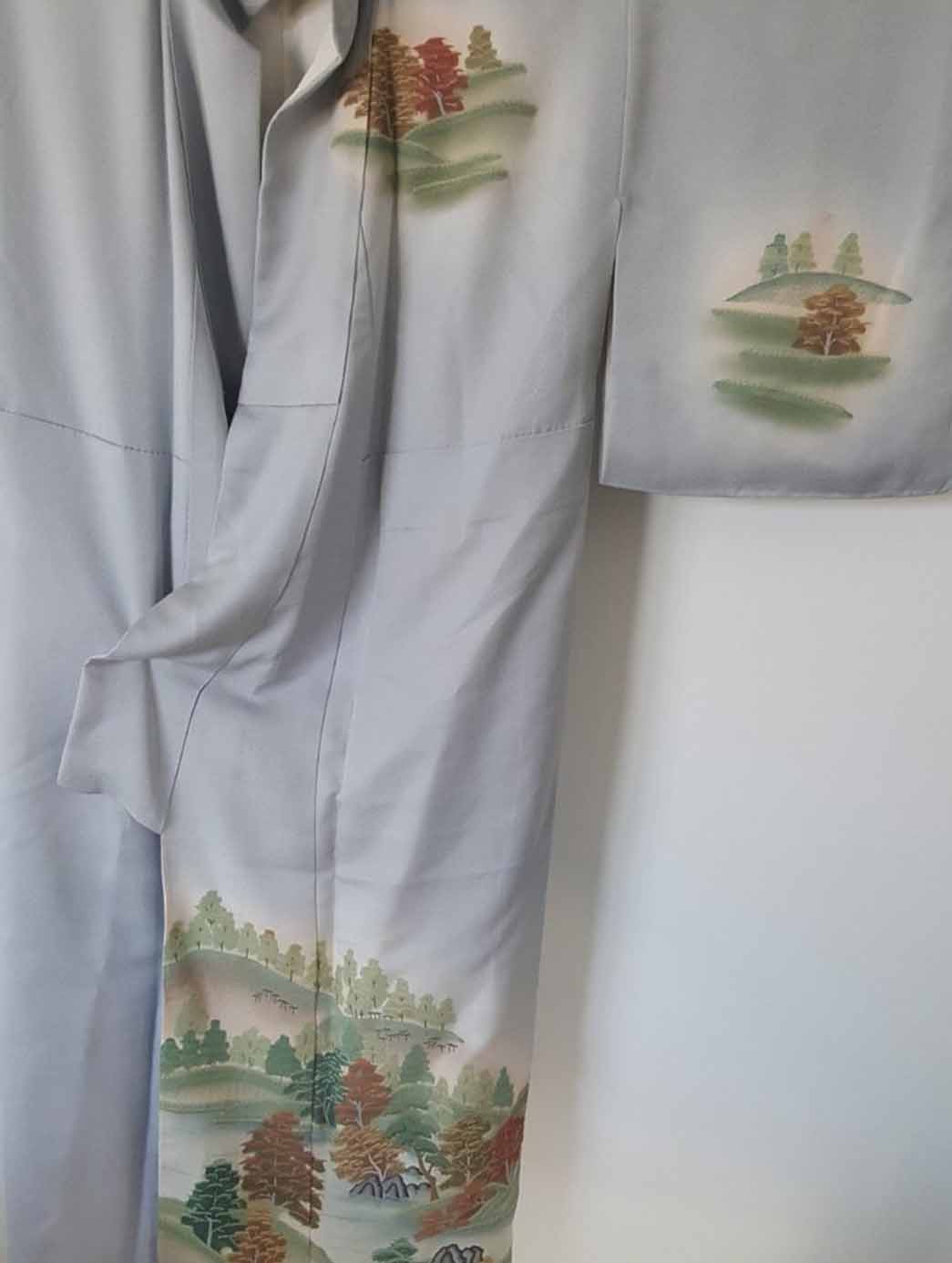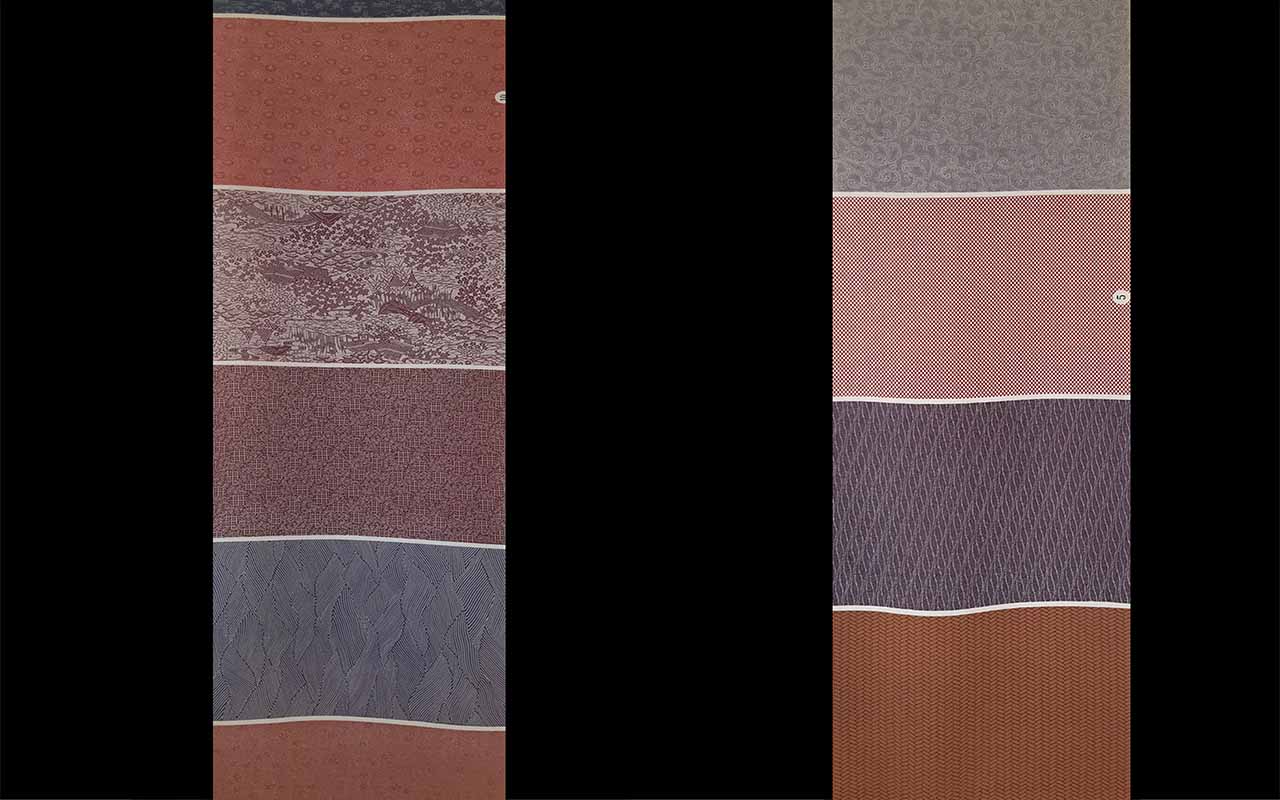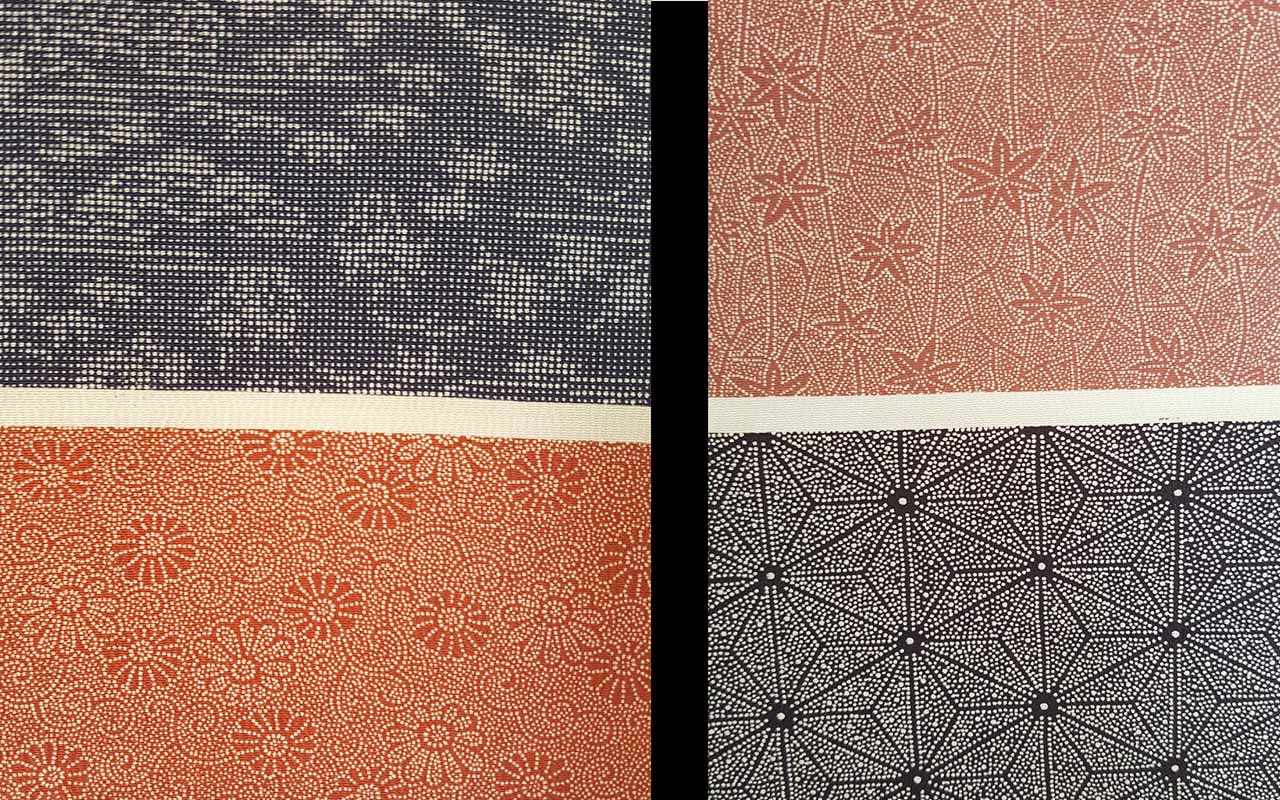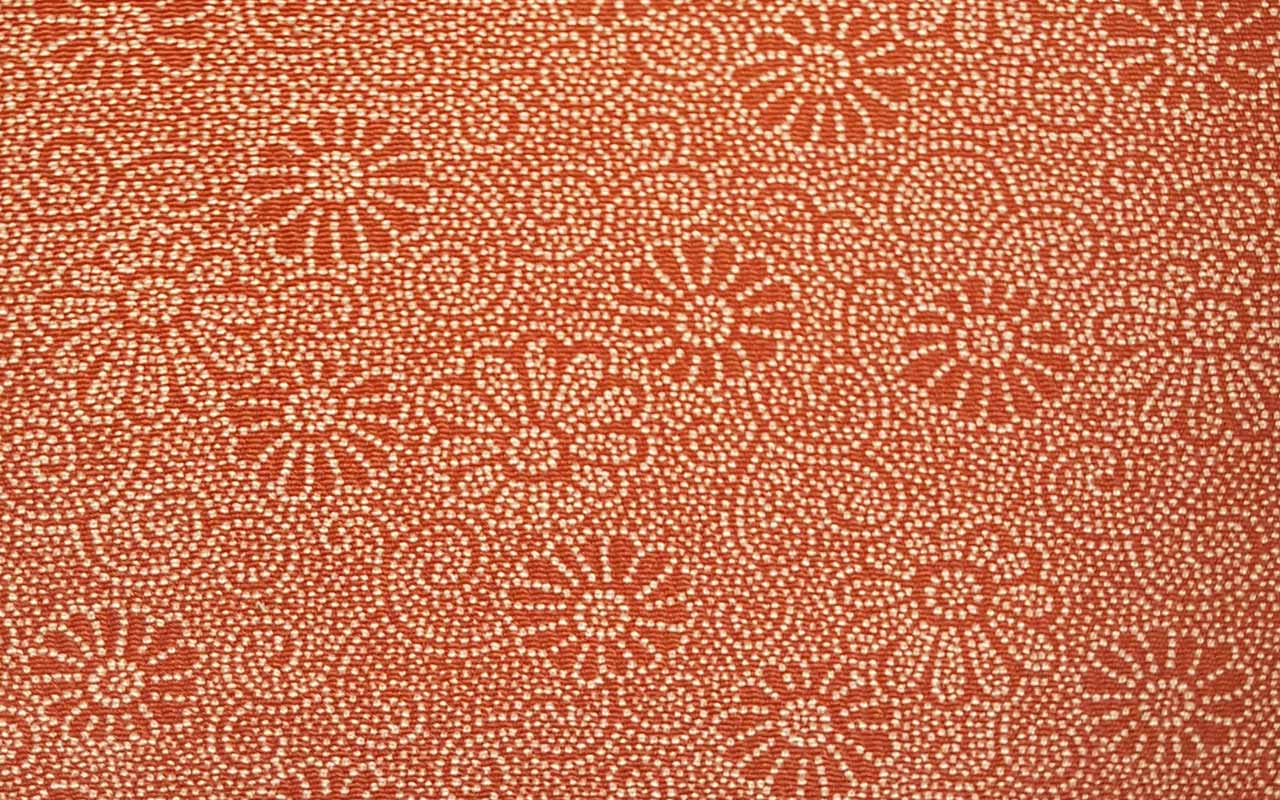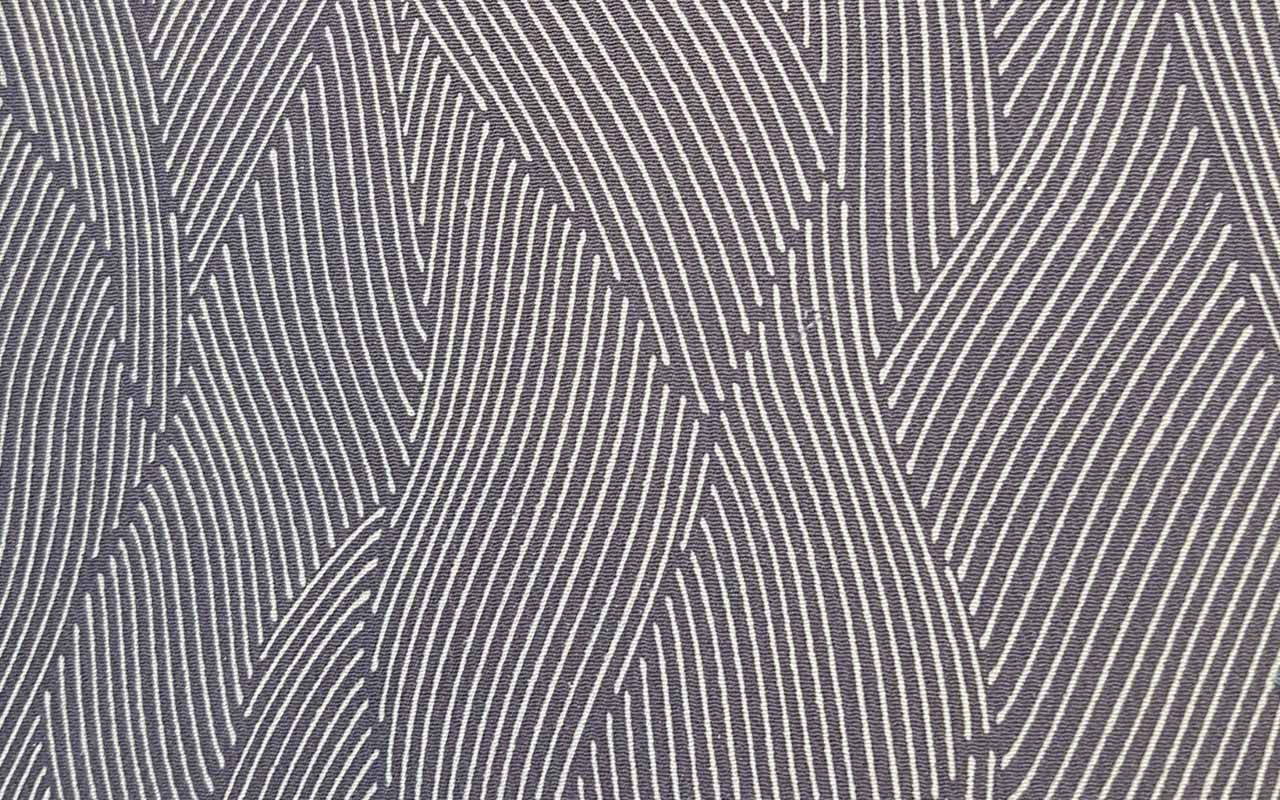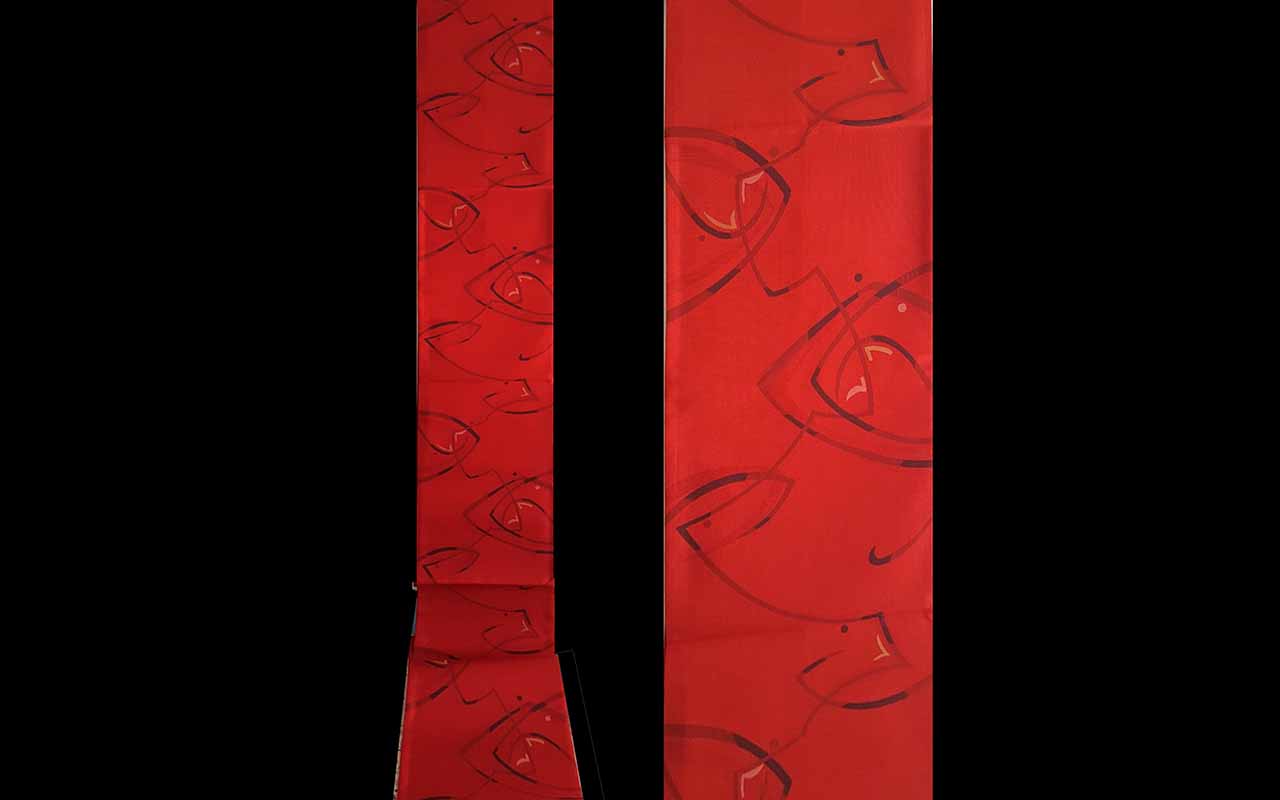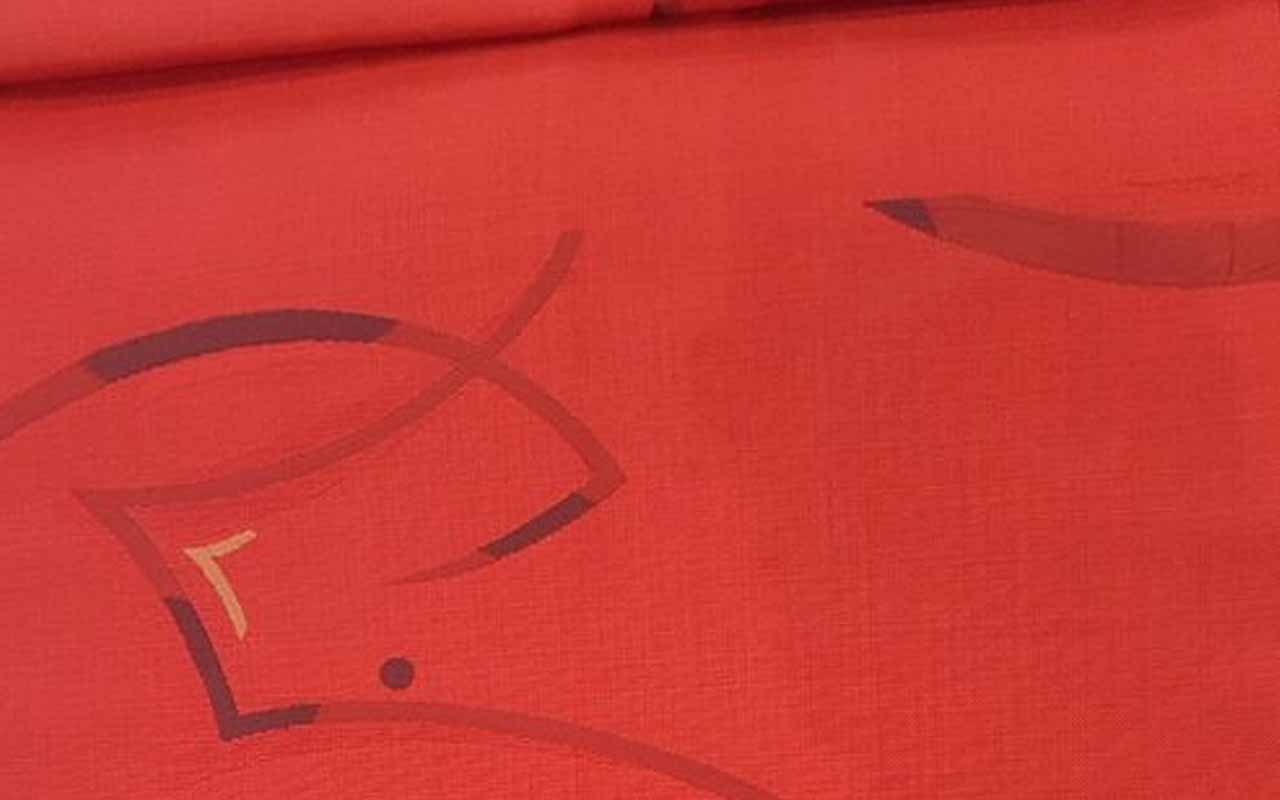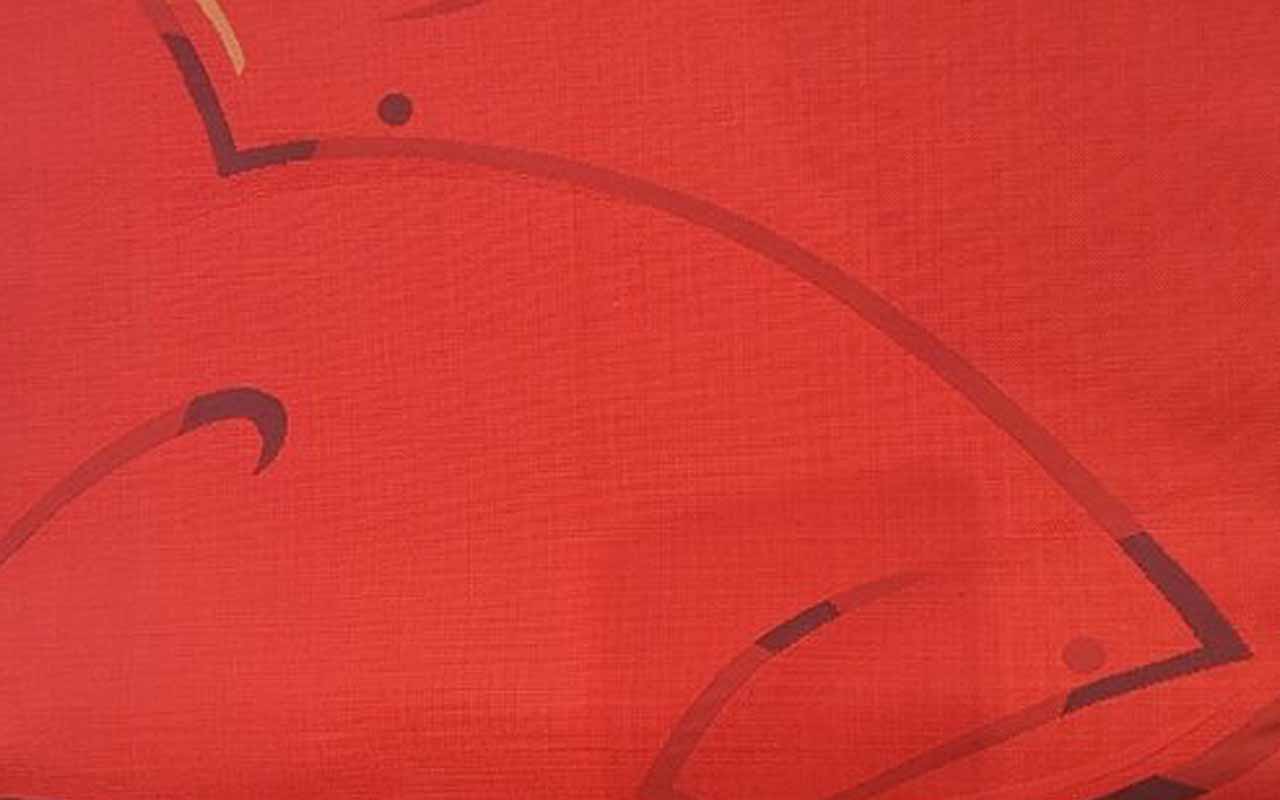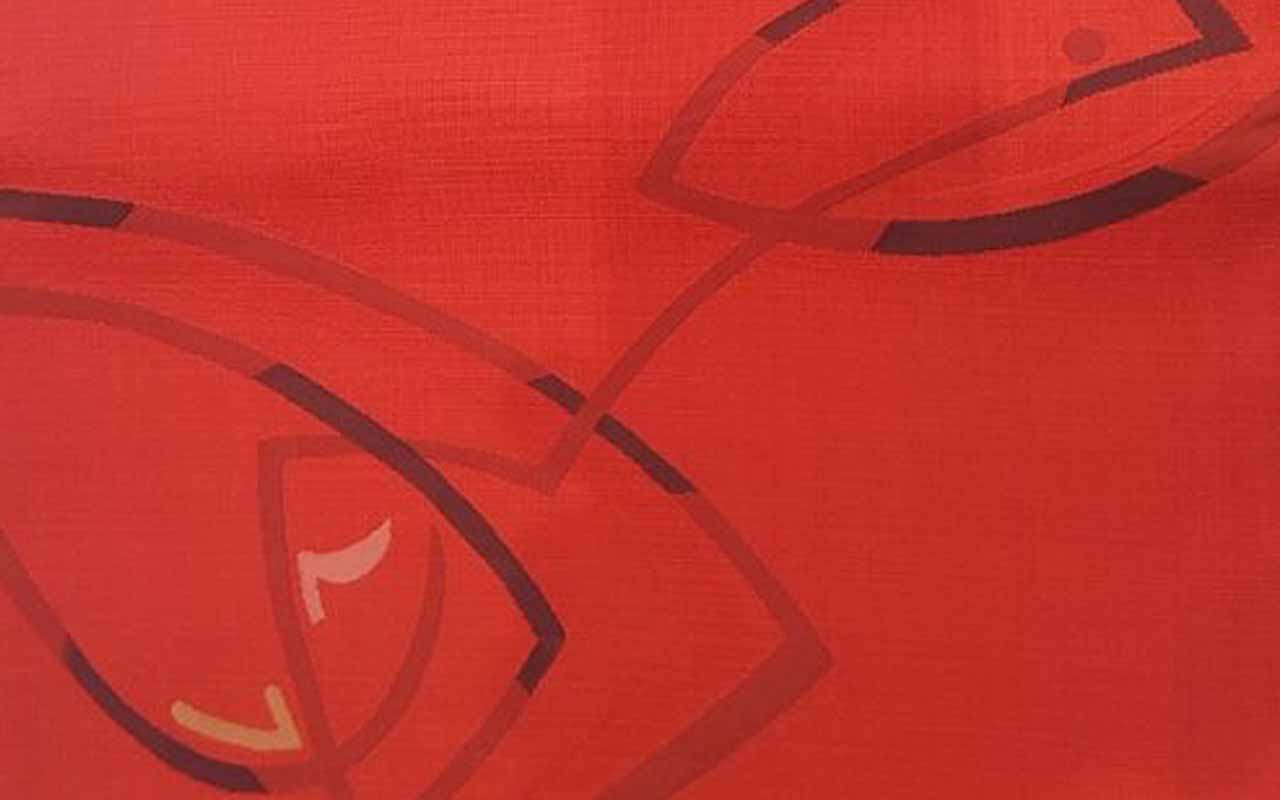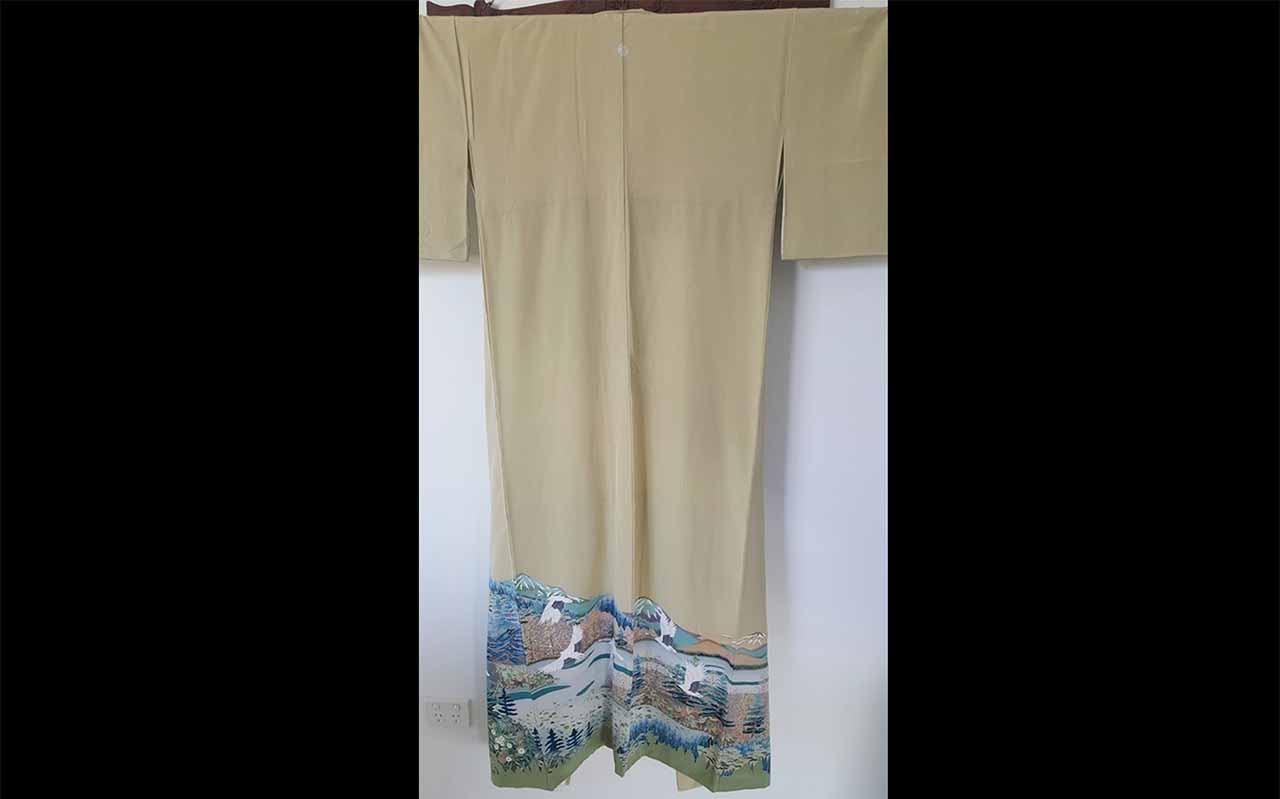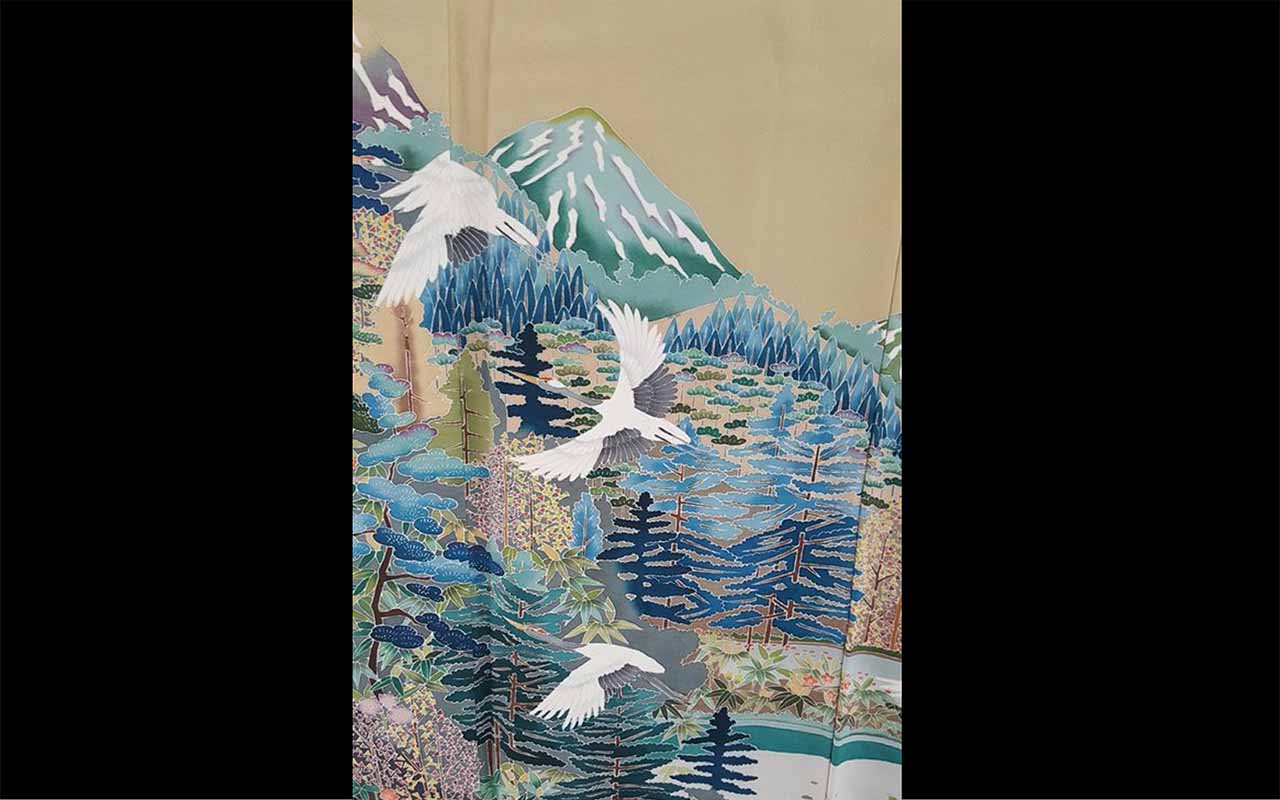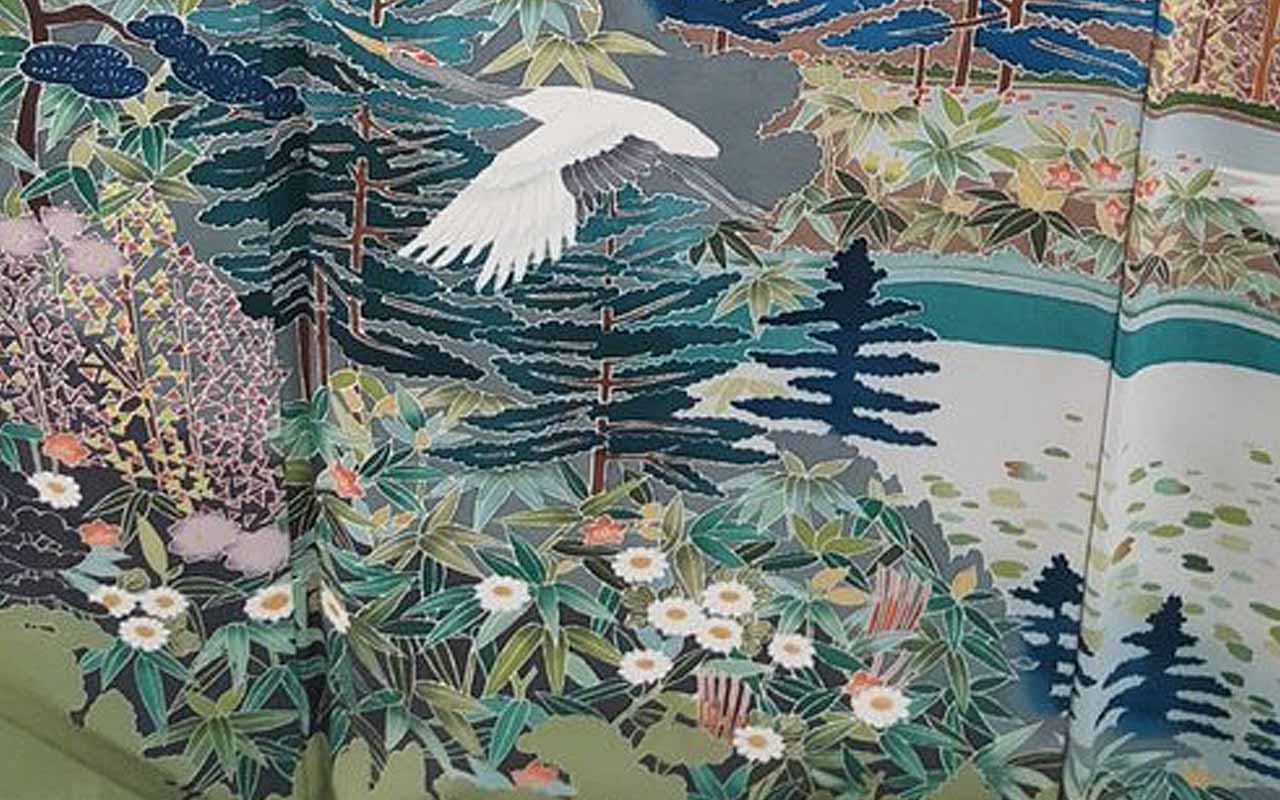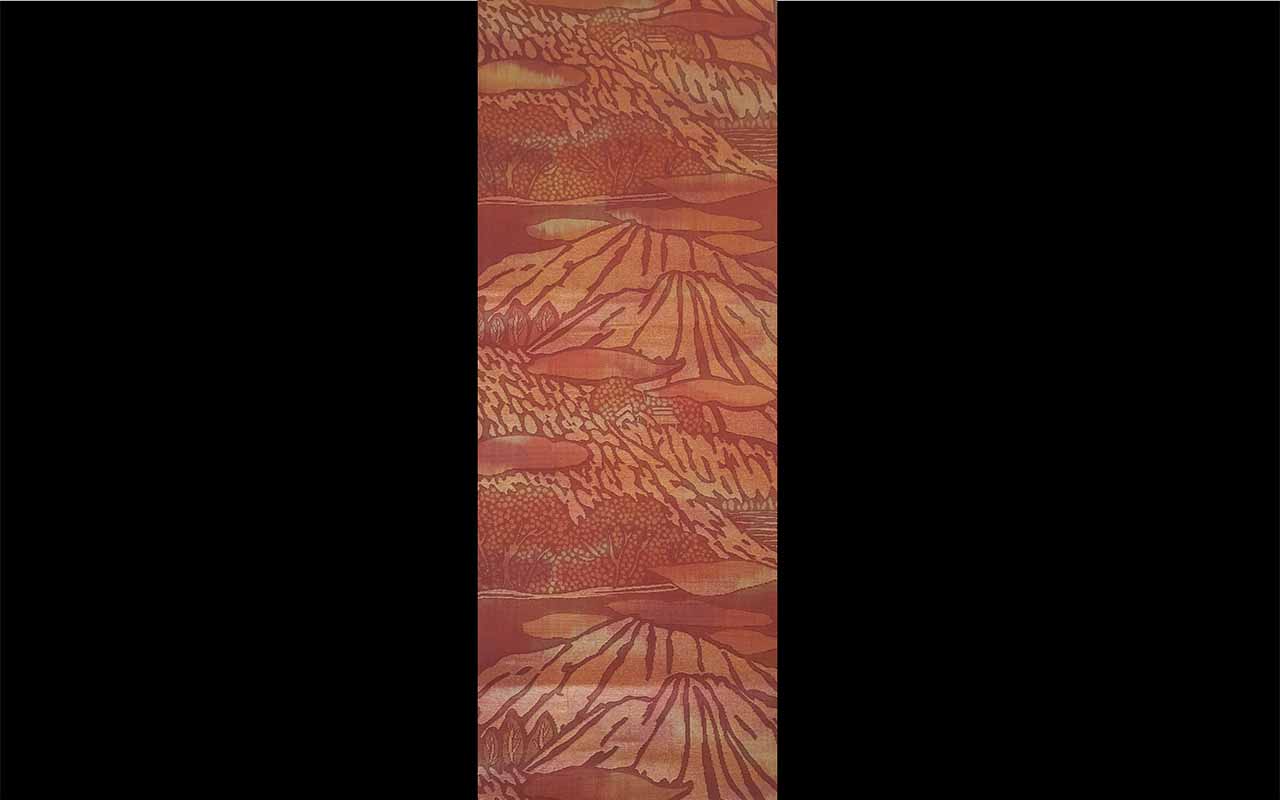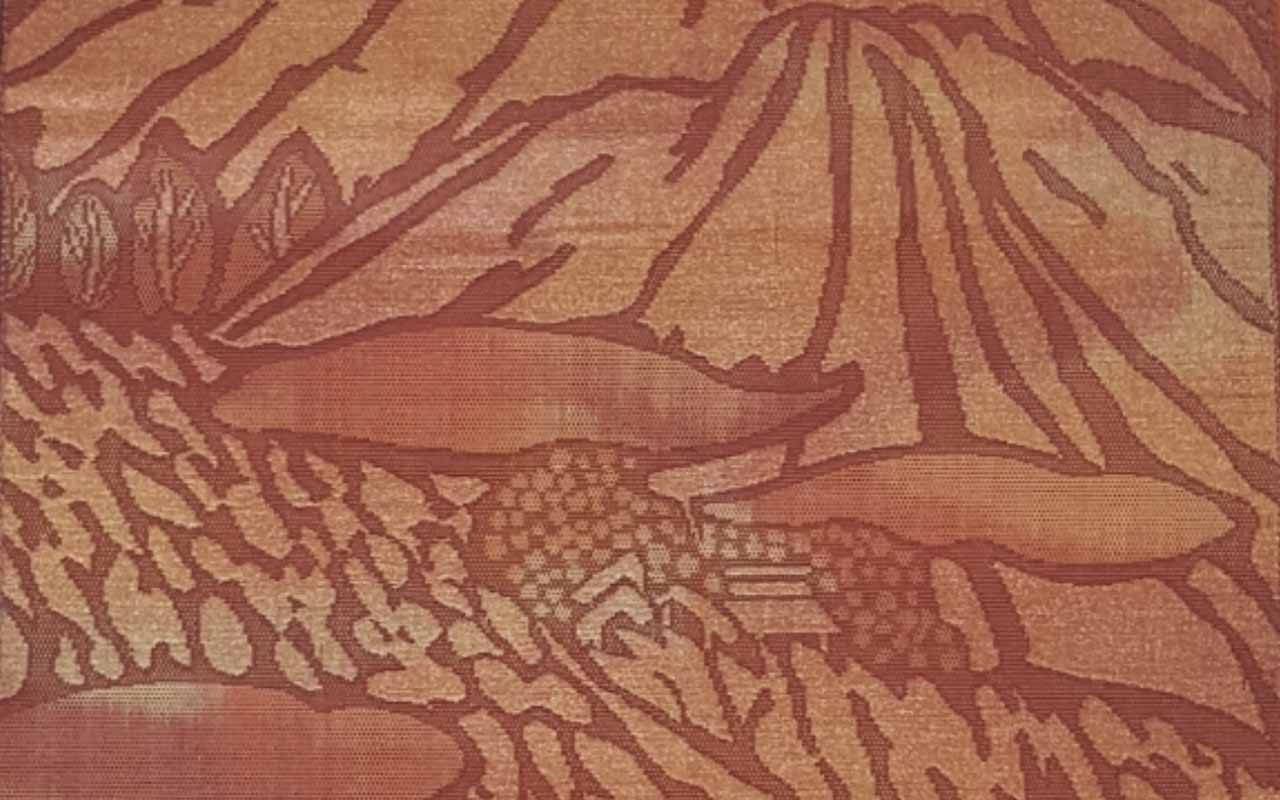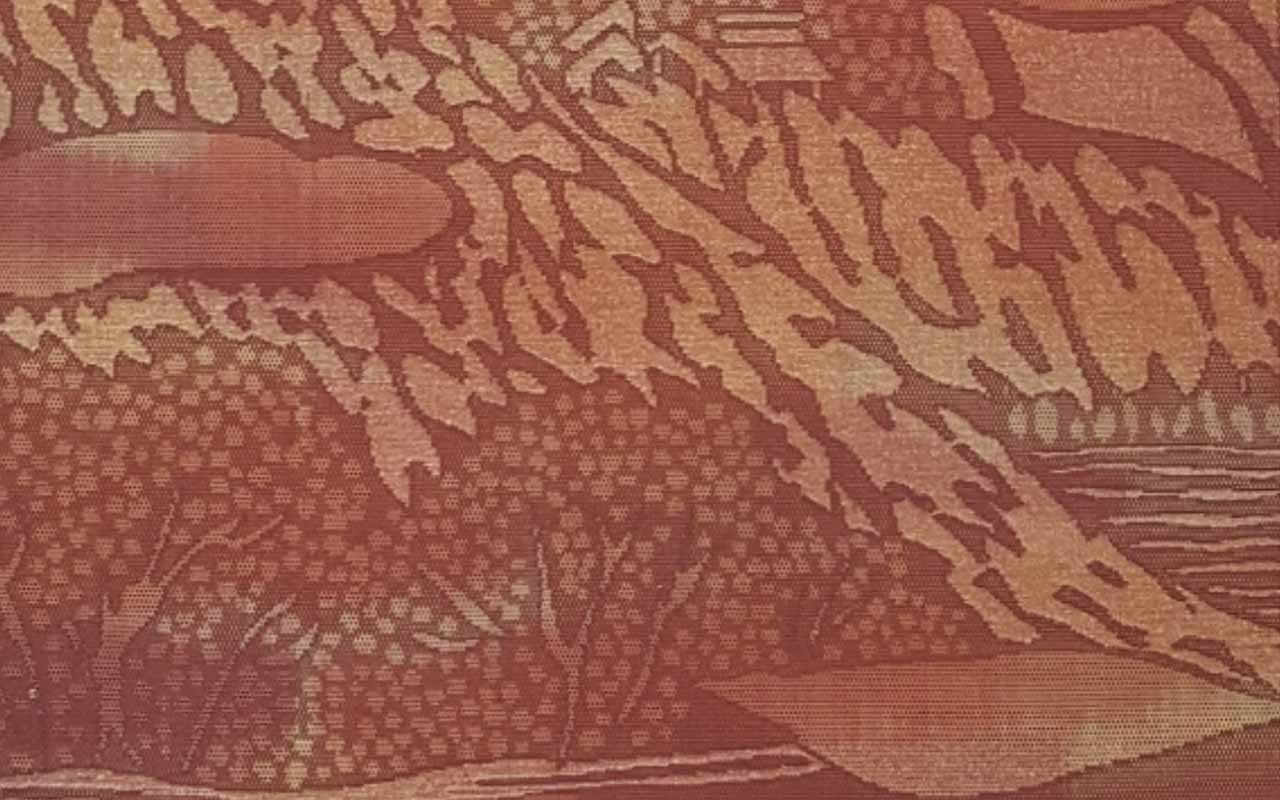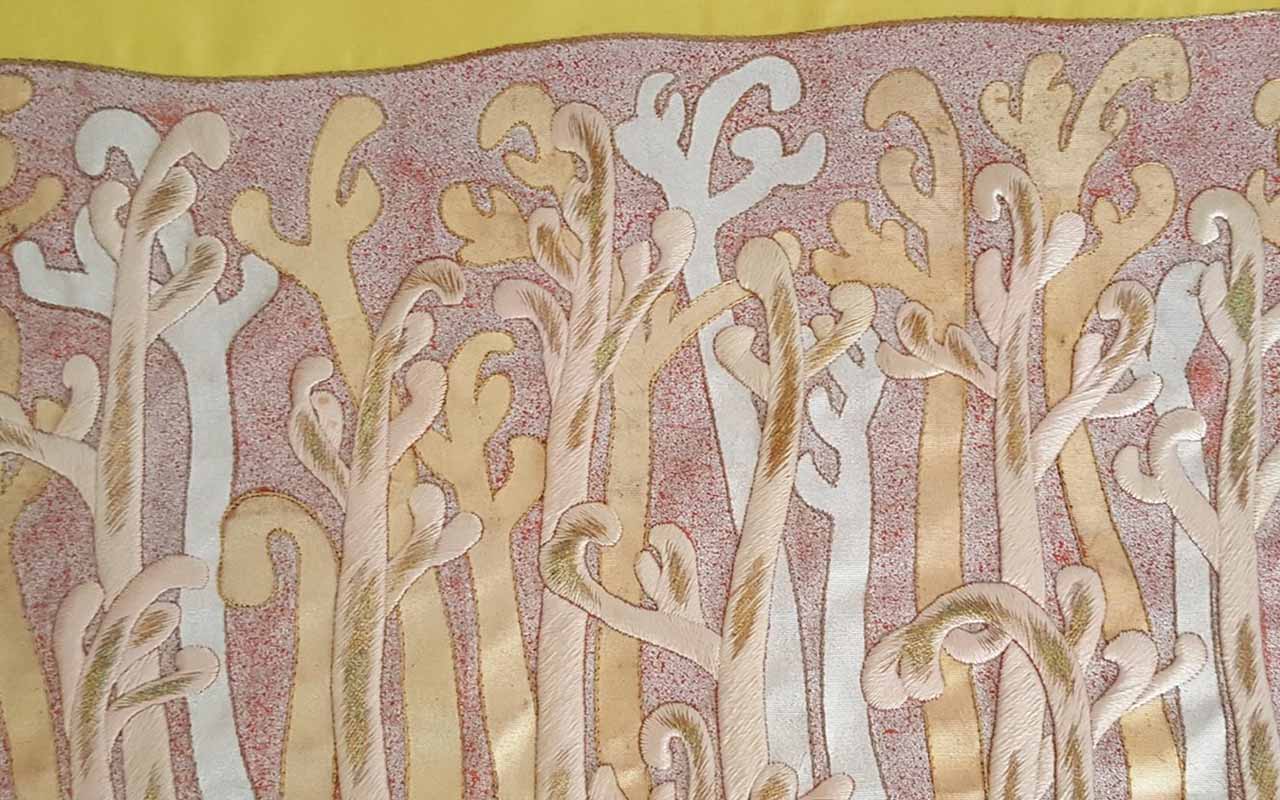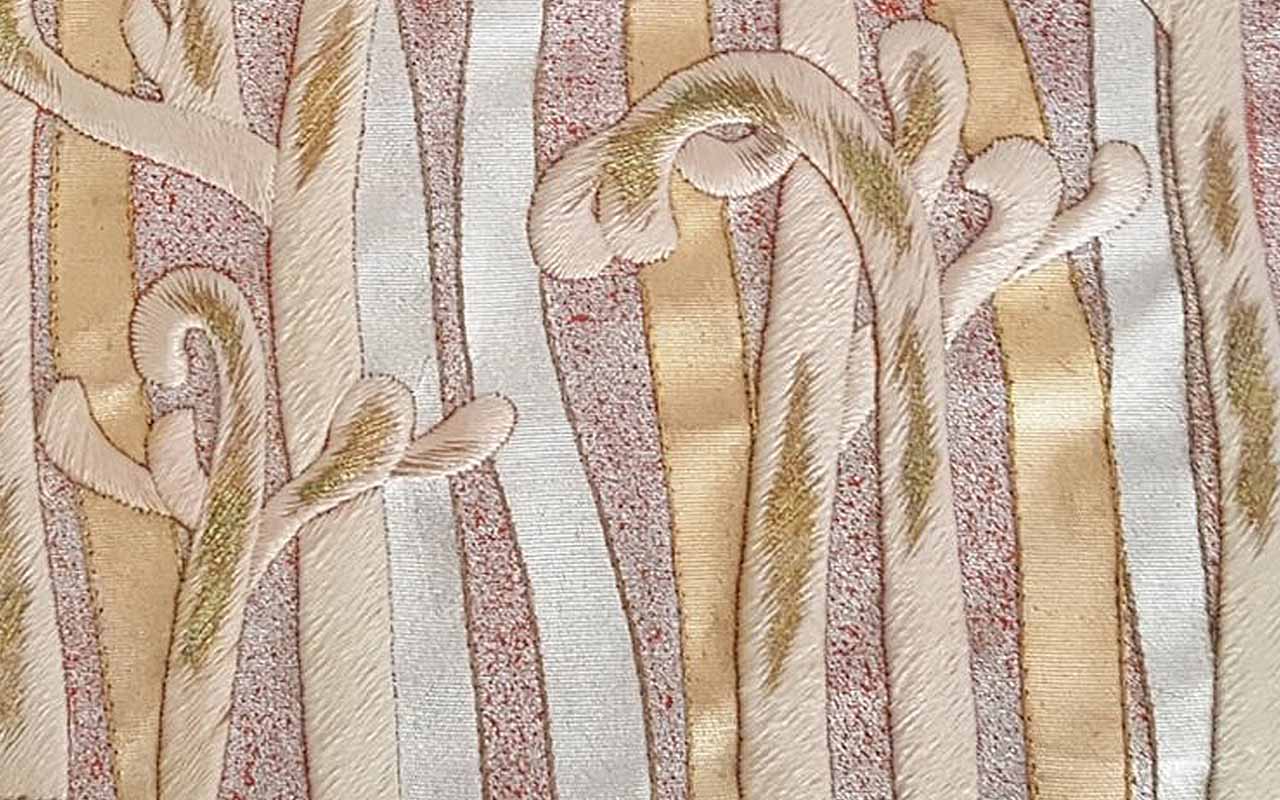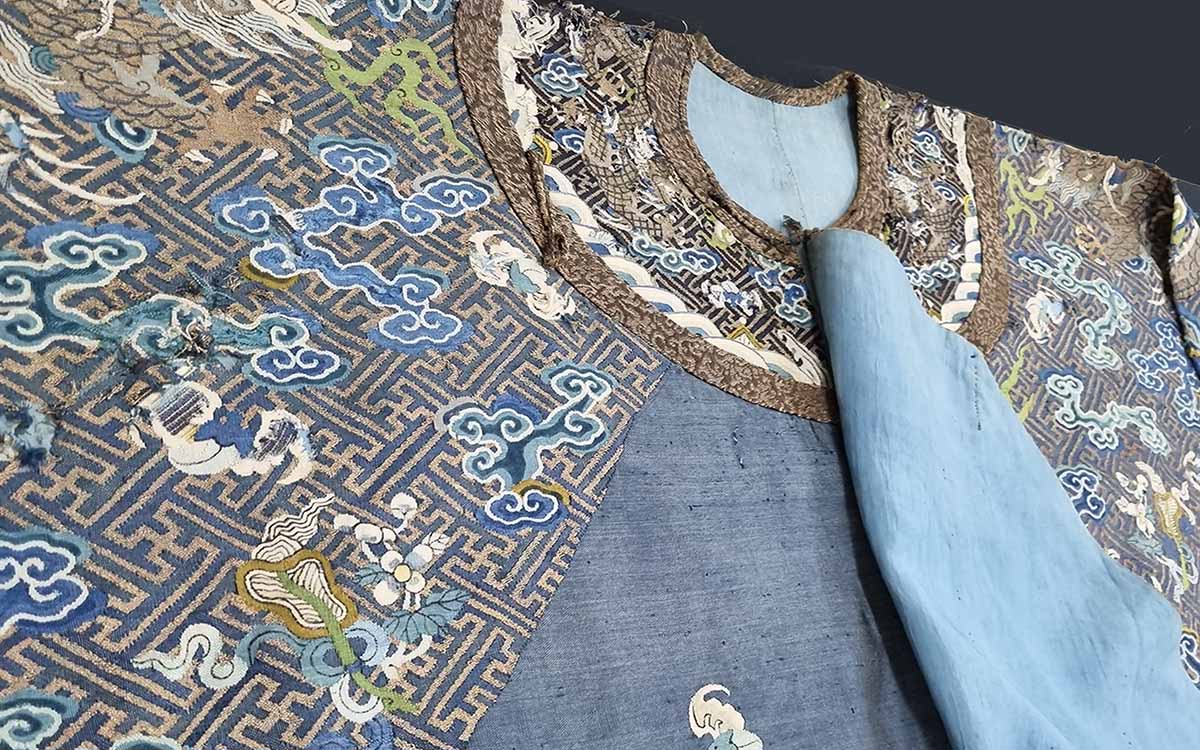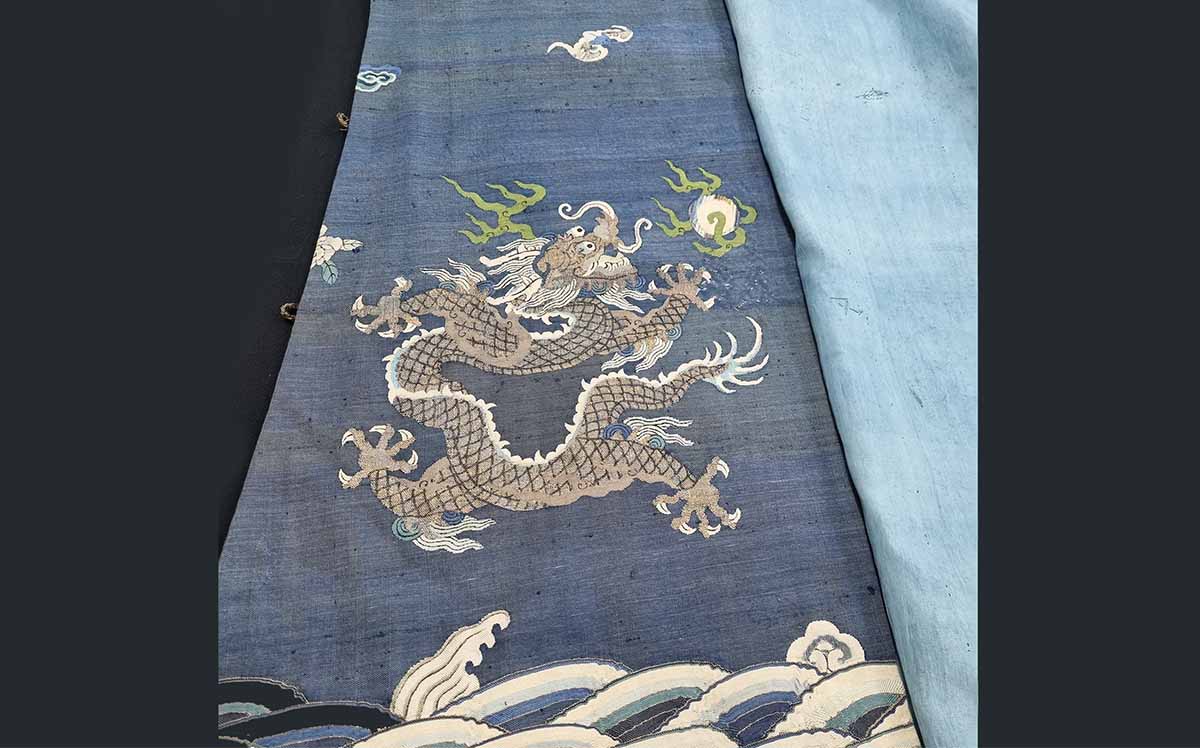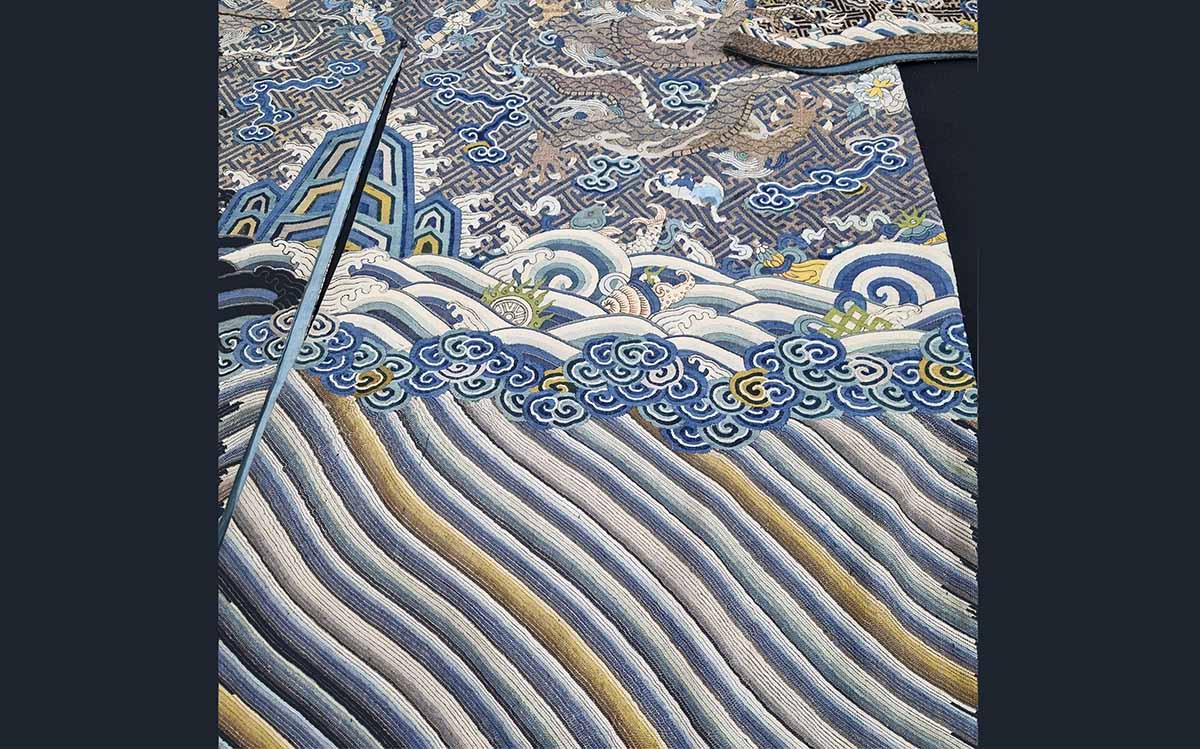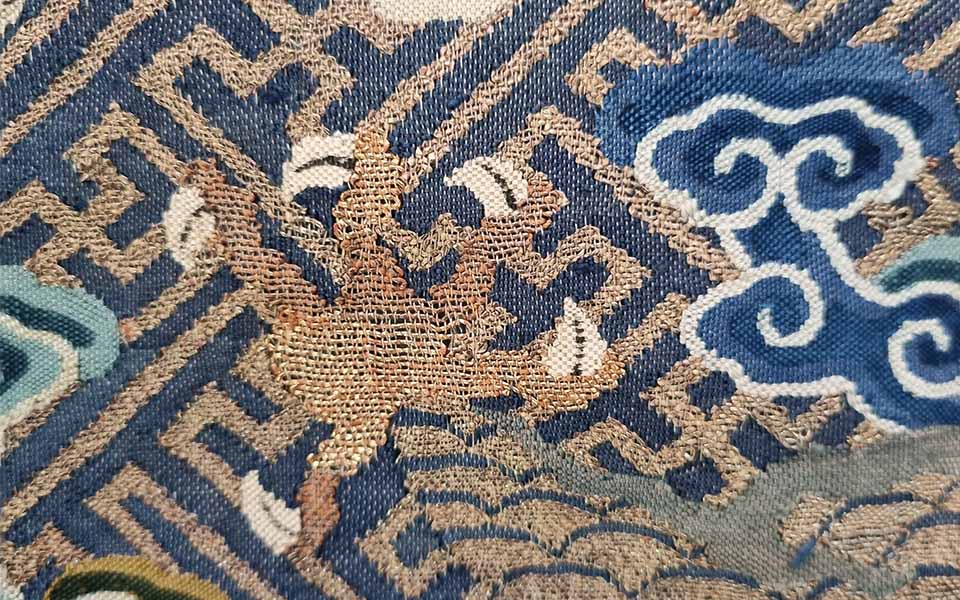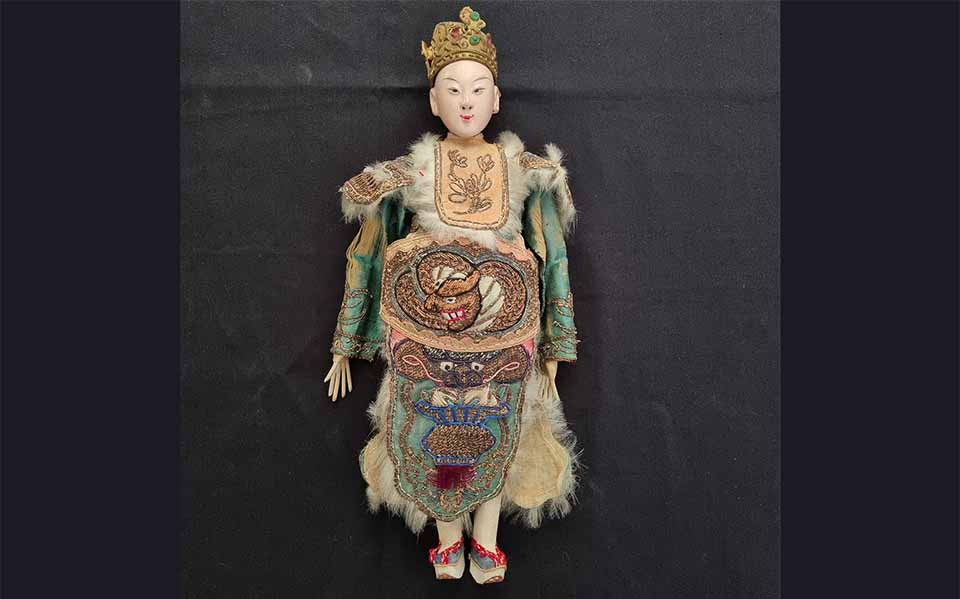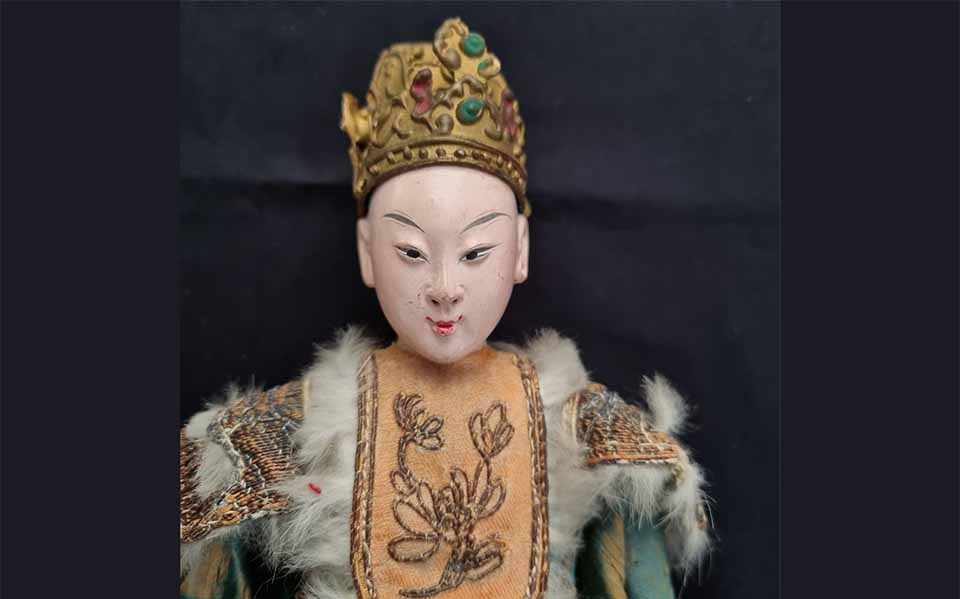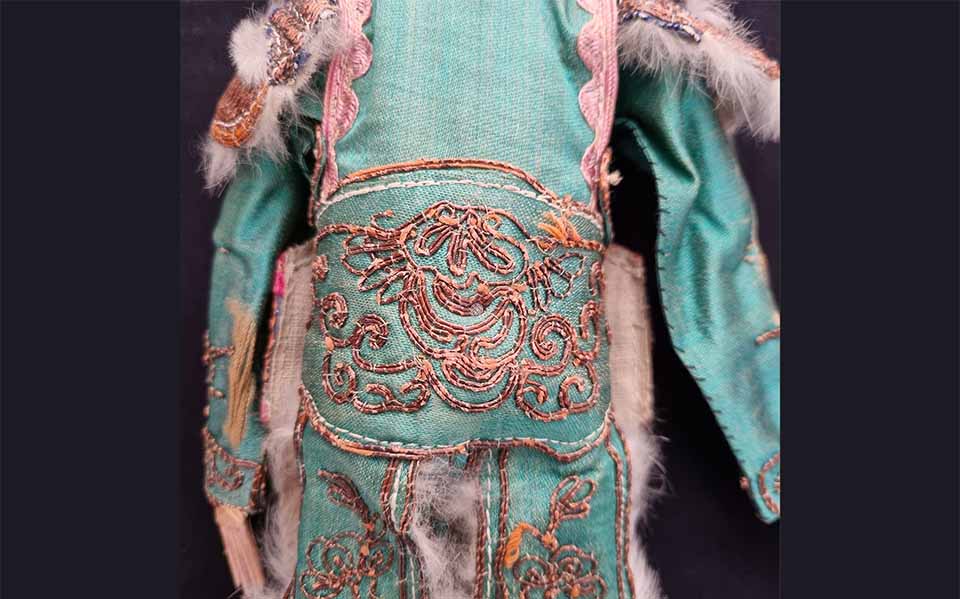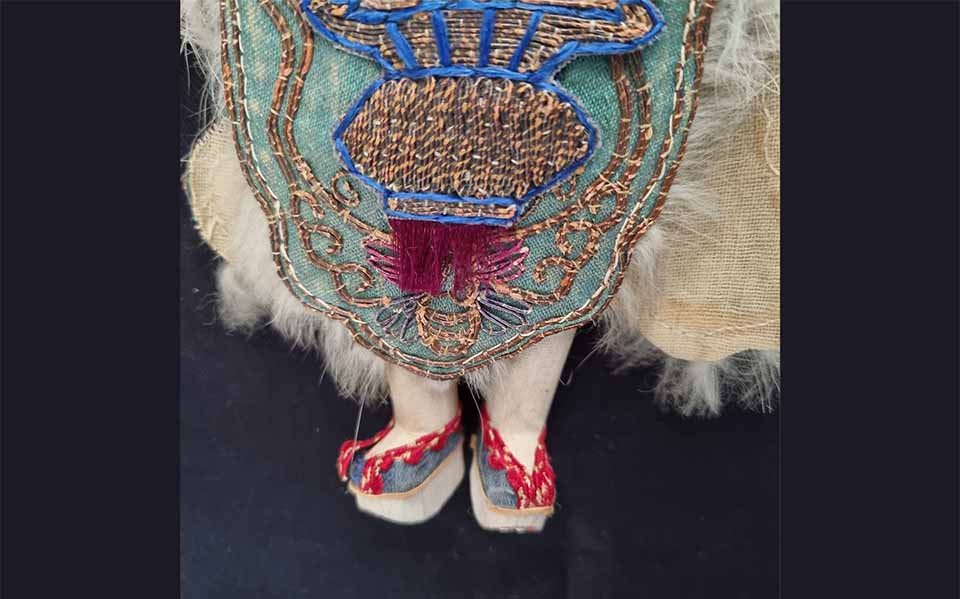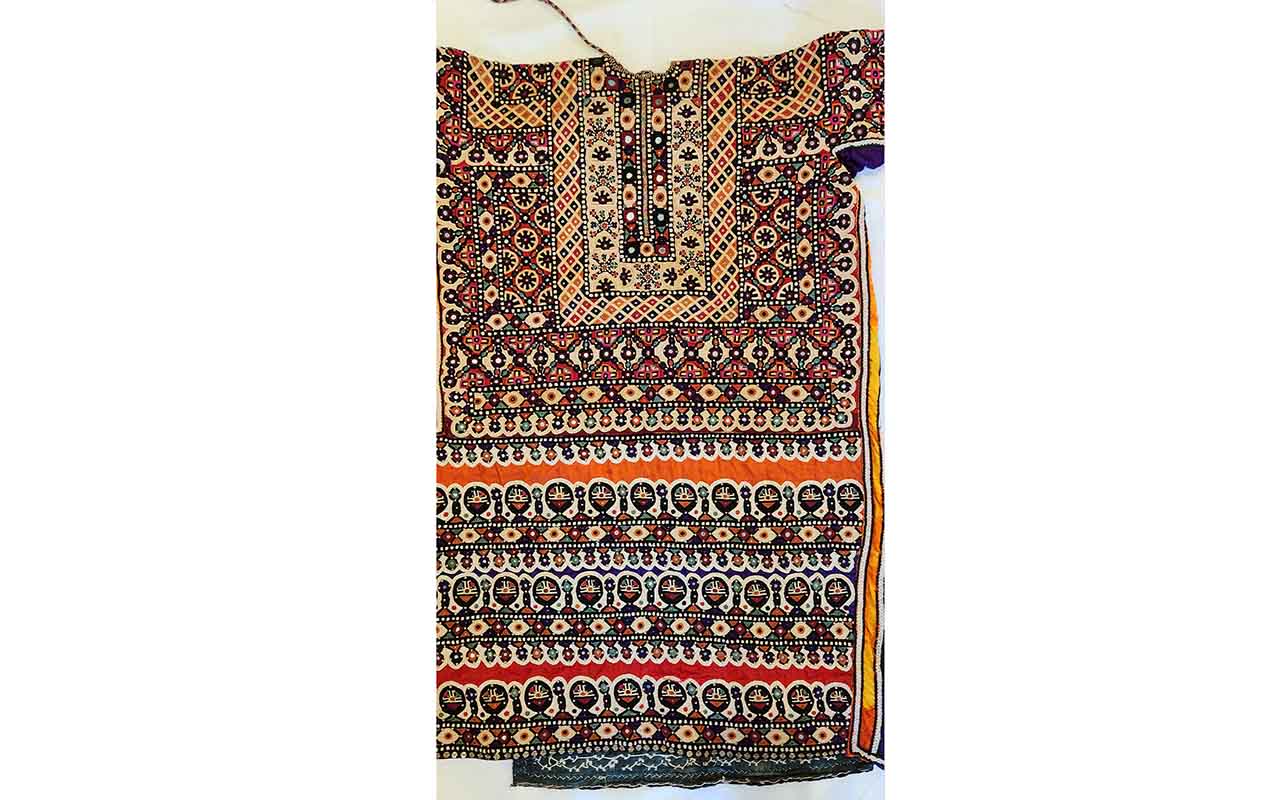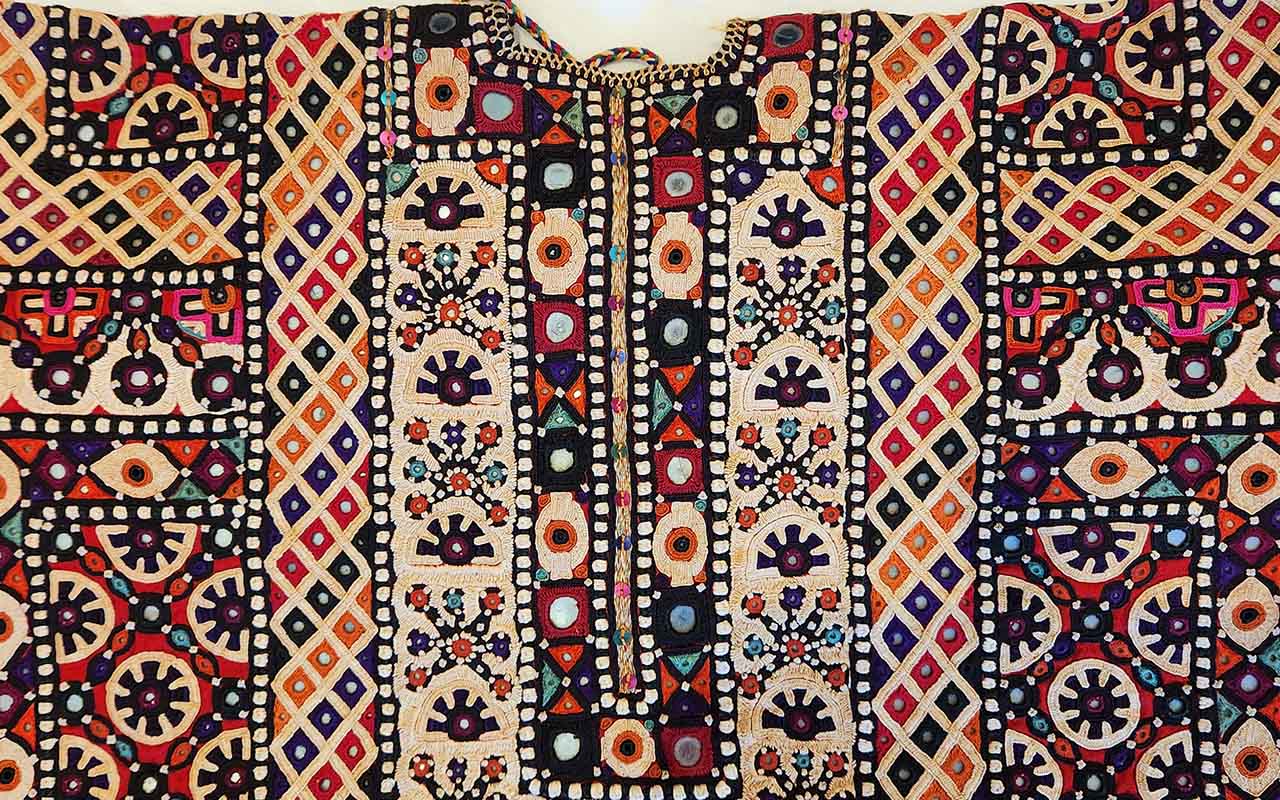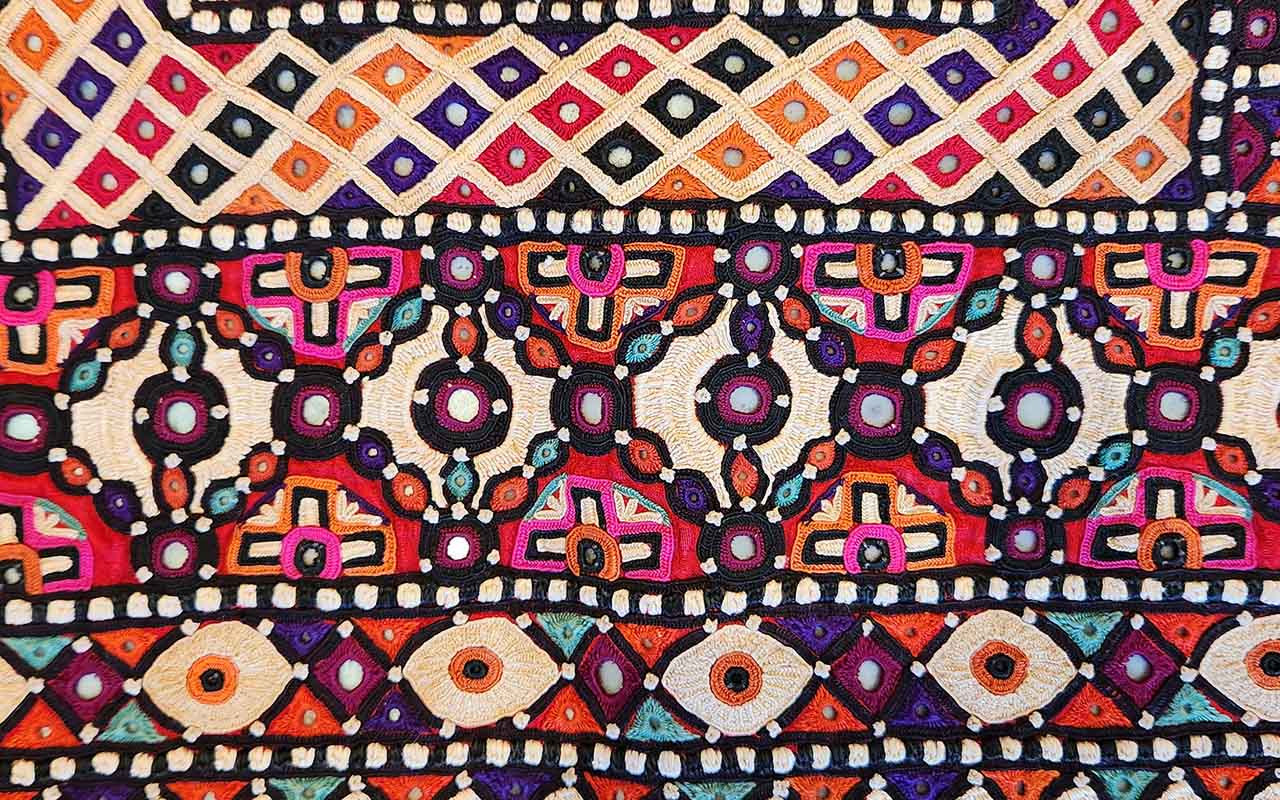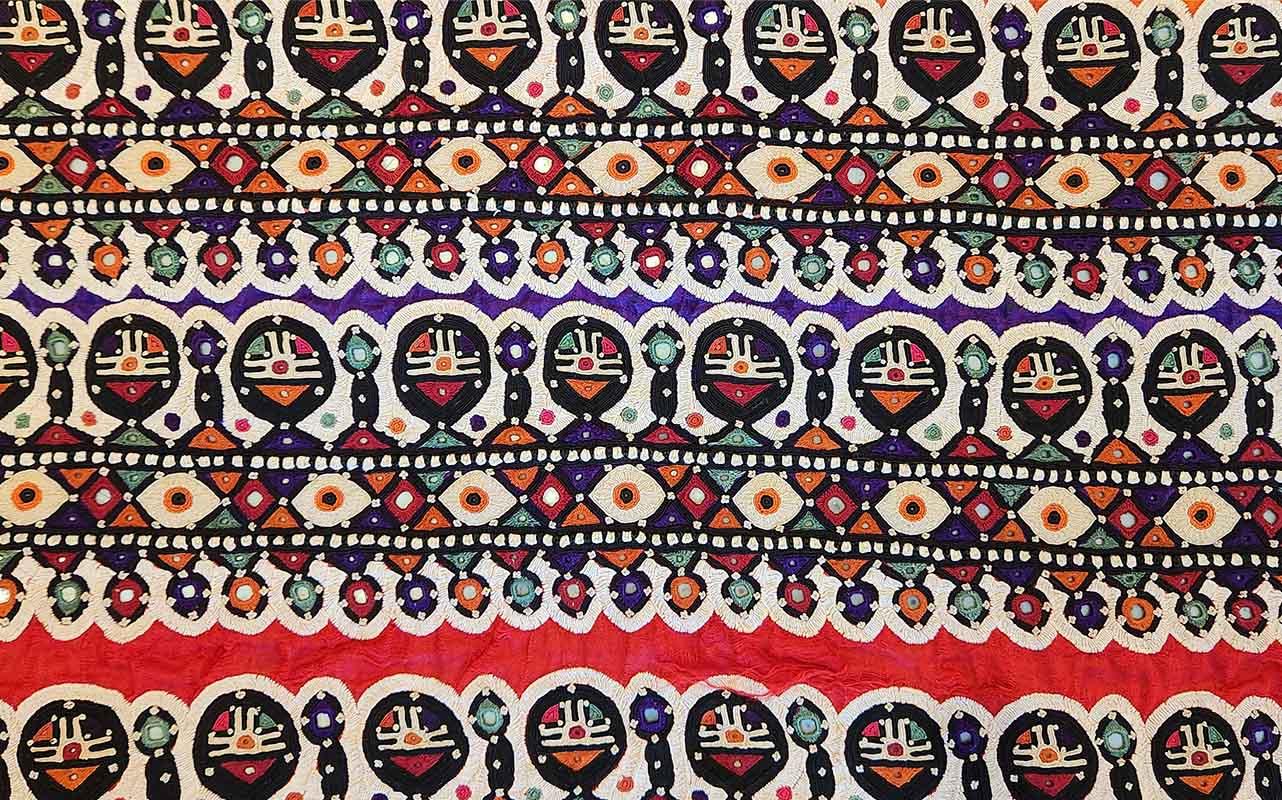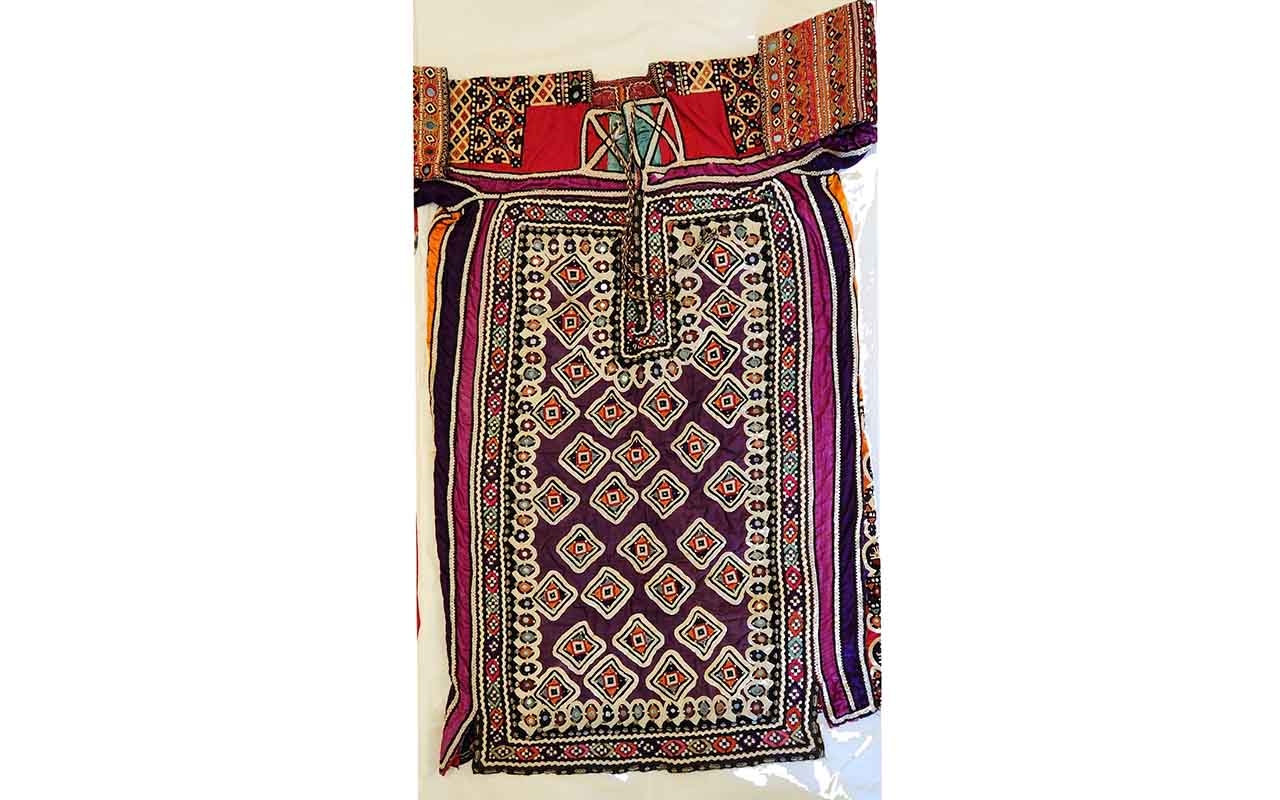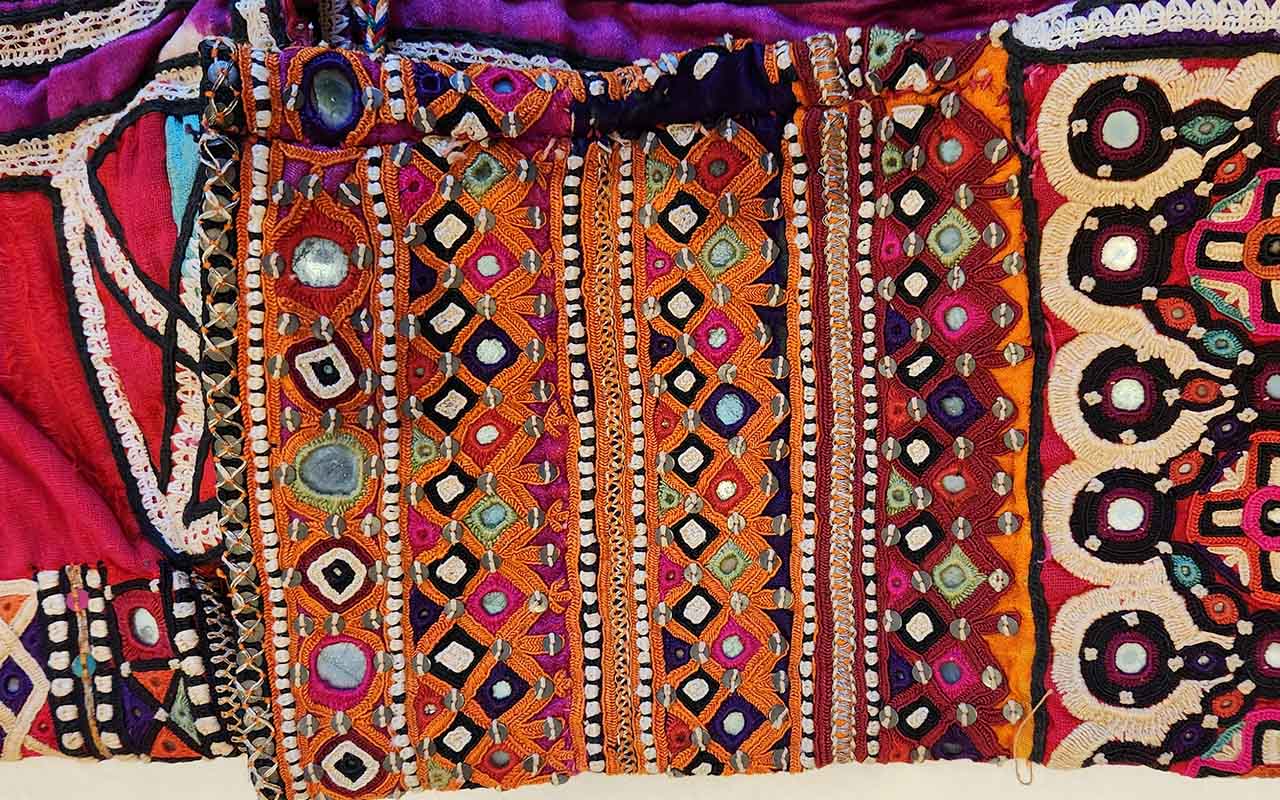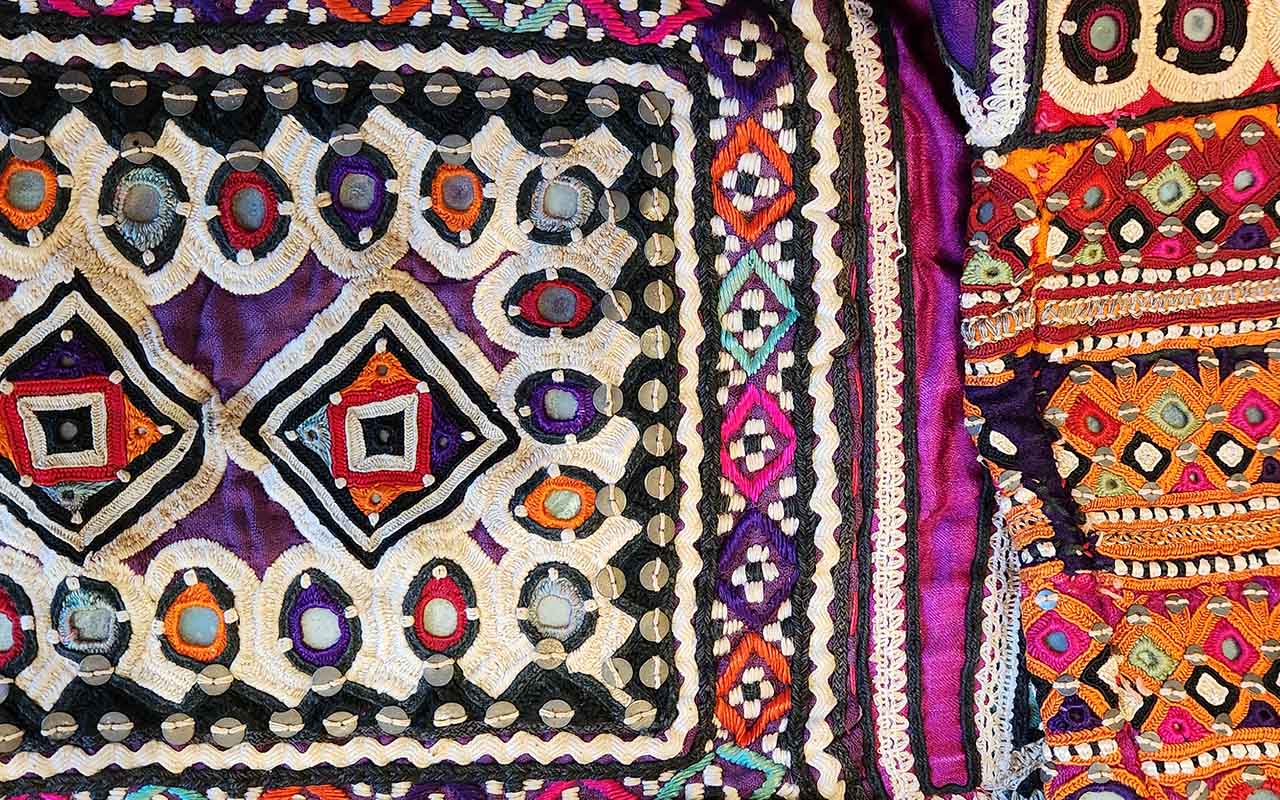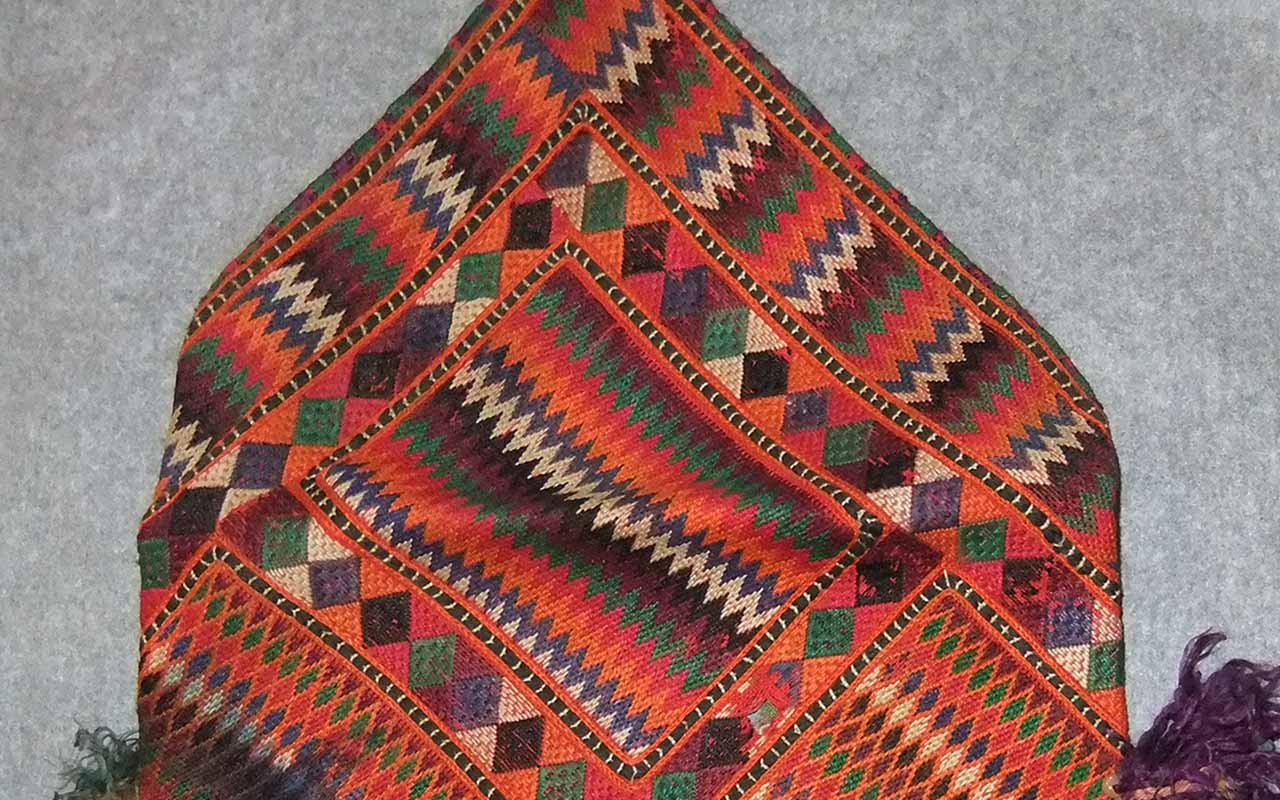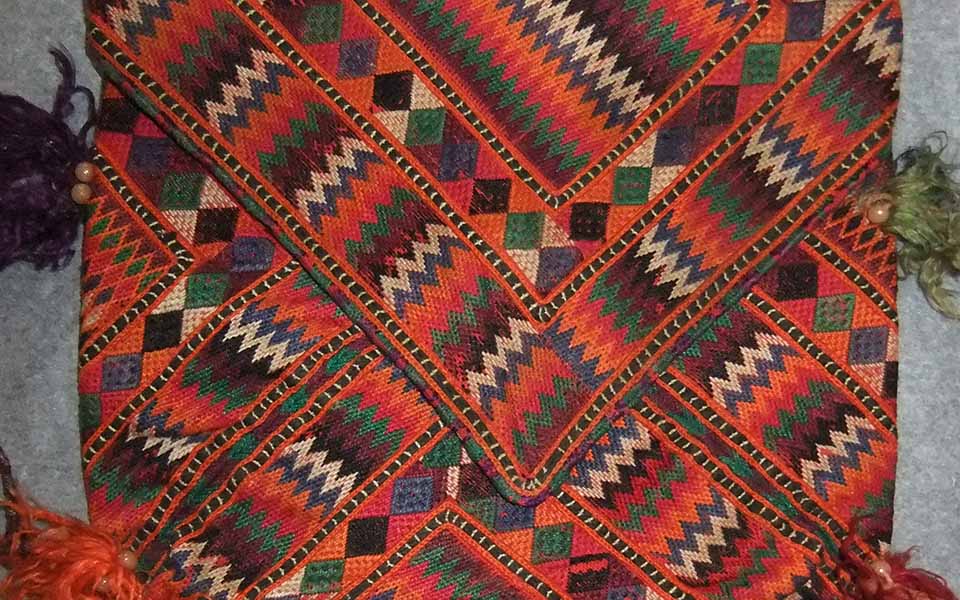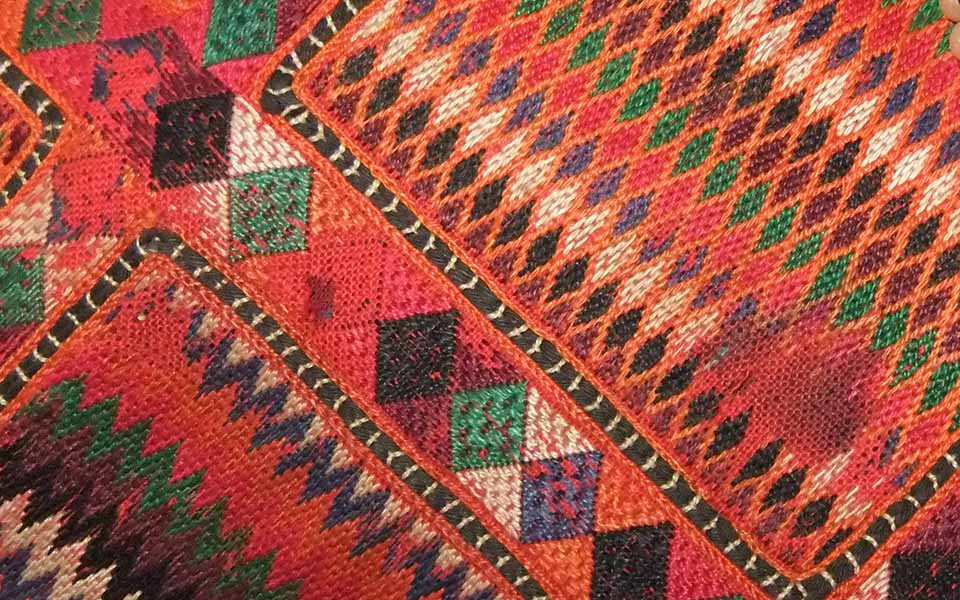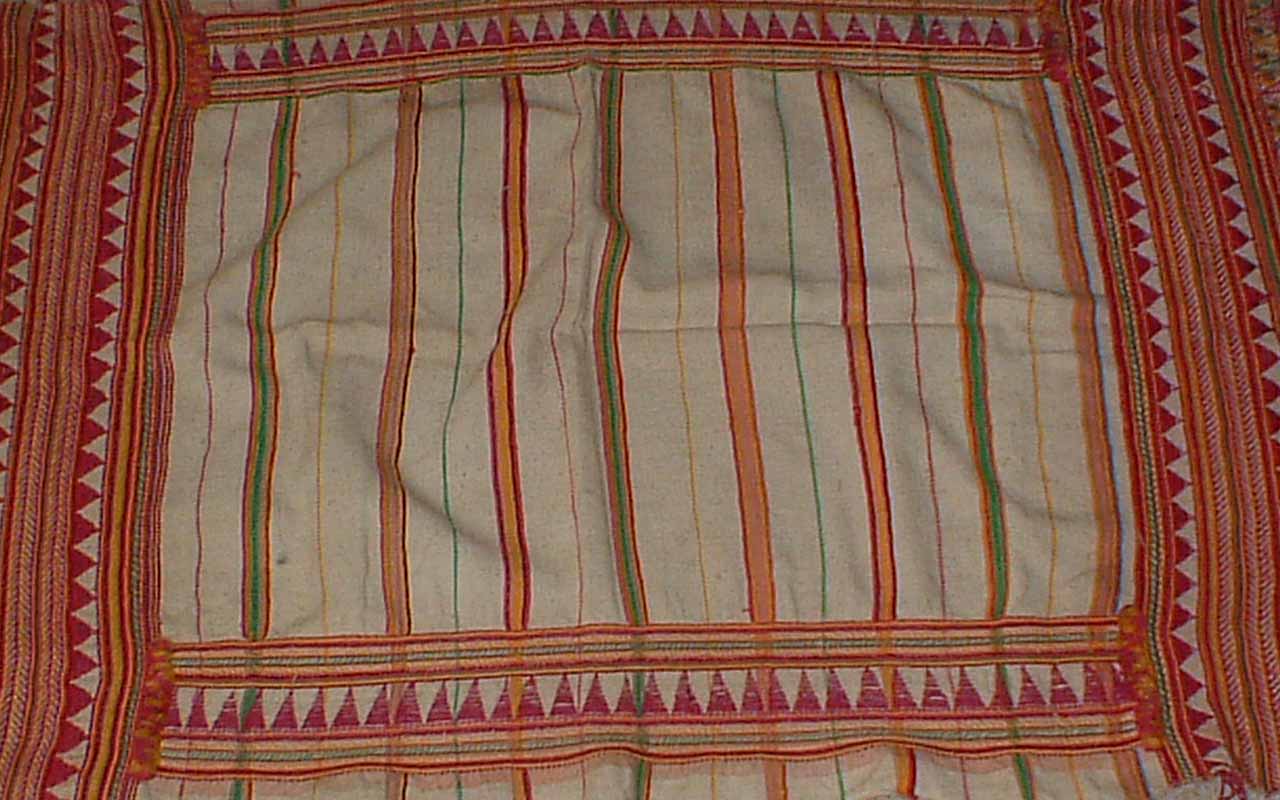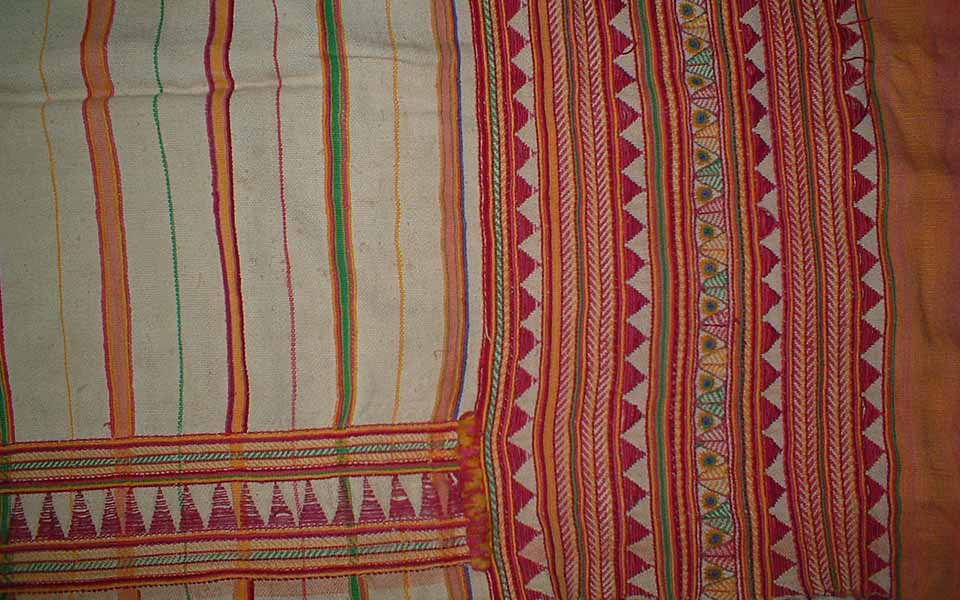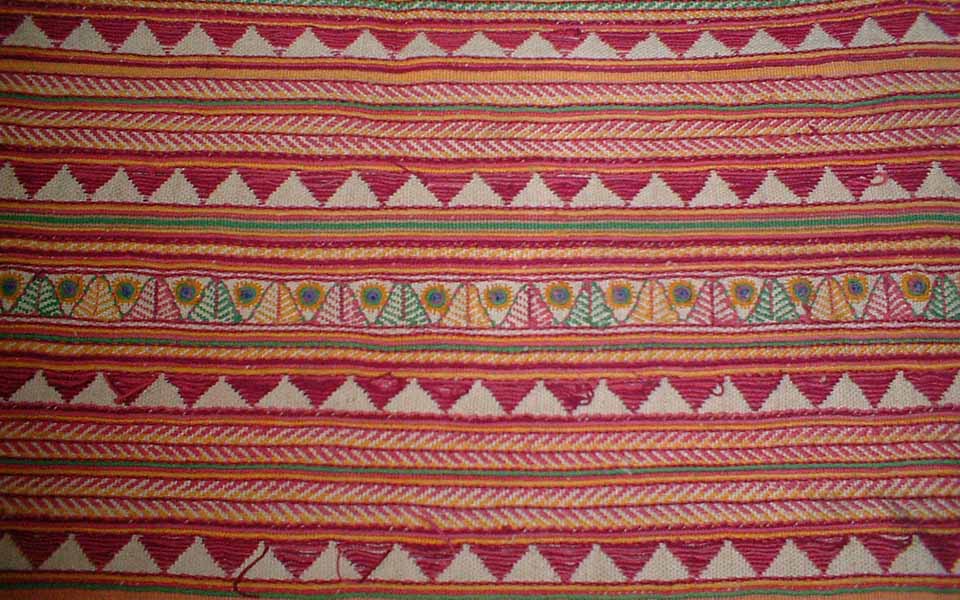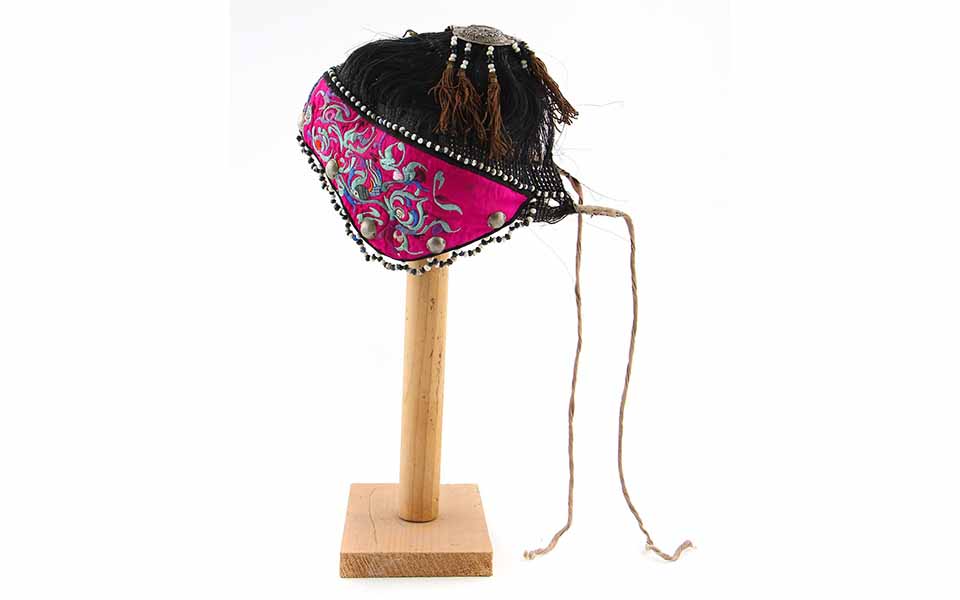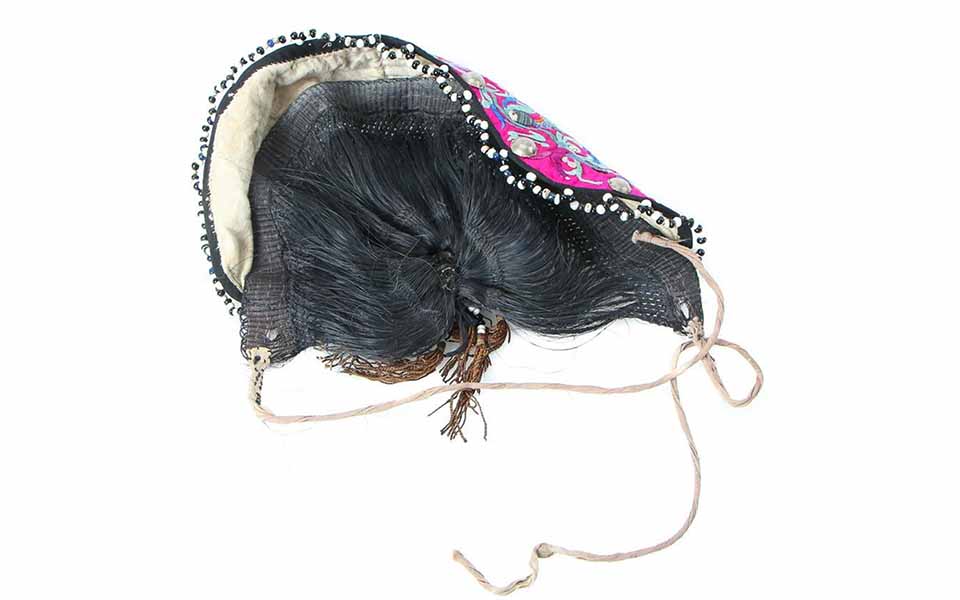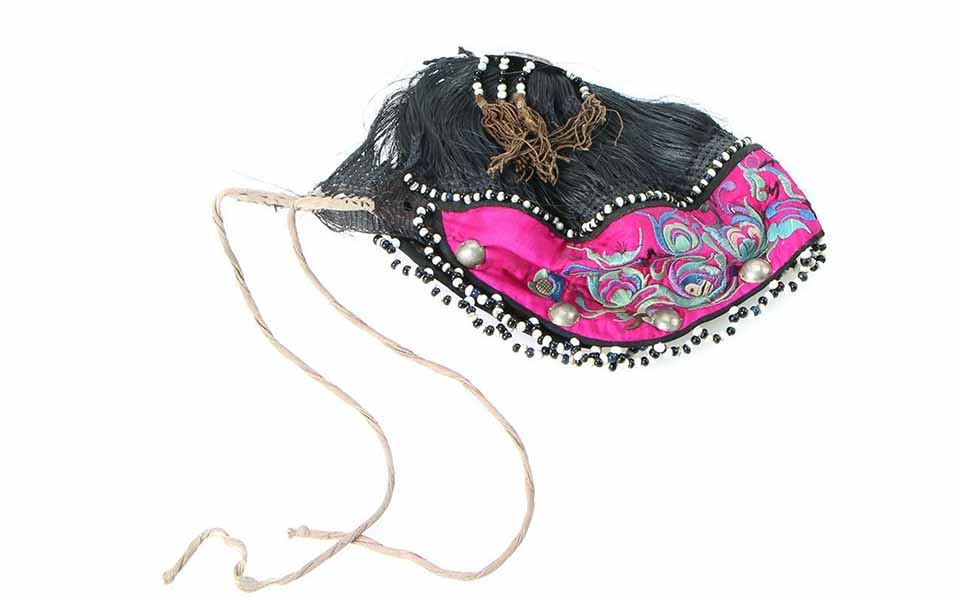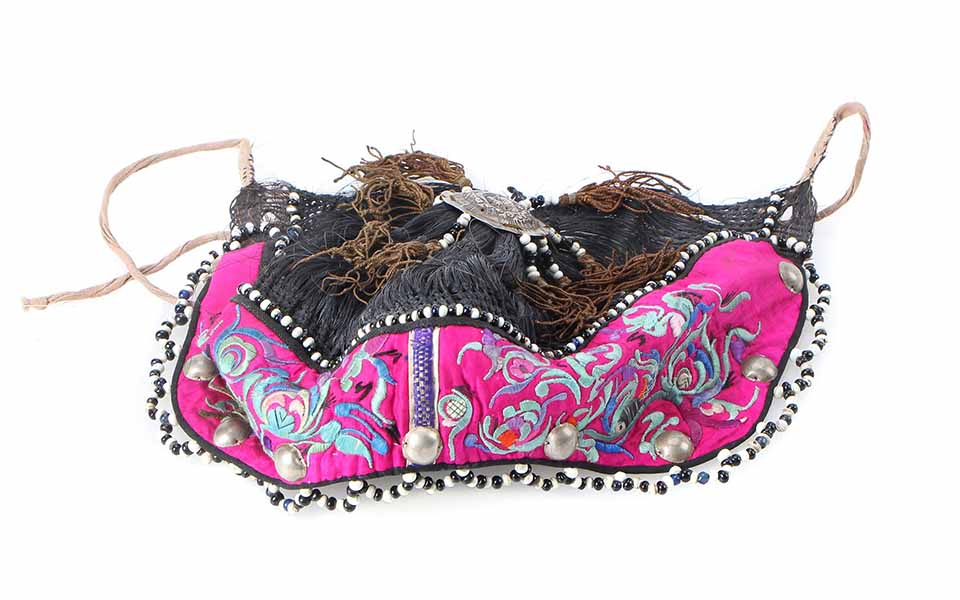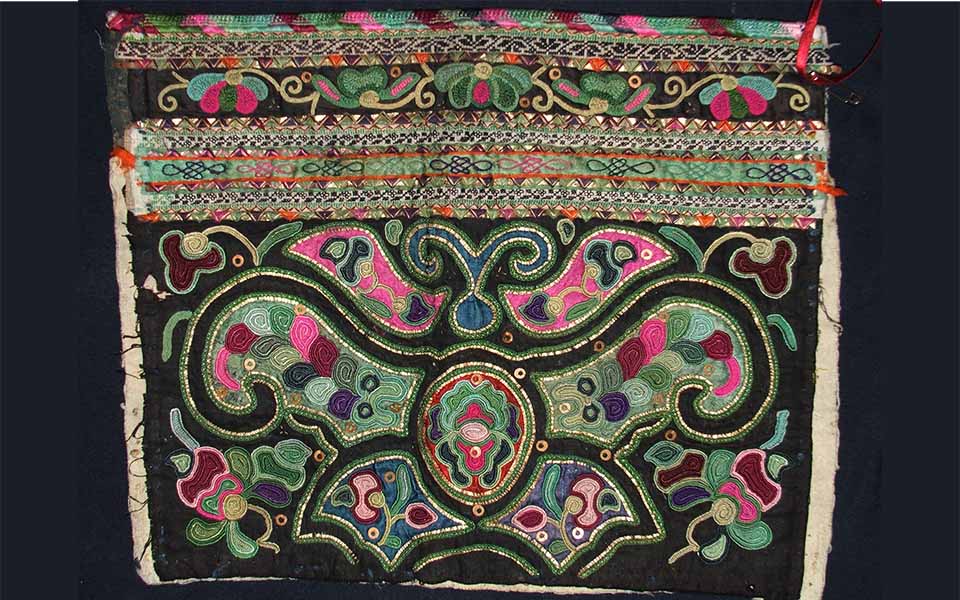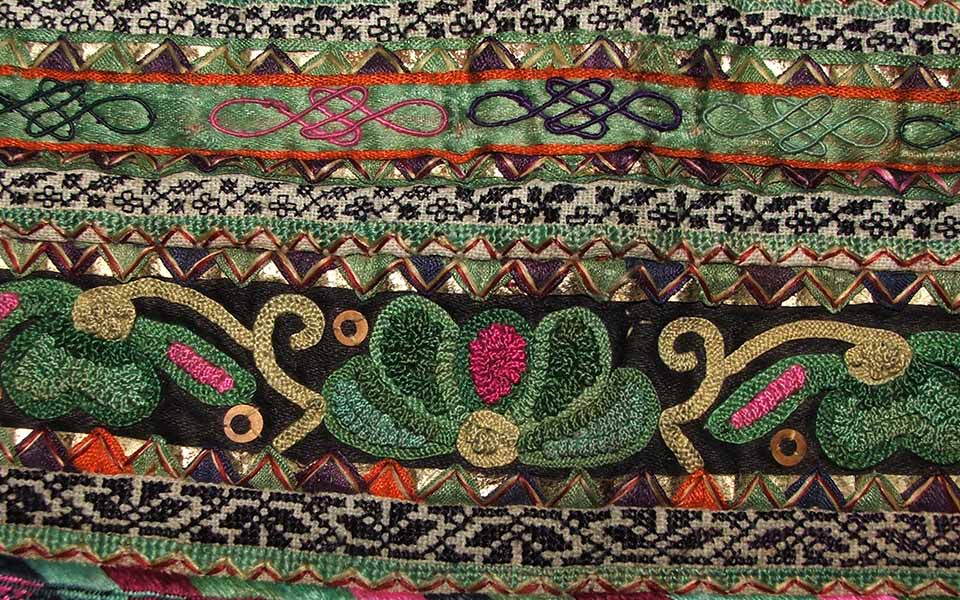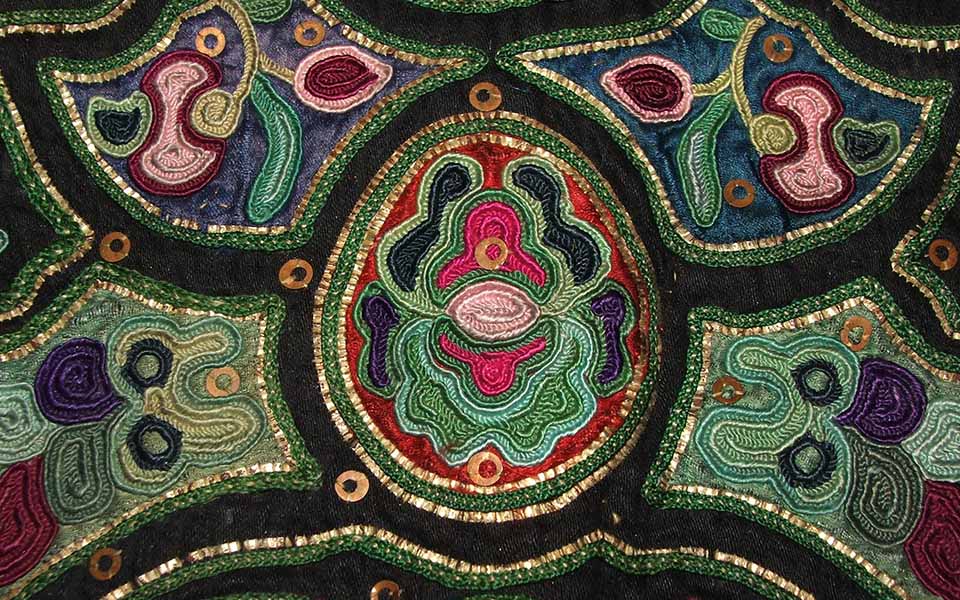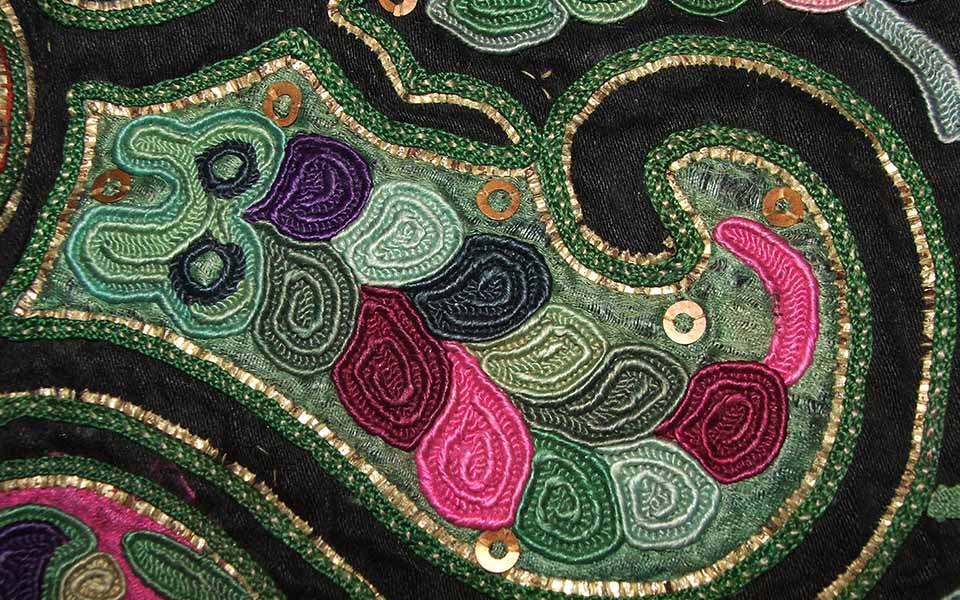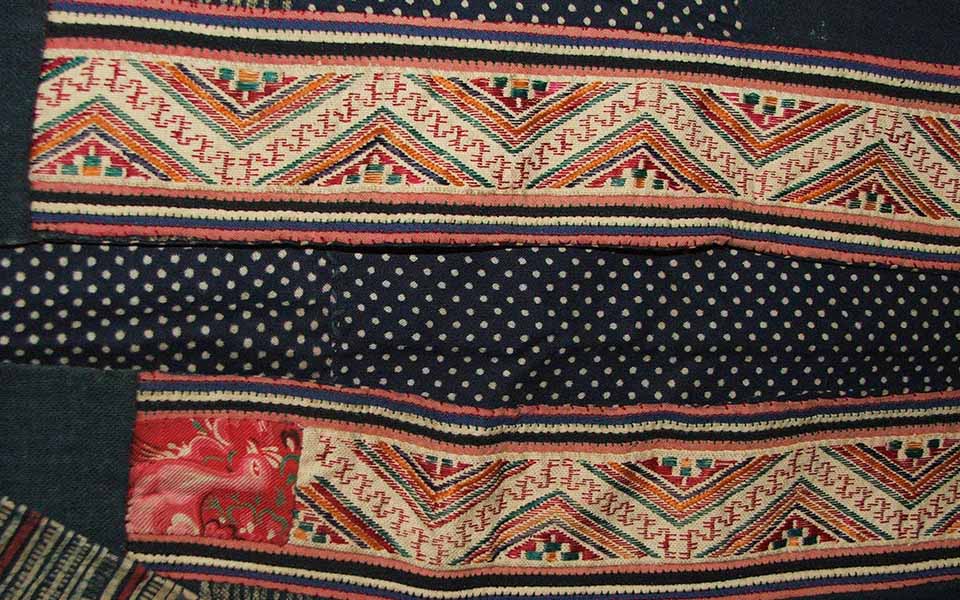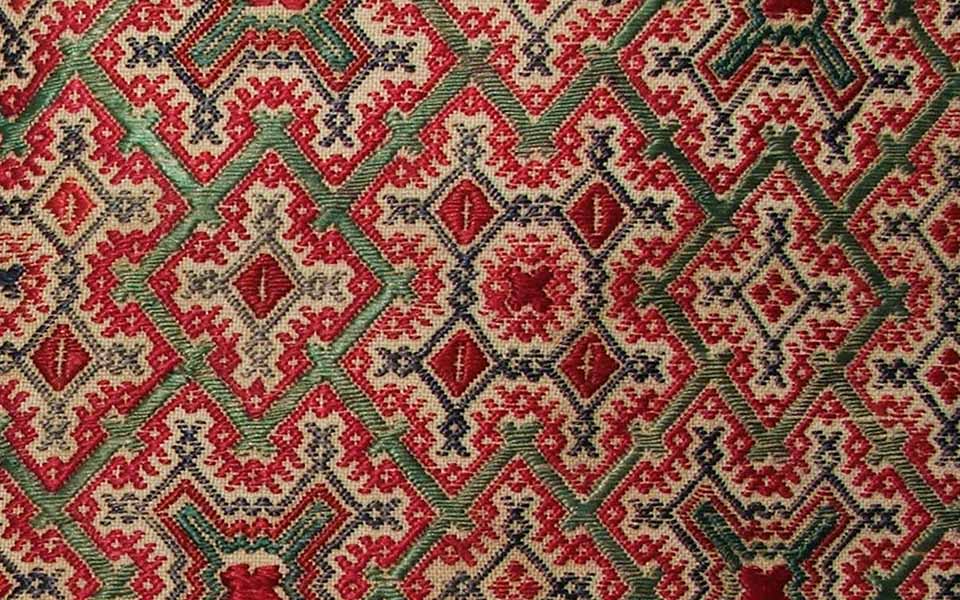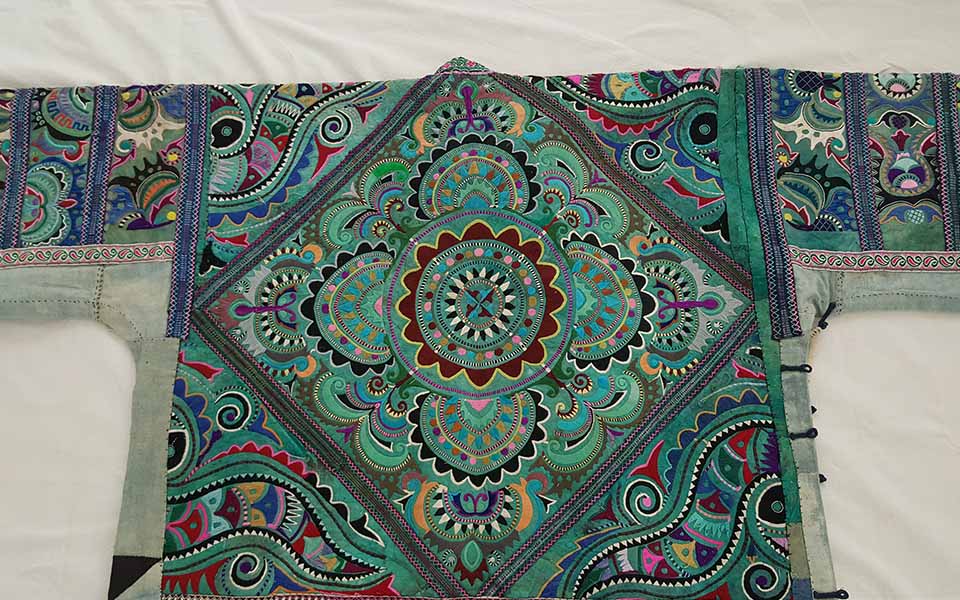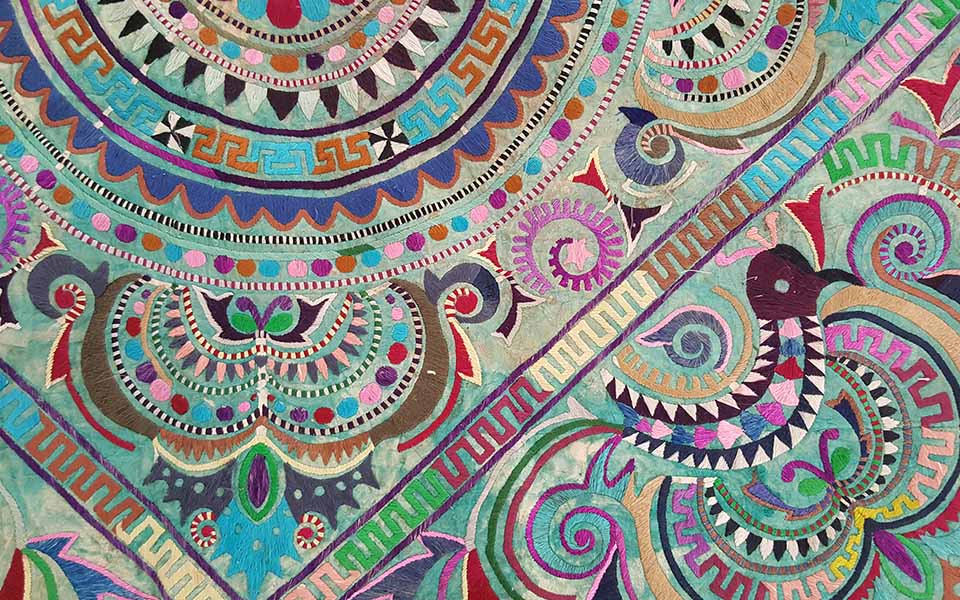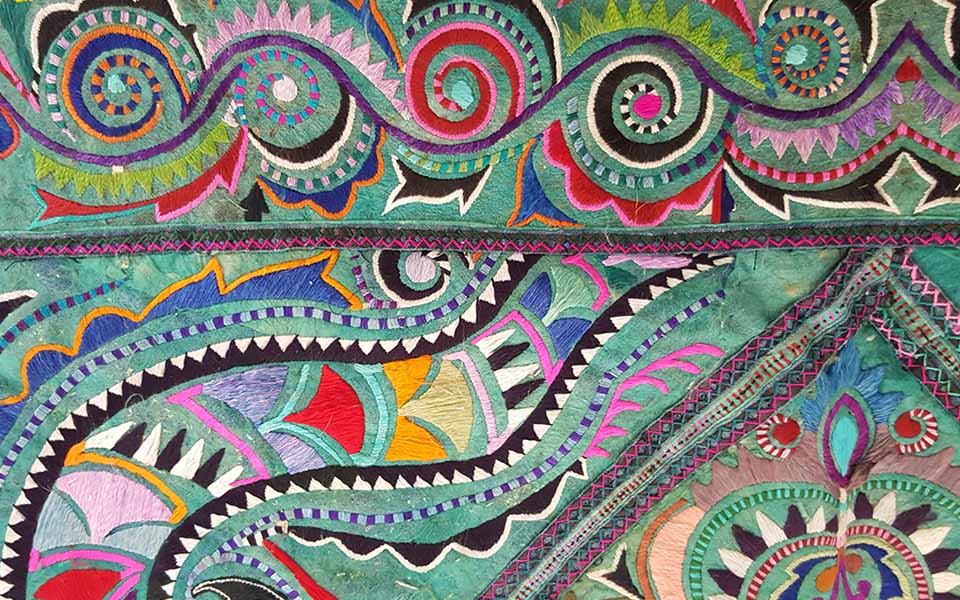HOLMAN HAWES
Textile Collection
The Holman Hawes Textile Collection has been built over 40 years and contains a substantial collection of vintage and antique textiles from all over the world. The focus of the collection is quality embroidery and lace. Many pieces were created in Europe, particularly the laces, but a substantial part of the collection focuses on pieces from rural communities.
Exhibitions
The Textile Gallery 2019
Held in the Agricultural Hall of Fame building at the Royal Agricultural Society Showgrounds, Claremont, WA, this exhibition was the first opportunity to see these exquisitely embroidered items.
From the Holman Hawes Textile Collection, the exhibition focused on textiles from rural Guizhou, China, where until recently, ethnic minorities have been living in isolation for hundreds of years. Most of these heavily embroidered items show the prowess and skill of the makers. Each of the 50+ groups have their own unique style of embroidery, now rapidly disappearing as the youth search for work and leave for the cities.
The exhibition focused on textiles from rural China. Objects displayed were primarily festival clothing including jackets, skirts, baby carriers and children’s hats.
World Textiles
Below is a small selection of interesting world textiles objects from the Collection.
Dehli Shawl
This large square Indian shawl is embroidered in silk floss onto a beautifully fine netting. It has circular paisley leaf motifs around a circular centre with quarter moons into a square box.
This shawl dates from the second half of the 19th Century.
Delhi was one of the urban centres of fine silk embroidery undertaken in workshops in northern India, and shawls produced here were often embroidered onto a fine wool cloth. To make a lighter shawl, the same style of embroidery was done onto net. The floral designs were influenced by European taste, and many of these shawls were produced for the European market.
This shawl with the embroidery worked on gauze (net), is particularly light, is a very elegant shawl of superb quality.
Persian Resht work
(Pooshtee Reschtee, rashti-dozi) Table Cover
This embroidery emanates from Iran, once known as Persia. The Caspian city of Resht was known to have supplied the Safavid court at Ardebil and excelled at this creative endeavour hence Resht embroidery developed. Executed by professional male embroiderers in well-organized workshops, the panels were characterized by the use of felted flannel wool (face cloth), often used in military uniforms of the region. The designs were pounced with powdered chalk. The layers of wool were cut intricately, with each colour being inserted into the previous. This makes a flat cloth, rather than a raised cloth which would be the case with applique. Chain stitched in firmly twisted coloured silks using metal crochet hooks joins the cut out pieces together.
Dating from around 1850, this table cover has a design and colour palette which is very typical of this style. It is in immaculate condition, unfaded and shows no signs of wear. The colours are still as vibrant as the day they were embroidered. The stylised embroidery shows how skilfully the colours have been layered to create this colourful table cover.
Phulkari head cloth or shawl
Phulkari literally means “flower work” and was originally used to describe all types of embroidery. In time, however, the term came to be used only for an embroidered head cloth or shawl, some 1.40 x 2.30m in size. Phulkari are made in Punjab which is between India and Pakistan.
In a phulkari the motifs cover the whole cloth, and large areas of ground fabric are visible. As a rule, the ends have quite different patterns from the centre and are often much more richly worked
This Pulkari is a beautiful example of this style of embroidery done in a silk floss onto a rich rust coloured hand loomed cotton. The silk floss is unspun (pat) giving a lustrous shimmer to the stitches. When embroidered most of the silk remains on the front, rather than wasting silk by having it on the reverse. The motifs are very often taken from every day life such as wheat and barley stalks with ears.
Kuba cloth featuring mud dyeing, patchwork and applique
Kuba cloth is a hand-woven cloth made from Raphia Vinifera palm leaves. Kuba people of the Congo first hand cut, and then weave the strips of leaf to make pieces of fabric, often called raffia cloth.
There are several different sub groups of the Kuba people. Each group has different and unique ways to make the fabric. Some make it thicker, longer, shorter, or with different patches. Each patch is symbolic and many times a piece has many different meanings.
This is a ‘full size’ Kuba cloth is 5.2m long and shows three distinct techniques. The chequerboard patchwork and applique – each panel having a different design and a variety of tonal colours. The third technique is ‘mud cloth’ dyeing, which is then used in strips.
This piece also has an edge of tiny raffia pom poms which indicates that the piece has some age.
Kuba cloth with tiny patchwork squares
Kuba cloth is a hand-woven fabric made from Raphia Vinifera palm leaves. Kuba people of the Congo first handcut, and then weave the strips of leaf to make pieces of fabric, often called raffia cloth.
This fabric is then used to create the long strips which are wrapped around the body. There are several different sub groups of the Kuba people each of whom has different and unique ways to decorate with the fabric.
This unusual Kuba cloth is made entirely of patchworked pieces of hand dyed cloth.
Each of the tiny pieces is one centimetre square and is a ‘tour de force’ of the technique. The raffia cloth is extremely difficult to work with, and to be able to create such a piece is exceptional. The back of the work is beautiful, and could be hung as the front. The cloth is edged with the tiniest raffia pom poms indicating that the piece has some age.
Japanese Textiles
The Japanese class structure had its own very strong impact on textiles. The military government which ruled up to 1868 instituted a rigid class system dictating the materials and dyes suitable for each of social group. Only those in the highest levels of society could wear silk lawfully. This would mean that a farmer producing silk, would not be able to wear garments of the fibre he cultivated.
The Elite social classes were able to commission fabrics from rich silk brocades to the flimsy gauze weaves. Dying emerged as an art form, as did needlework.
The majority of Japan’s population utilised materials which were affordable and easier to access, giving rise to very distinct and recognisable regional specializations. Although it may be thought that one could not rival the other in artistry or creativity, both branches of textile art can be appreciated for the quality of the workmanship and design.
Over the centuries, in the endless quest for the beautiful the Japanese perfected so many different techniques to become masters.
This fabulous video shows the various stages of the making of a handmade kimono with an extra ordinary number of processes and specialist skills.
This fabulous video shows the various stages of the making of a handmade kimono. So many processes, so many specialist skills.
Contemporary silk Homongi Kimono
A Homongi kimono is literally a “visit kimono”. They are a lot less colourful and draw less attention than the more flamboyant Furisode kimono. Their patterns tend to be extravagant and can run over the seams of the kimono. Often one image can seamlessly cover the whole kimono, with an obi adding highlights to the pattern. Homongi are the most palatial and boastful kimono for married women and older unmarried women, only surpassed by the Furisode for formal occasions and weddings.
As they are supposed to show elegance and upper-class status, they are always made of silk. The sleeve length can vary but is longer for unmarried women.
This beautiful Homongi kimono has exquisite embroidery. The design has been hand painted onto the background, then over this is a very fine Sagara knot which is very similar to the French knot. In fact, when both are stitched, it is very difficult to tell them apart. The whole scene has been created by the intensity and size of the knots over the hand painting – truly extraordinary.
Kimono Sample Fabric Bolt
Different kimonos were worn for daily use and for each of the celebrations which took place in life. Some kimonos were ‘ready to wear’, and others, for more special occasions were made to the specifications of the purchaser.
Salesmen would visit with their ‘kimono sample rolls’, from which the customer would select exactly which of the fabrics they would like for their kimono. Each kimono sample roll would have a ‘fashionable’ range of designs in similar colourways. The rolls came in varying lengths, with some of the panels numbered.
This roll contains 43 panels which total 13.37 metres long.
Silk Fukuro Obi
There are a variety of different types of women's obi, and the usage of them is regulated by many rules not unlike those that concern the kimono itself. Certain types of obi are used with certain types of kimono; the obi of married and unmarried women are tied in different ways. Often the obi adjusts the formality of the whole outfit: the same kimono can be worn in very different situations depending on what kind of obi is worn with it.
The Fukuro Obi is one of the most formal Obi’s worn by the present generation. Typical of most quality Fukuro Obi’s this piece is lined in a finer silk to make it lighter and easier to wear.
This beautiful woven contemporary Obi has a very modern design,
Silk Irotomesode Kimono
The unique feature of the Irotomesode is that there are no patterns on the upper half of the body and the sleeves. In the past, stripes or patterns could have been woven or dyed into the background to form a light pattern. The design sweeps across the lower body and usually goes all the way around the kimono, often into the lining. They are always made of silk.
This Irotomesode kimono has a solid colour background. The stunning hand painted kimono design has been created by a master of hand painting. The panel across the lower portion of the kimono features cranes flying over the forest towards the mountains. The depth of colour and the sophistication of the hand painting makes this kimono an artwork.
Stunning Vintage Fukuro Obi
Certain types of obi are used with certain types of kimono; the obi of married and unmarried women are tied in different ways. Often the obi adjusts the formality of the whole kimono ensemble: the same kimono can be worn in very different situations depending on what kind of obi is worn with it.
The Fukuro Obi is one of the most formal Obi’s worn by the present generation.
This woven obi is of a beautiful rich rust colouration, and features a repeat pattern of trees, mountains and swirling clouds above. This pattern is repeated over most of the obi, with a panel 100cms long of plain fabric. The obi is of a medium weight beautifully woven fabric with a water wash pattern featuring subtly behind the design.
Panel from Vintage Silk Fukuro Obi
This panel has been taken from a formal Fukuro Obi. This is one of the most formal worn by Japanese women. This exceptional panel shows the exquisite skill of the Japanese master craftsmen. When designing an Obi, the master craftsman will have known which parts of the garment would be seen by the viewer. The quality workmanship was therefore designed to be seen, and not to be hidden away by the wrapping and knotting of the garment.
This very organic design has been hand painted onto silk. The fronds are in a variety of metallic colours and hand embroidered in silk thread, which is enhanced with gold highlights. The borders are finished with a fine gold thread.
Chinese Textiles
Silk is so intricately linked with the history of China, that it seems as tho this extraordinary fibre and China could not have existed without each other. For centuries the highest quality of silk and embroidery has adorned the beautiful garments and palaces of the Chinese emperors and their families to distinguish them from those they ruled.
For many centuries, silk was China’s most valuable commodity. The spread of sericulture (silk cultivation) and the techniques of silk embroidery were so widespread throughout Ancient China that by the fifth century BC, more than 1/4 of the Chinese population were employed producing silk and creating silk embroideries. Throughout China many provinces became well known for their distinctive styles of embroidery.
Fine Kesi woven Chinese Imperial Robe
This particularly fine example of a Kesi Imperial robe finely woven with gold through the whole background dates from between 1850 and 1890.
It features 9 five claw dragons chasing the flaming pearl which are placed 3 on the front, 3 on the back, one on each sleeve and the 9th hidden under the front flap of the garment. The cosmic sky is enclosed at the bottom of the garment by a sea of waves punctuated by geometric shapes that are evocative of mountain peaks (isles of immortals) and clouds. This design is repeated at the sleeves. The sleeves are horseshoe cuffs, a reminder of their Manchu background.
Auspicious symbols can be found. Among them is the Chinese character shou , meaning long life. The bat, a symbol of happiness, appears many times. The word ‘bat’ (fu) is a visual pun for the word ‘happiness’ (also pronounced fu). The bat is combined with peaches, which are symbols of longevity; and the rebus, meaning ‘May you live long and be happy’. The bat is also depicted with a swastika, which means wan in Chinese (ten thousand); the rebus means ‘may you have the greatest joy’.
Chinese Opera Dolls
These dolls from 1890 – 1900 were thought to be made showing characters from different Chinese Operas.
Thanks to the research by the TRC in Leiden, Netherlands, this type of doll is usually known in the Western world as a ‘Chinese Opera Doll’, may not related be related to opera theatre at all. Instead, it would appear that such dolls were associated with the many orphanages opened by various Christian missions in China. In the 18th and 19th centuries, numerous missionary associations from Northern America and Europe were active in the country to promulgate Christianity.
Among their initiatives was the establishment of many orphanages, to care for abandoned or orphaned children in major cities of the country, such as Shanghai. The dolls were given to girls in the orphanages who crafted their dresses and embroidered them, to raise money for the maintenance of the orphanage itself.
Chinese silk embroidered panel
Dating from around the late 1900’s this beautiful miniature embroidery shows the dexterity of the Chinese embroiderers. Their exceptional skill in laying unspun silk in satin stitch shows in this piece.
Featuring flowers and leaves in subtle soft blues, this is a delightful piece of work. The border of black and deep ecru is hand stitched.
Framing is of exceptional quality.
Tribal Textiles
One of the cornerstones of the Holman Hawes Textile Collection is tribal textiles, many of which have been collected while travelling in the region. Here are just a few examples of the wide variety of items in the collection.
Chola from Thana Bula Khan, Sindh Province, Pakistan
The arid province of Sind in Southern Pakistan has always been known for its embroidery. The girls of the various farming, herding and merchant castes of Sind have a dowry tradition, in which the girl to be married, will create with the help of her female relatives, an embroidered trousseau consisting of costumes for herself, for the bridegroom, hangings for the home, quilts, and even trappings for the domestic animals, camels, horses and oxen. All these will be presented at the wedding ceremony to show her prowess with a needle and to prove that she is ready to take up her duties as wife, mother and home maker.
Thano Bula Khan is home to the Lohana, rich Hindu merchants. Lohana women work a densely embroidered marriage tunic known as chola or wedding kurta. They are worn with brightly coloured shawls and trousers.
This very heavily embroidered garment is completely different back and front and shows the prowess of the embroiderer. Using silk embroidery on a silk and cotton ground it features mirrors and sequins
This garment is probably dated from the mid 20th C.
Hazara purse
The Hazaras from central Afghanistan are known for working embroidery on cotton or silk material with very fine straight or herringbone stitch. Hazara embroidery is a form of counted thread work using the even weave fabric to count the size of the stitches. Their work is generally very fine and precise.
Given the counted nature of the work, the Hazaras from Ghazni produce designs based on rectangles or squares, which enclose strictly geometric patterns of chequered bands or lozenges. These are usually multi-coloured and worked in silk thread, with dividing lines worked in black and white double running stitch.
This exceptionally fine purse is embroidered stitched with silk on an extremely fine cotton ground. The geometric design covers the entire surface of the purse.
Dongaria Kondh Kapdaganda (shawl)
Kondh is the largest indigenous group of the Indian state of Odisha. The Kondh has many communities one of which is the Dongaria; hence they are referred to as Dongria Kondh.
The Dongria Kondh respect nature and live in harmony with the forest. They practise farming, hunting and gathering. Their reverence for the forest is reflected in their visual language, oral traditions and everyday activities. The symbols of hills, of the Forest God and the Earth Goddess are rendered in the form of embroidered motifs on the Kapdaganda, their traditional shawl. It is locally hand-woven cotton cloth and bears intricately embroidered motifs. The embroidery is done by Dongria Kondh women. Kapdaganda is specific to the Dongria Kondh and is a sacred textile.
The women embroider by counting the threads of fabric and embroider uniformly along the weave as a result of which the motifs appear symmetrical on both sides of the fabric.
Yao hat with horsehair crown
Rare Antique Yao Chinese Minority Horsehair and Silk Embroidered Hat
The Yao were master crafts people and not only used horse hair within their embroidery, but they also wove it to create hats.
This unique hat with a crown of interwoven black horsetail hair topped with a round silver disk, with silk and beaded tassels; main brow area of pink silk is finely decorated with satin stitch and features many of the auspicious symbols including fish and dragons. It has small roundels of silver stitched around the brim and is edged with black and white beads. The crown comprises finely woven horse hair, joining at the crown with more rows of weaving and a patterned silver disk.
This is probably first half of the 20th C.
Miao Jacket Panel
Suoga Township, Luzhui, West Guizhou, China
A beautiful panel was made women of a Miao hill tribe near Taijiang, Guizhou, southwest China. This would have been made as one of many panels and put together to create a festival jacket for a young woman. The panels would decorate the collars, cuffs, shoulders and lapels of the festive ‘courting’ jackets which mothers would have created for their daughters.
The panel includes the applique of handmade braids surrounding fine embroidery. It also includes finely folded points in metal and silk which are over embroidered. The design shows a butterfly which features in a Miao creation story.
Early to mid 20th Century in excellent condition.
Miao Jacket for a woman
Suoga Township, Luzhui, West Guizhou, China
The Miao of Suoga village are known as ‘Long-horn’ Miao after their voluminous wigs wrapped around a long ox-horn shaped wooden comb. The comb which is inserted in their own hair, is coiled with hemp yarn and bunches of hair belonging to their mothers and grandmothers. It is thought that this kind of hairstyle is probably inspired by the ancient zhuaji, a hair bun tied with hemp yarn.
This jacket has a long back panel. The wax-resist geometric design adorning the front is in very simple rows. An embroidered panel is inserted at the neck, with five rows of plain fabric either side. The sleeves are entirely coloured wax resist in red and yellow, with the indigo colour.
The upper back is in the same design as the sleeves. Below this is a panel of exceptionally fine embroidery in satin stitch in red and green. Underneath this are strips of embroidery, plain black cloth, and insertions of very fine rows of plain fabric.
The jacket is worn with a fully pleated skirt.
Mid 20th C
Hundred Bird Coat
Women of the Miao ethnic minority group in Danzai County, Sandu Shui Autonomous County, Leishan and Rongjiang county, Guizhou, southwest China embroider Hundred Bird Costume for the Spring Festival. Originally worn by the village chief on major occasion, this coat is now festival attire for the entire village.
The fabric is a hand made sheet of the finest silk felt, which is then heavily embroidered with patterns of frogs, dragons, birds, butterflies and insects, symbols of the Miao’s creation story. It is also edged with chicken feathers which float when the wearers dance.
The Miao hundred-bird dress, which is so skilfully made, is an embodiment of Miao culture, and is hailed as a "masterpiece". This jacket has a matching hat. Last quarter of 20th C.
Selling Textiles
We are always interested in purchasing your antique textiles. The rare and beautiful is of particular interest.
Since 1990, Collector Gail Hawes, has purchased fine quality textiles, often embroidered, together with tribal antique textiles from over the world. Gail is a specialist in Chinese Tribal textiles. She take great pride and joy in advising and running attic investigations and clean outs with experienced and educated personal to help you liquidate your holdings.
What we buy:
-
Antique and vintage embroideries, textiles and weavings from near and far.
-
Fine handmade antique lace, wedding veils, shawls and lace clothing.
-
Traditional and ceremonial clothing from many cultures including shoes and handbags or evening purses. Shawls, including Kashmir Shawls,
-
Antique linens, fancy tablecloths and bed linens.
Please complete the contact form with details of the items you wish to sell. Please include photos.
Contact
Holman Hawes Collection
Do you have a favourite place where your fellow textile enthusiasts can enjoy seeing masters at work or masterpieces? If so, let us know, and we will add it to our textile world map
